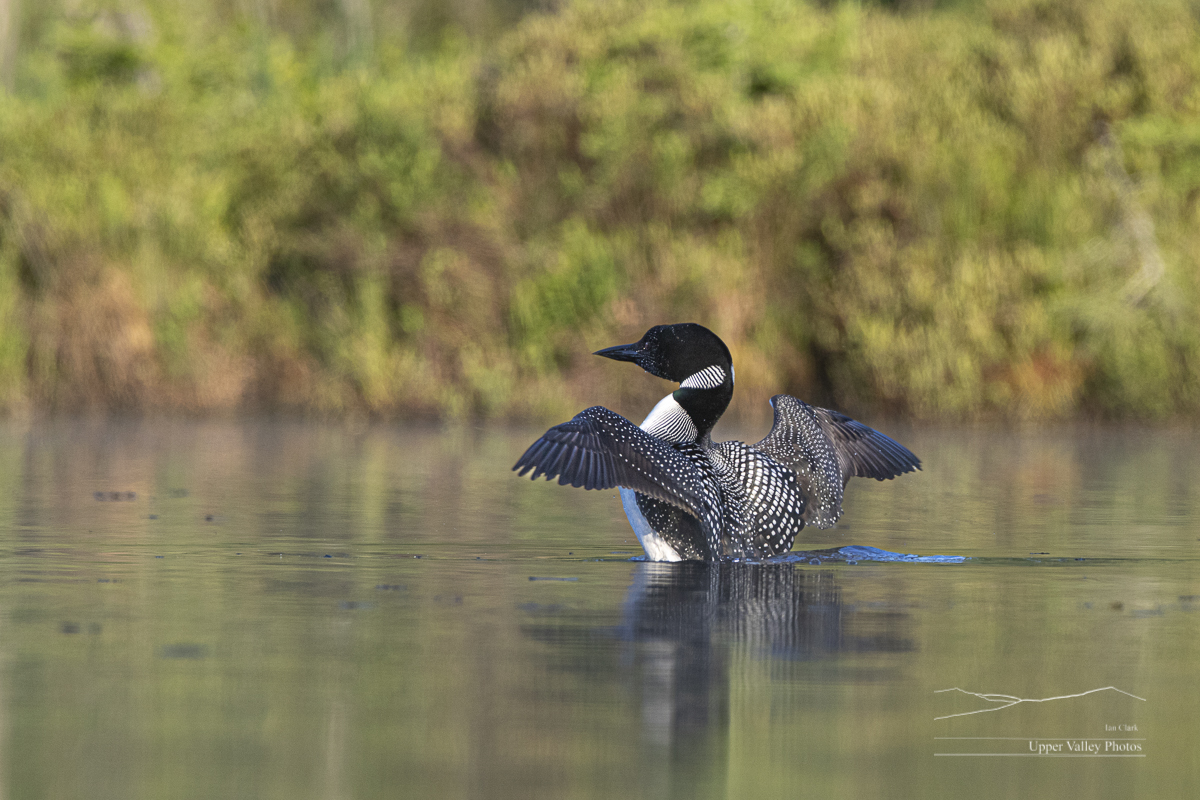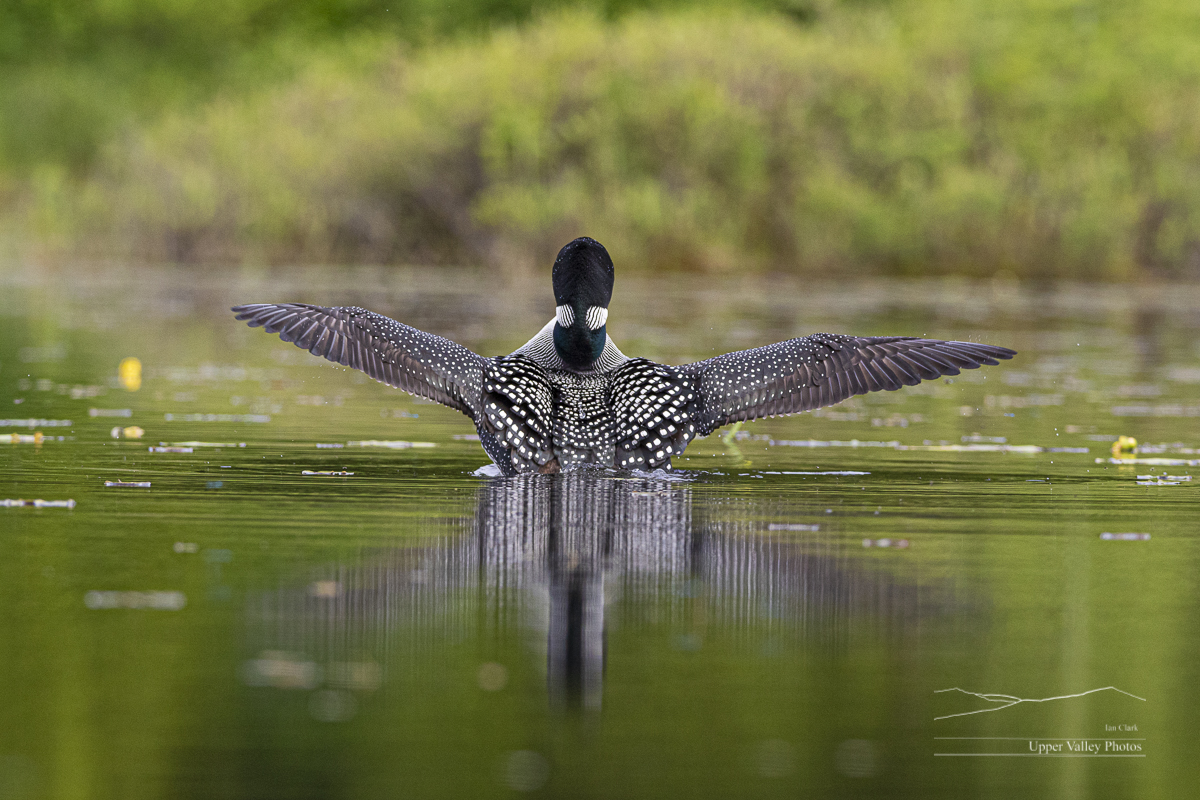Posts Tagged: birding
A Quick Check on the Bluebirds
I’ll be giving my slideshow An Uncommon Look at the Common Loon at the Morrill Memorial and Harris Library in Strafford, Vermont, Thursday April 26 at 7:00.
We had a foggy and dreary morning here on the hill this morning. None of us was in any real hurry to get up and about. Including Mrs. Bluebird. She got up, looked out and went back to sitting for a few minutes.
The chicks should hatch between May 5 and May 10.
We’re watching eastern bluebirds in a nesting box with a camera installed inside. We can watch without disturbing the birds.
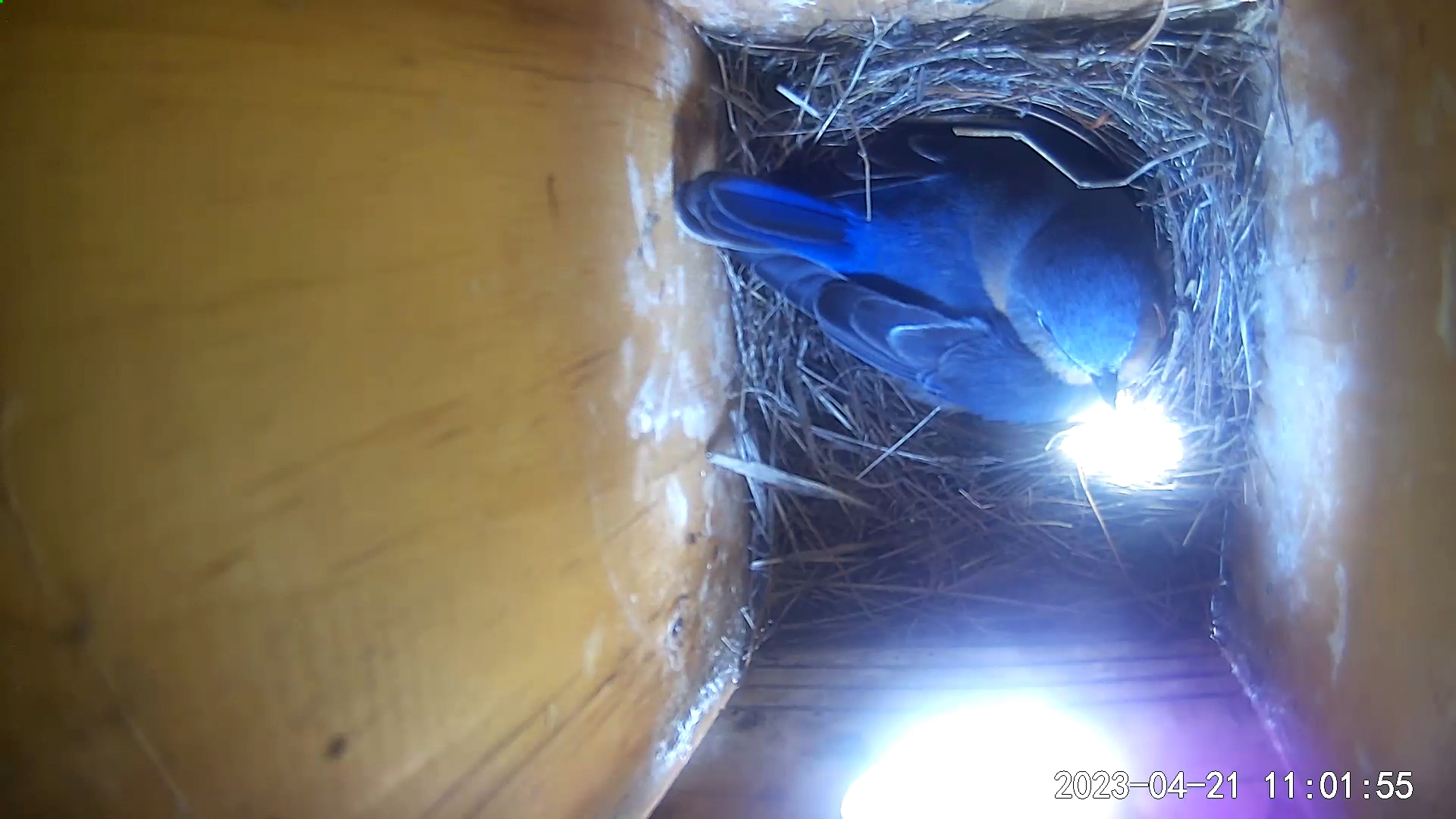
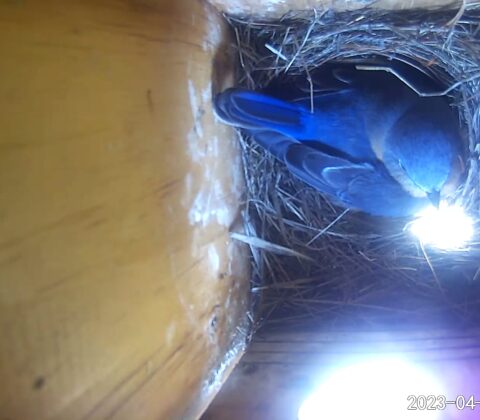
Bluebirds Have Five Eggs
Mrs. Bluebird waited for me to start to post that she had started sitting on four eggs when she surprised me. She ventured out of the box and there’s a fifth egg. She spent the night sitting on the eggs last night, that starts the clock on incubation. The chicks should hatch between May 5 and 10.
We’re watching eastern bluebirds raise their family in a camera equipped nesting box. We can watch without disturbing the birds.
Spring Has Arrived in the Upper Valley
Spring has arrived in the Upper Connecticut River Valley. That doesn’t mean we’re done with winter, just that you can’t expect seasons in Vermont to progress in a logical order. With water thawing, I stirred from my hibernation and ventured out around the area to see who was out and about. Signs that spring has arrive that I found included a kingfisher, a great blue heron and – definitive proof – a painted turtle basking.





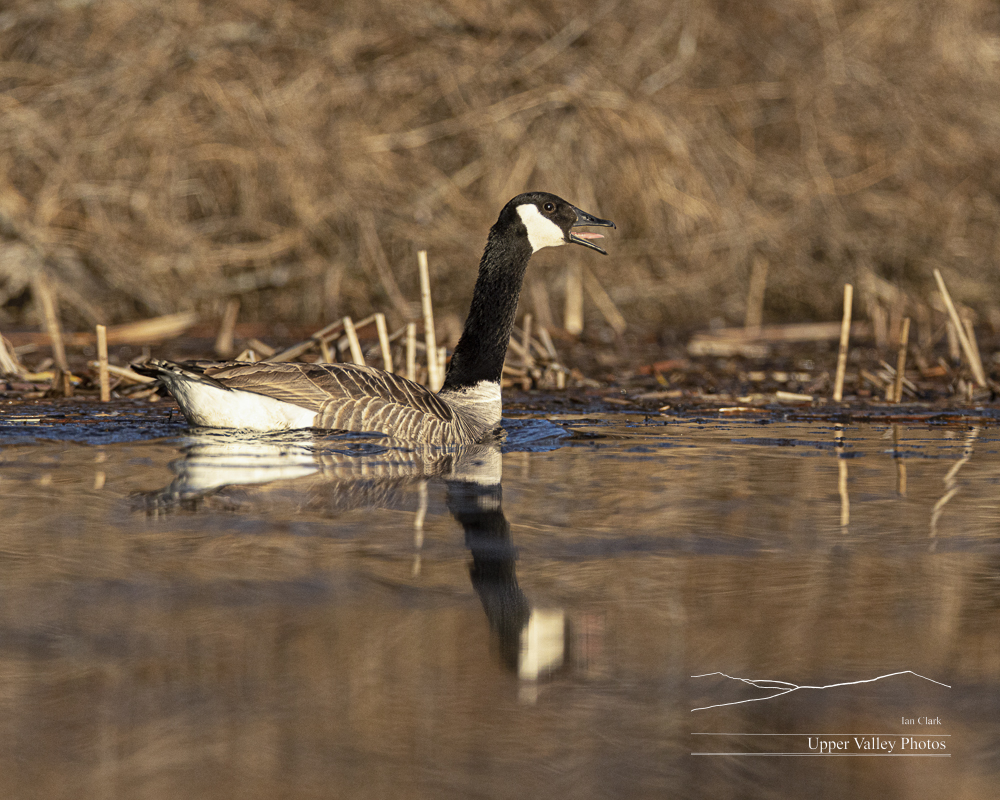

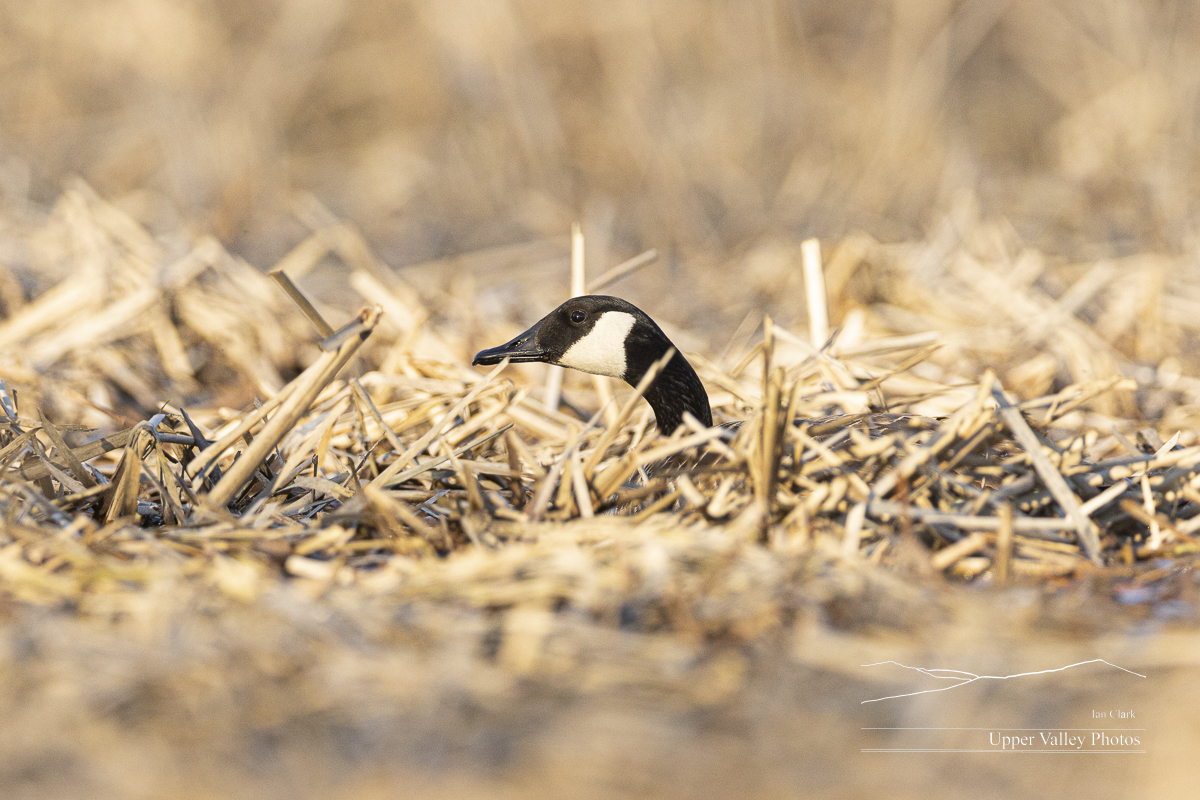


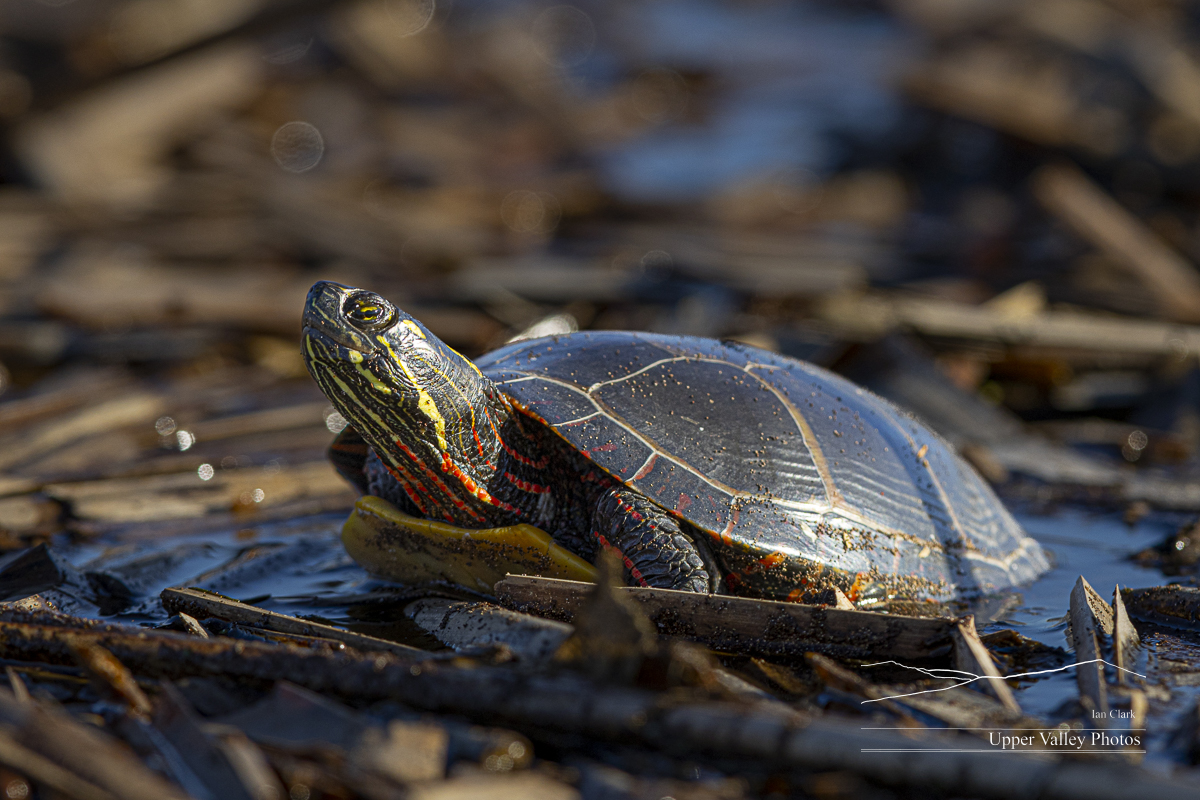
One Loon Family Still Here
Dawn yesterday found a cloudless sky and with the temperature here on the hill at 32°, I figured I could get the kayak around the pond. I headed north to check on the Westons. This is the family that faced intruders for several weeks in the spring. They hatched two chicks and one survives and is 15 weeks old.
I’ve got a couple appearances coming up. Wednesday October 26, I’ll be at the Bugbee Senior Center at 1:00 p.m.with my slideshow An Uncommon Look at the Common Loon. The show is open to the public, see the details on their site: https://www.bugbeecenter.org/activity/special-events/bugbeetalks/.
There’s a photographic print version of An Uncommon Look which I’ll be hanging at the Kellogg-Hubbard Memorial Library in Montpelier on November 1. It will stay up until November 30. I’ll be giving An Uncommon Look at 6:30 p.m. on November 9 at the Library. Free and open to the public.
And, I’ll be at Craft Vermont November 18-20, 2022 at the DoubleTree in South Burlington. Come on by and say hello.
When I got to the loon’s pond, the sun had yet to hit the tops of the trees along the west side of the pond and it was a refreshing 29°. There was only the slightest trace of ice along the shore, no problem for a kayak.
While I was launching the kayak, I noticed what looked to be a large hawk land in a tree towards the other end of the pond. Too far away for a good ID and with the loons talking I headed out to find them.
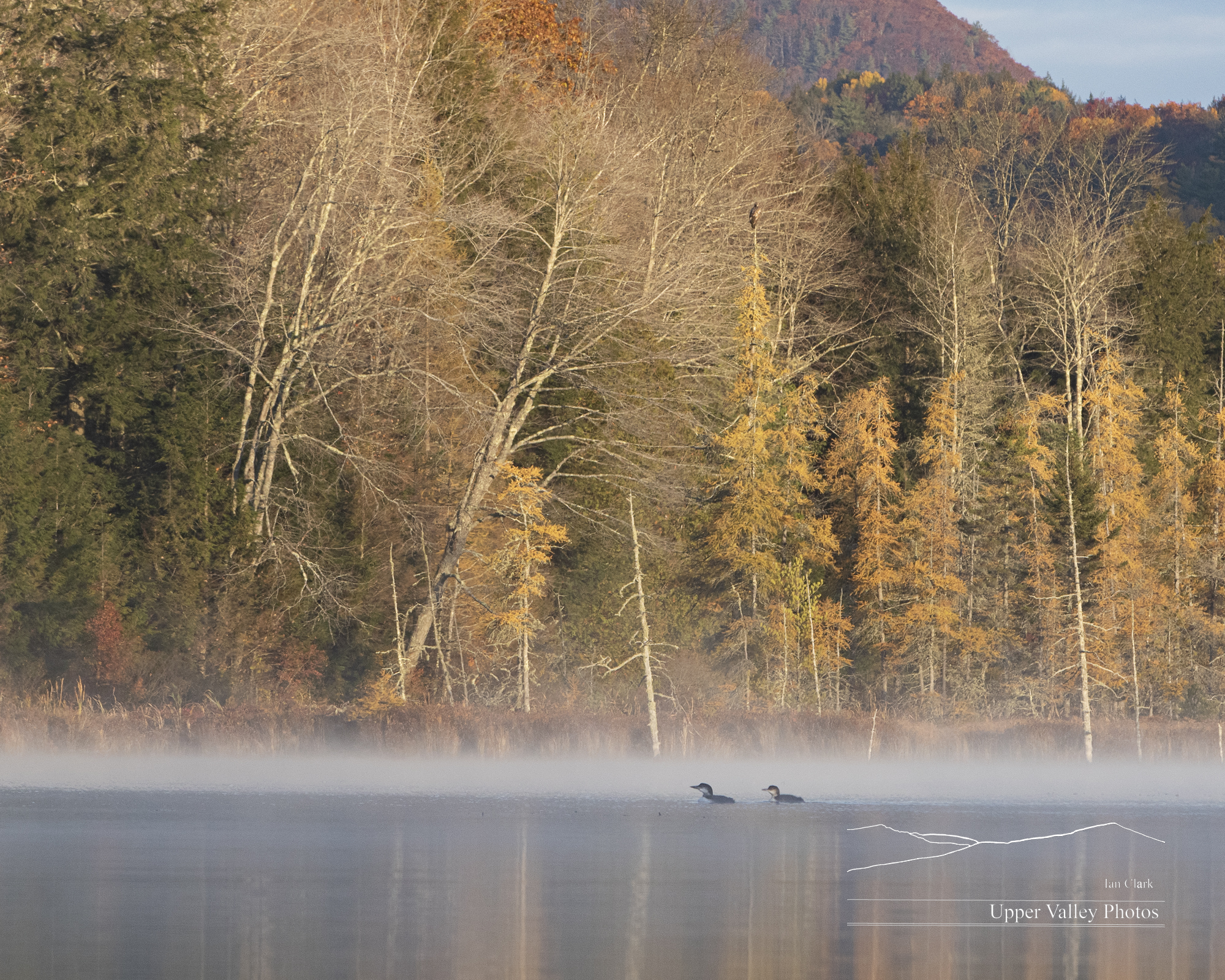
There were two loons on the pond. One I suspect is mom, the other is our surviving chick. When I found thems, they appeared agitated. They were swimming back and forth, fairly rapidly and making low hooting calls. After I watched for a few minutes, it occurred to me to check that hawk out. It turned out to be a juvenile bald eagle. One of the residents on the pond told me earlier that a young eagle had been harassing the chick. The eagle is at the top of the tree just right of center.

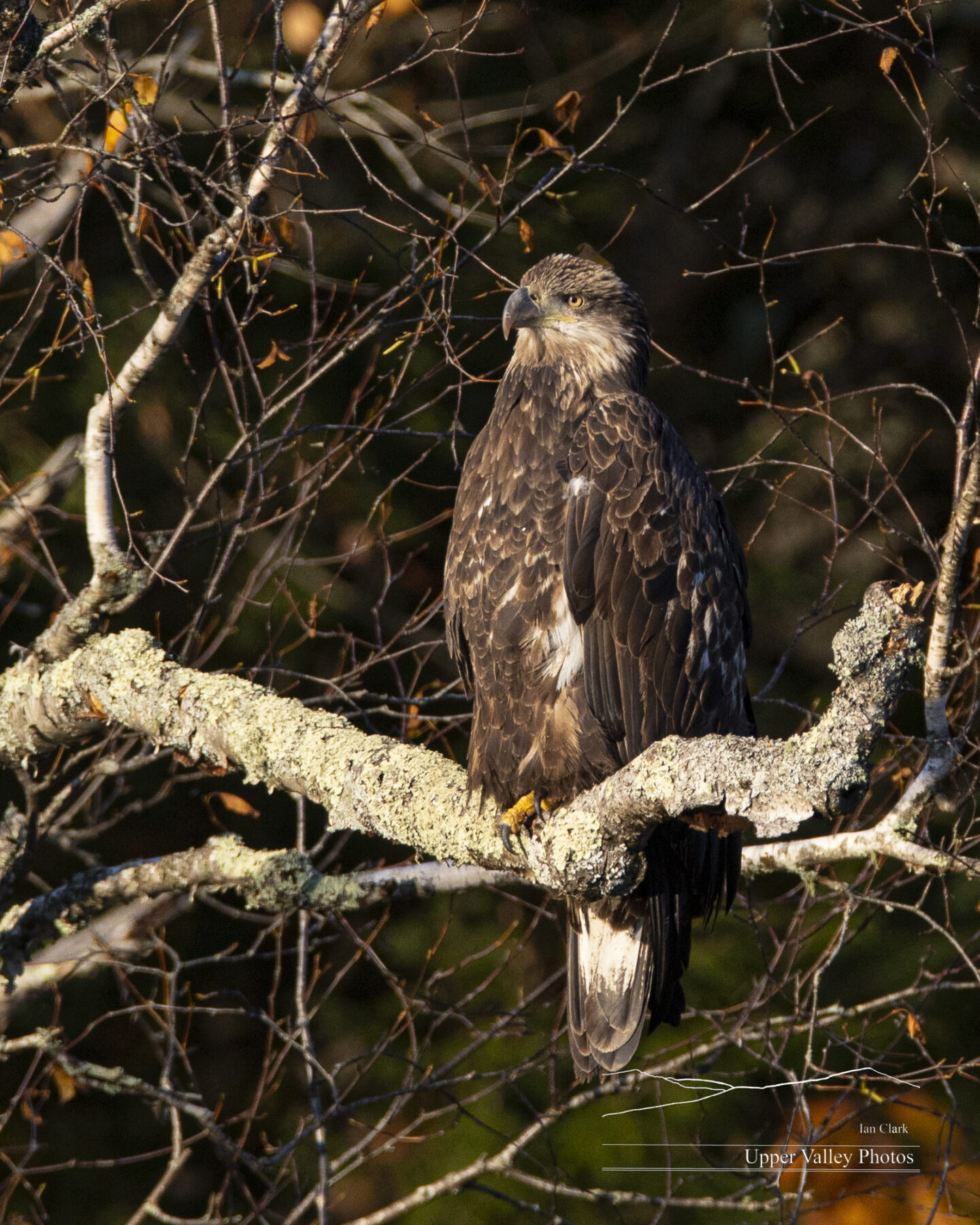

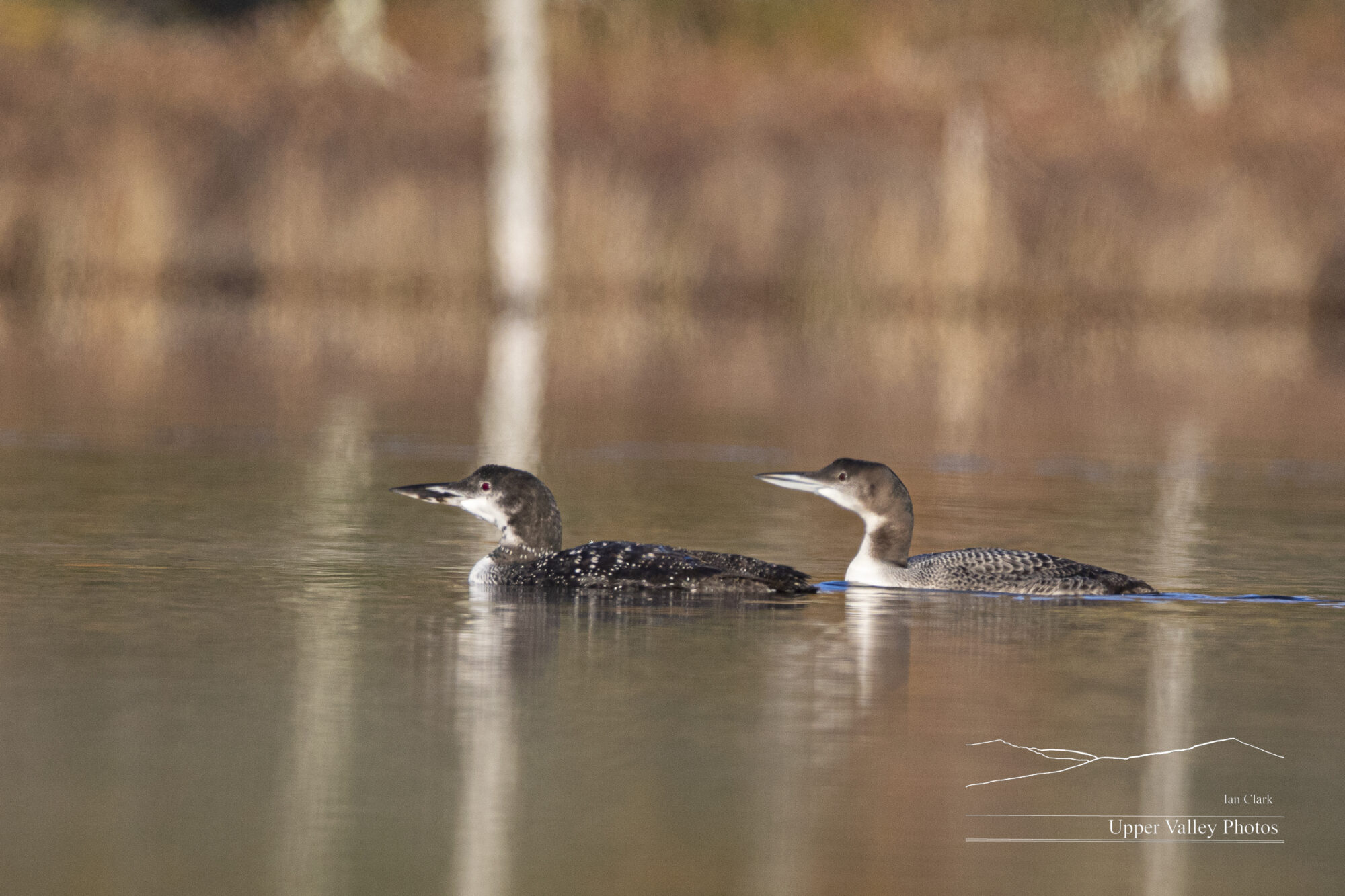
I suspect that’s mom in front. My guess is based on not hearing the adult loon yodel. The male on the pond this year was not shy about yodeling at eagles or most anything that moved along the shore. Our chick is a male, he tried a couple of yodels that didn’t impress the eagles. Note that mom has pretty much changed into her winter plumage.

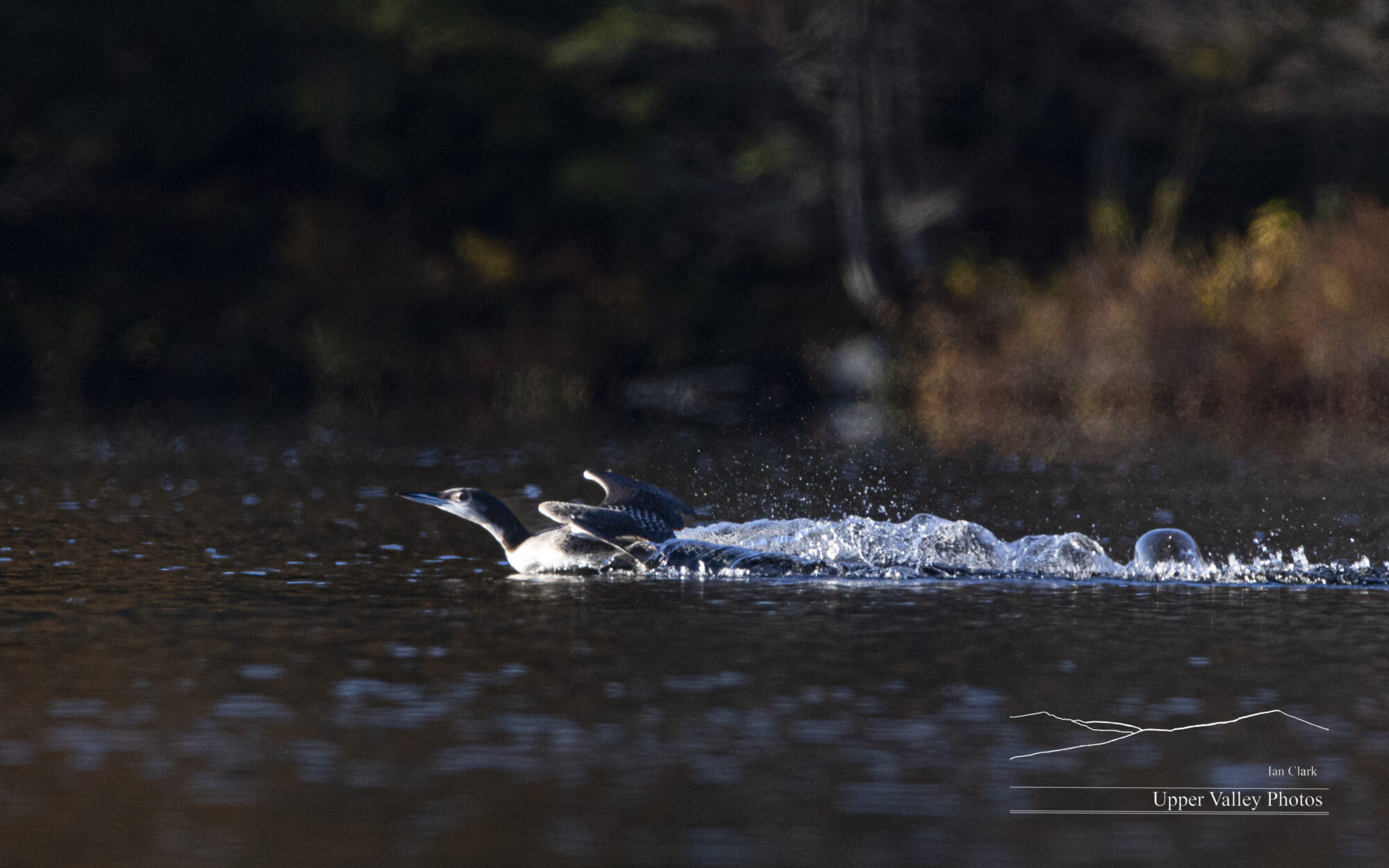
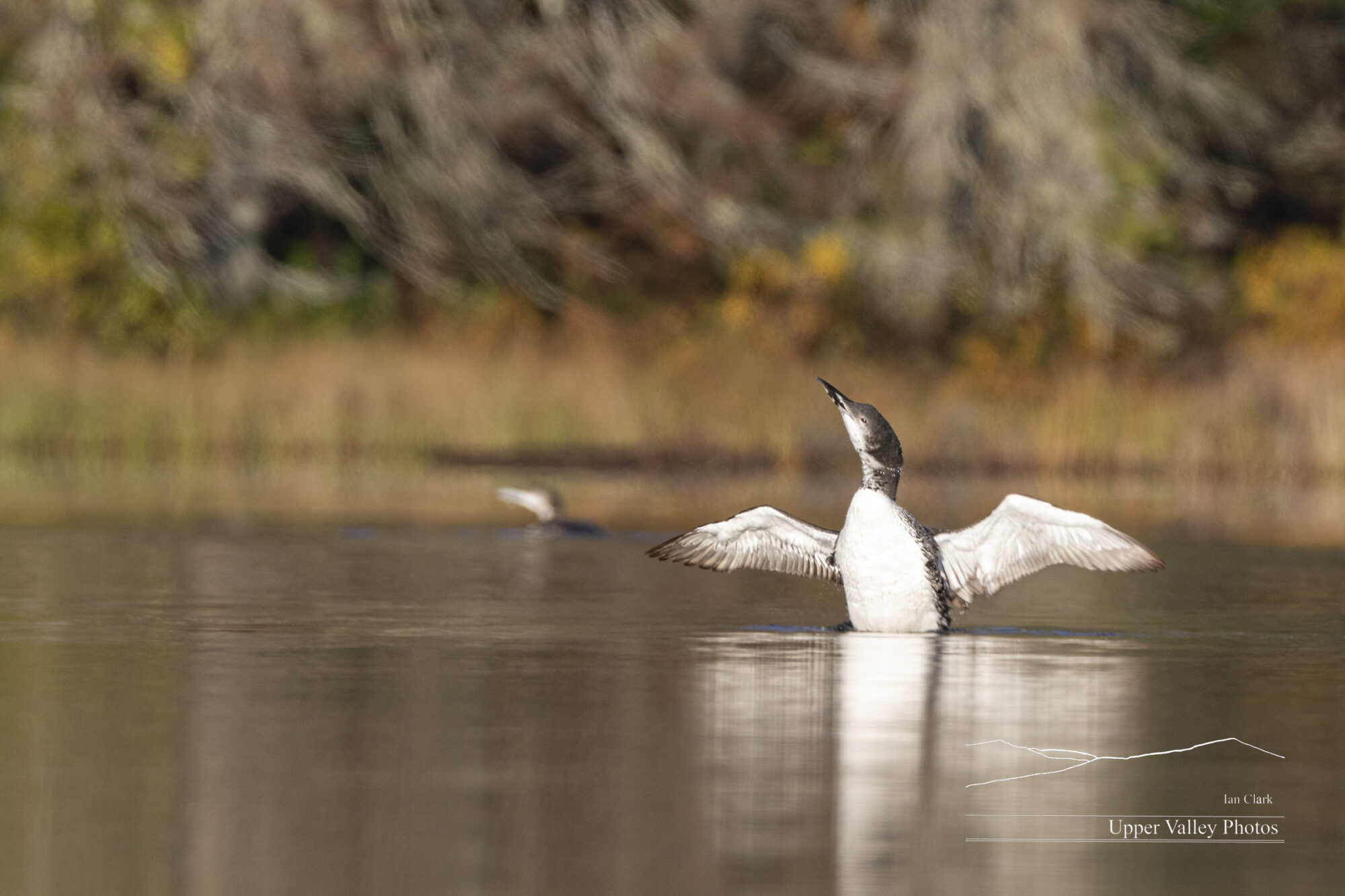
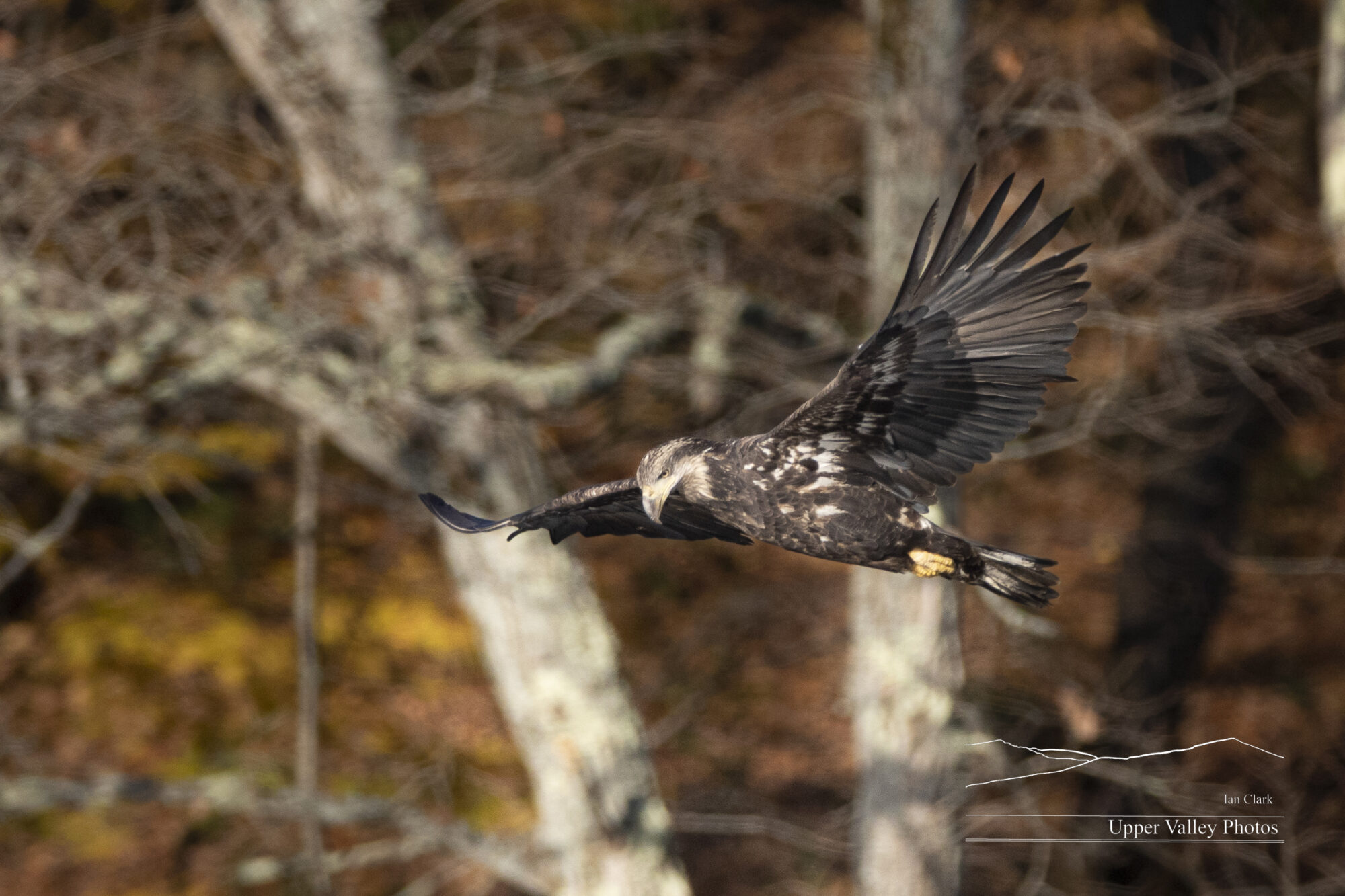


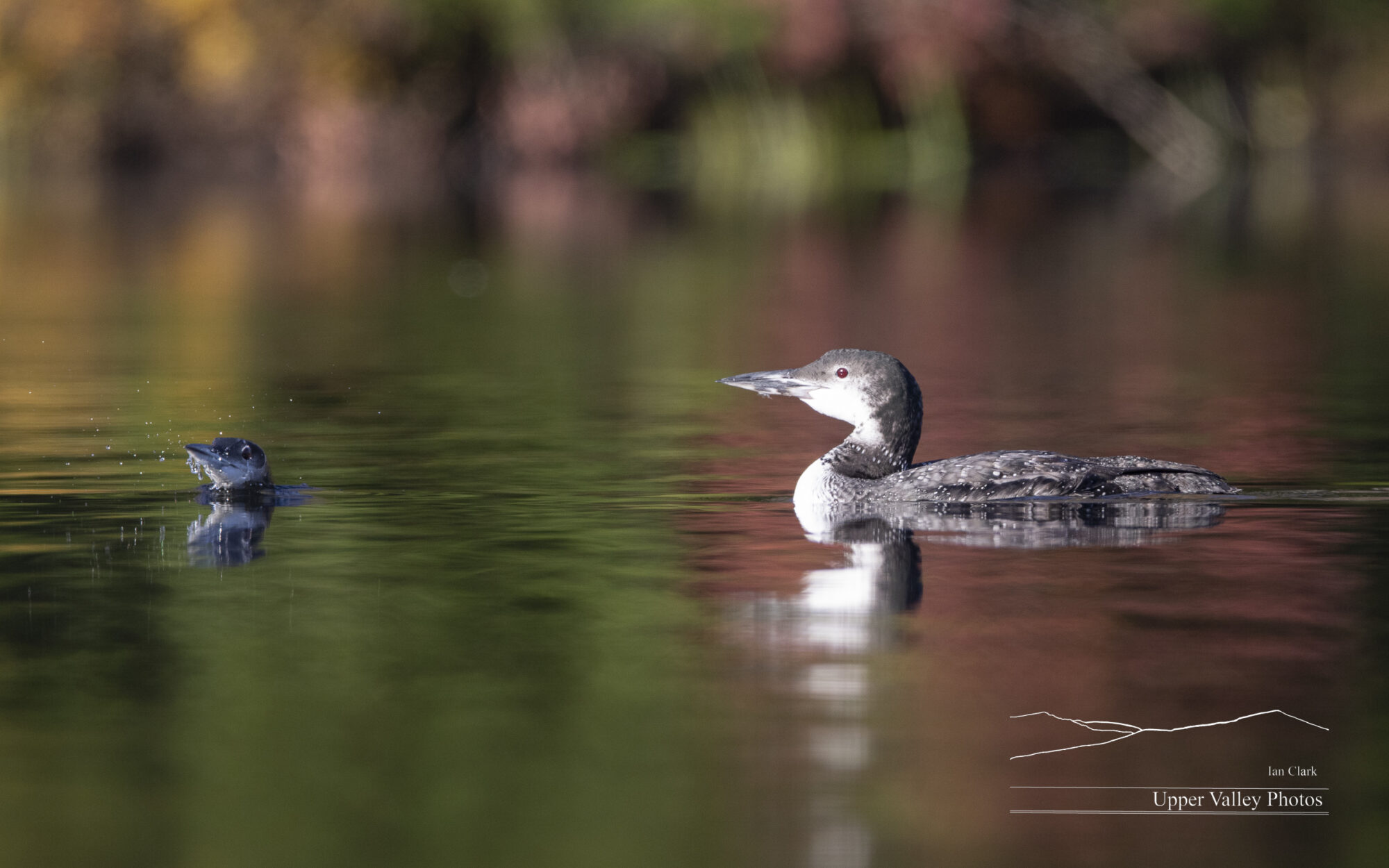
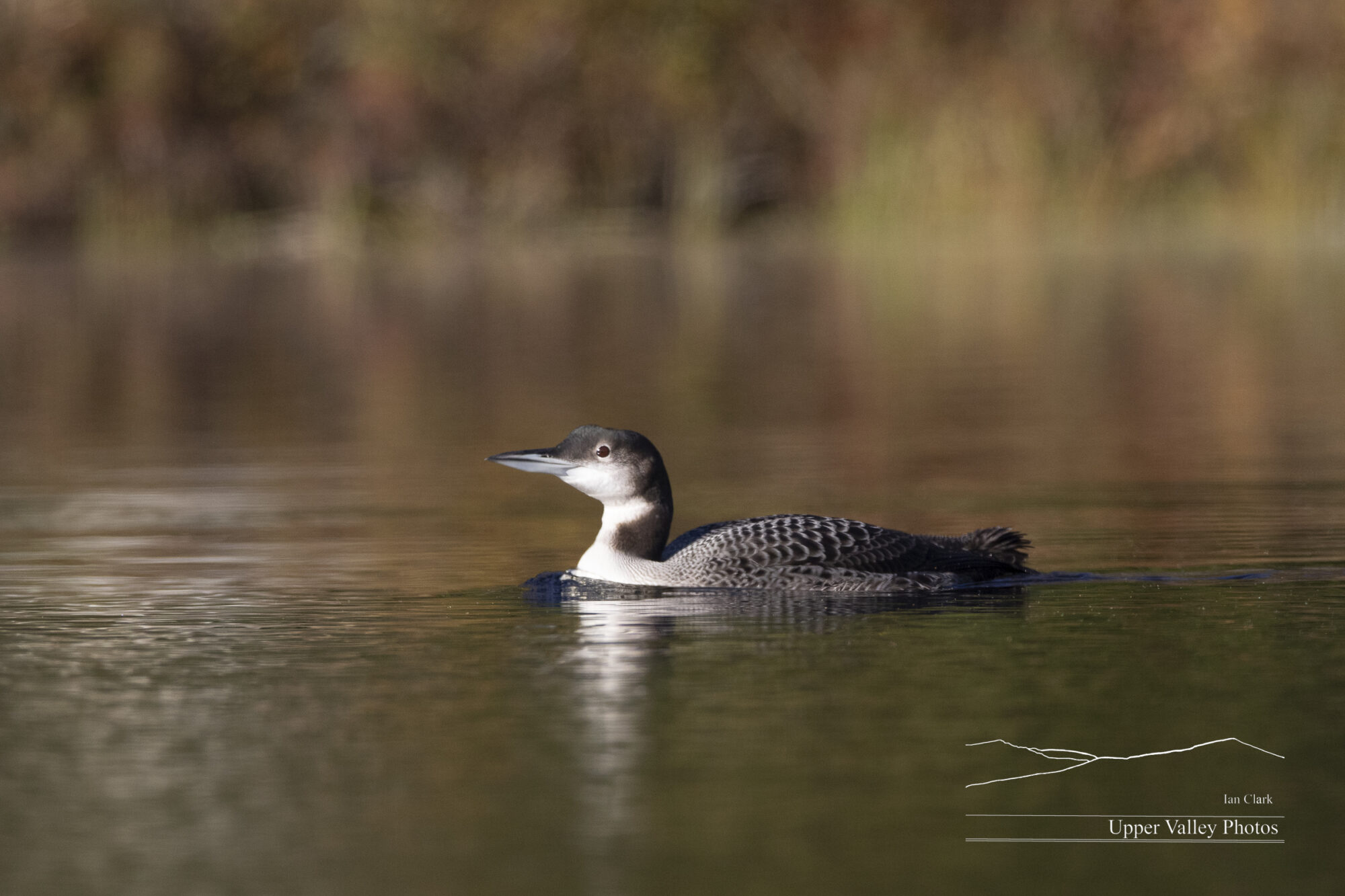
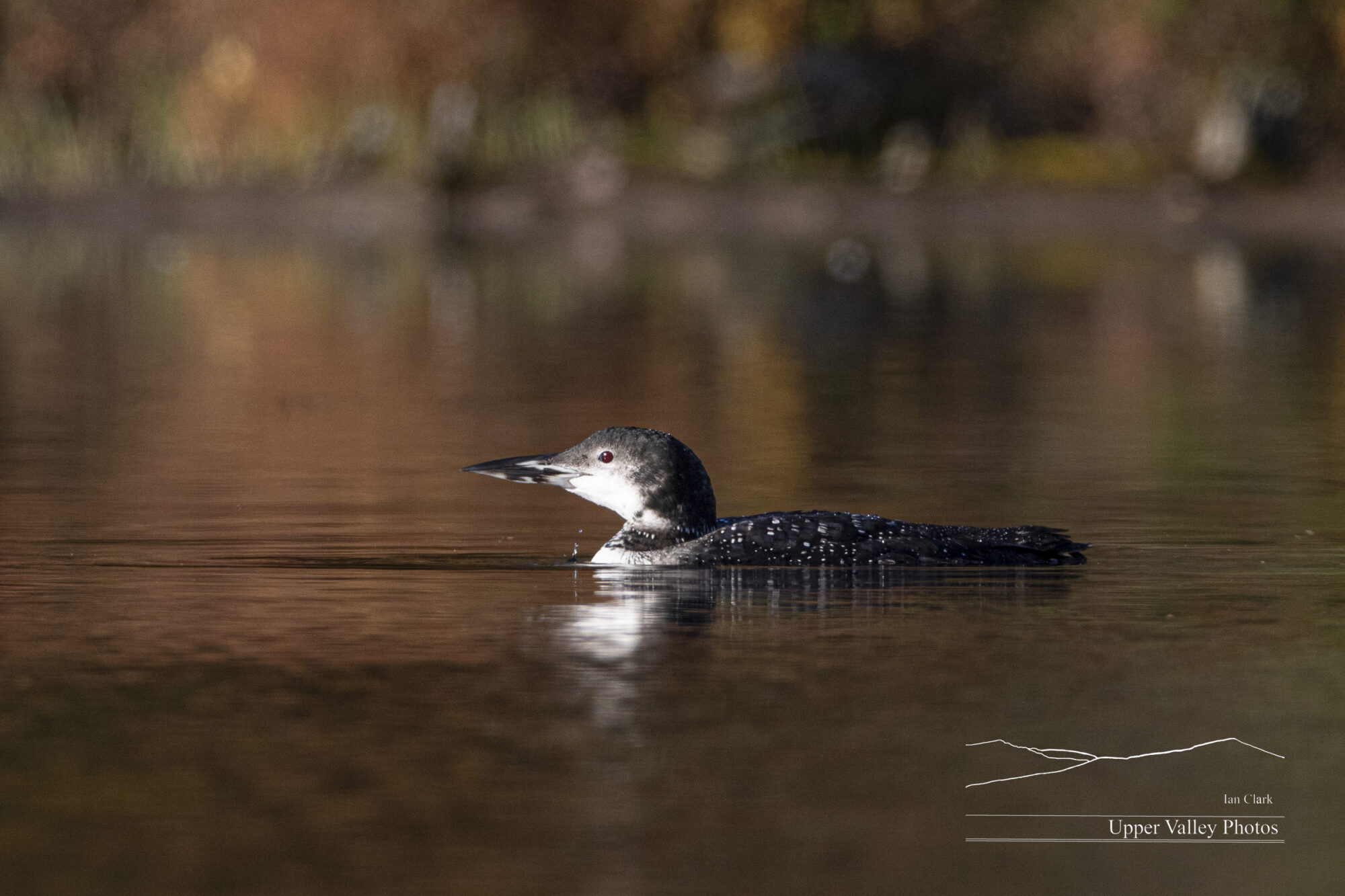
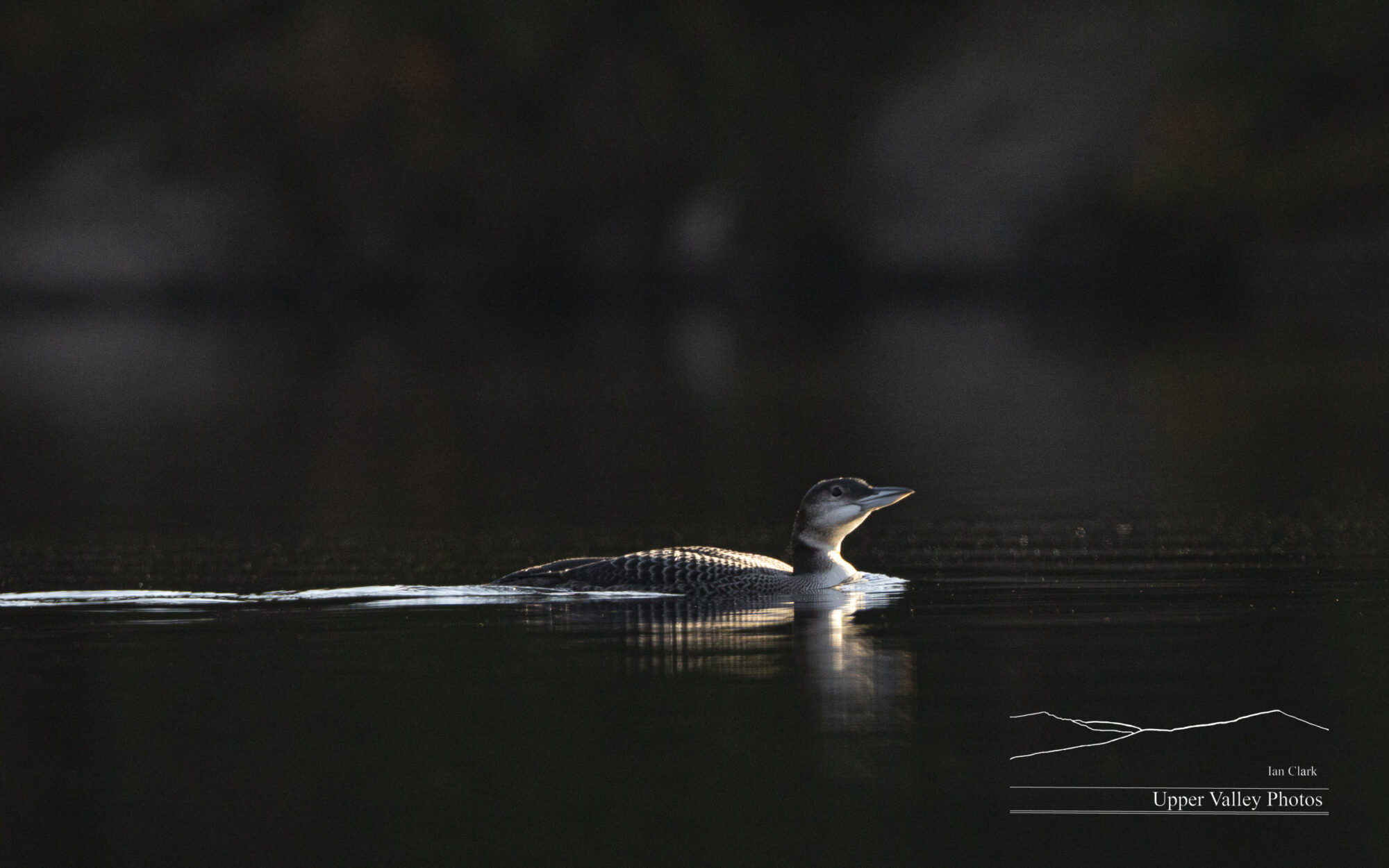


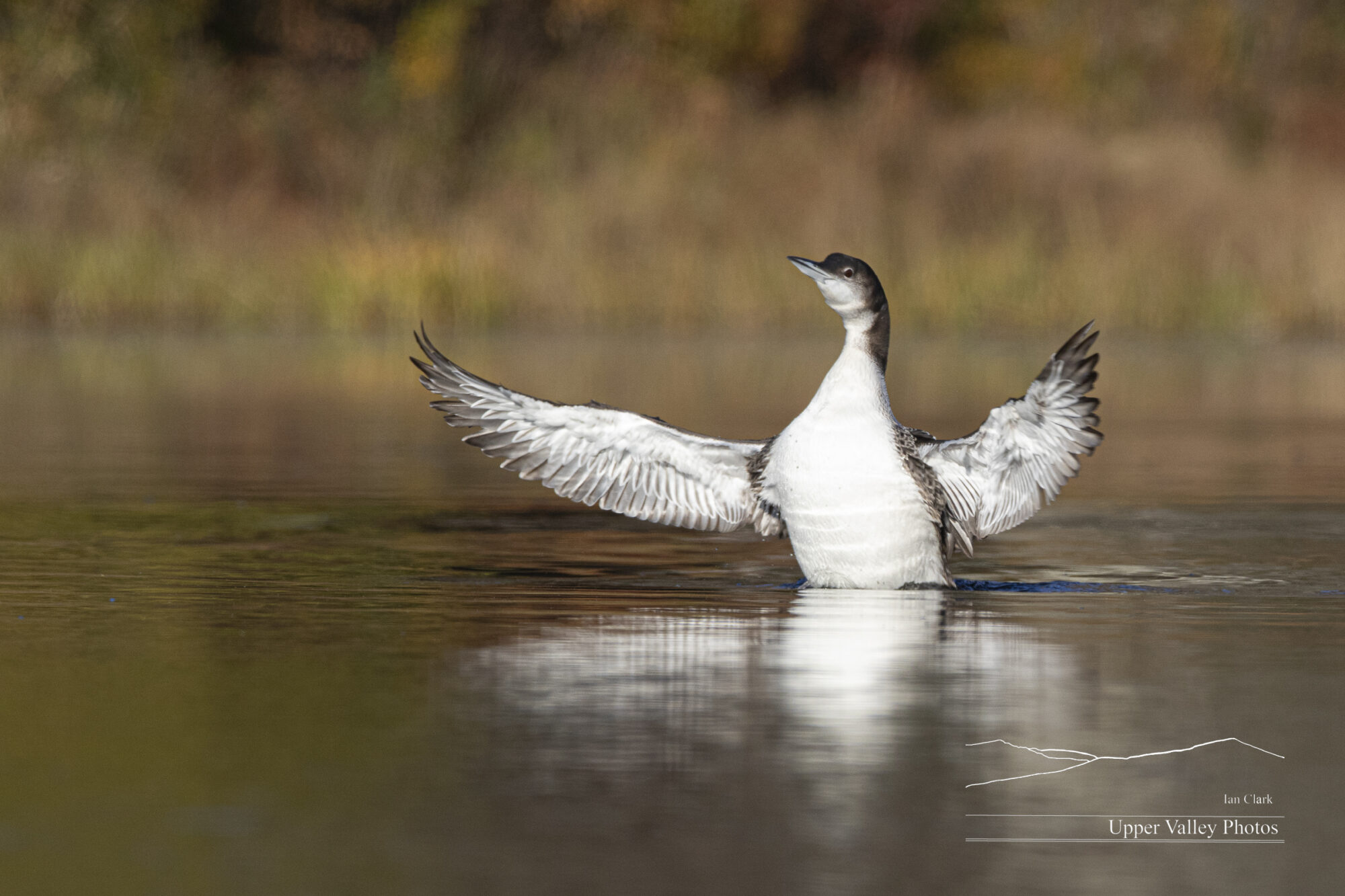
Checking in on the Loon Families
I had a chance to check in on two of our loon families this weekend. Let’s see what’s up.
The Paradise City Arts Festival in Northampton, MA, is this coming weekend, October 8, 9& 10. I’ll be there in booth 220 with lots of photos of loons, owls, fox kits and other critters.
Friday morning, after scraping ice off the windshield, I headed east to check on the Eastons. This is the family that last I saw them, the chicks were practicing takeoffs, but were not yet airborne. This pond is almost 2,000 feet above sea level. The loons usually depart from this pond much earlier than the nearby ponds at lower elevations. This year, I wondered if fish were scarce; the parents seemed to feed the chicks more crayfish than other loons and in the last couple visits, the parents delivered only a couple fish of any size. Anecdotal evidence from fisherpeople also suggests that fish are scarce, but when has anyone fishing complained of there being too many fish?
One loon flew over the pond about half an hour before sunup, and that was the only sighting for the day. The loons have moved on. They’re likely to have moved to a lower pond where they’re likely to stay until the ice starts forming. Once the ice appears, they’ll head to the coast.
Our heron was around to give me the consolation prize.

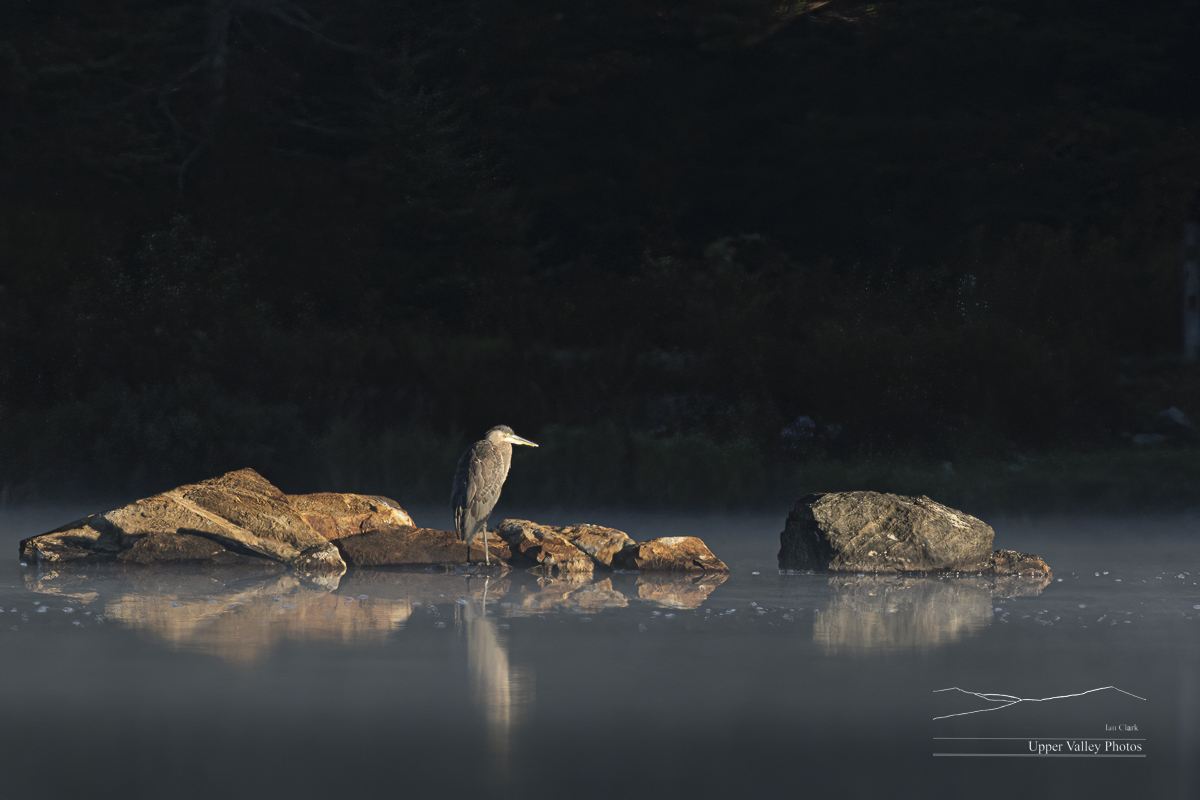
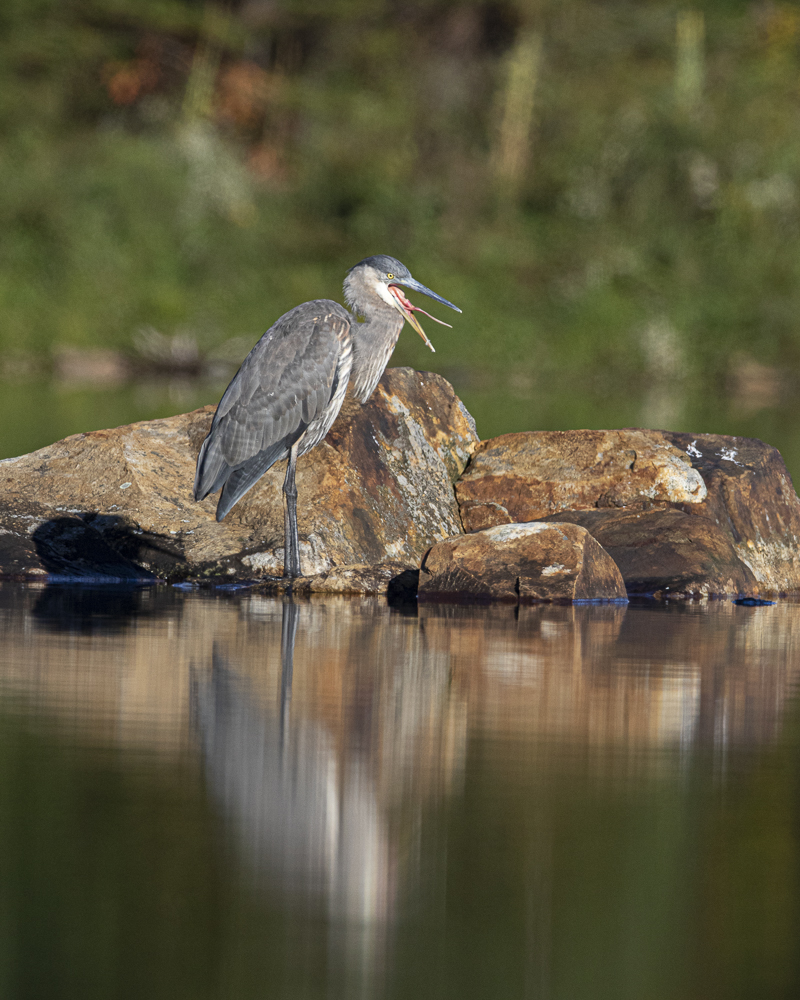

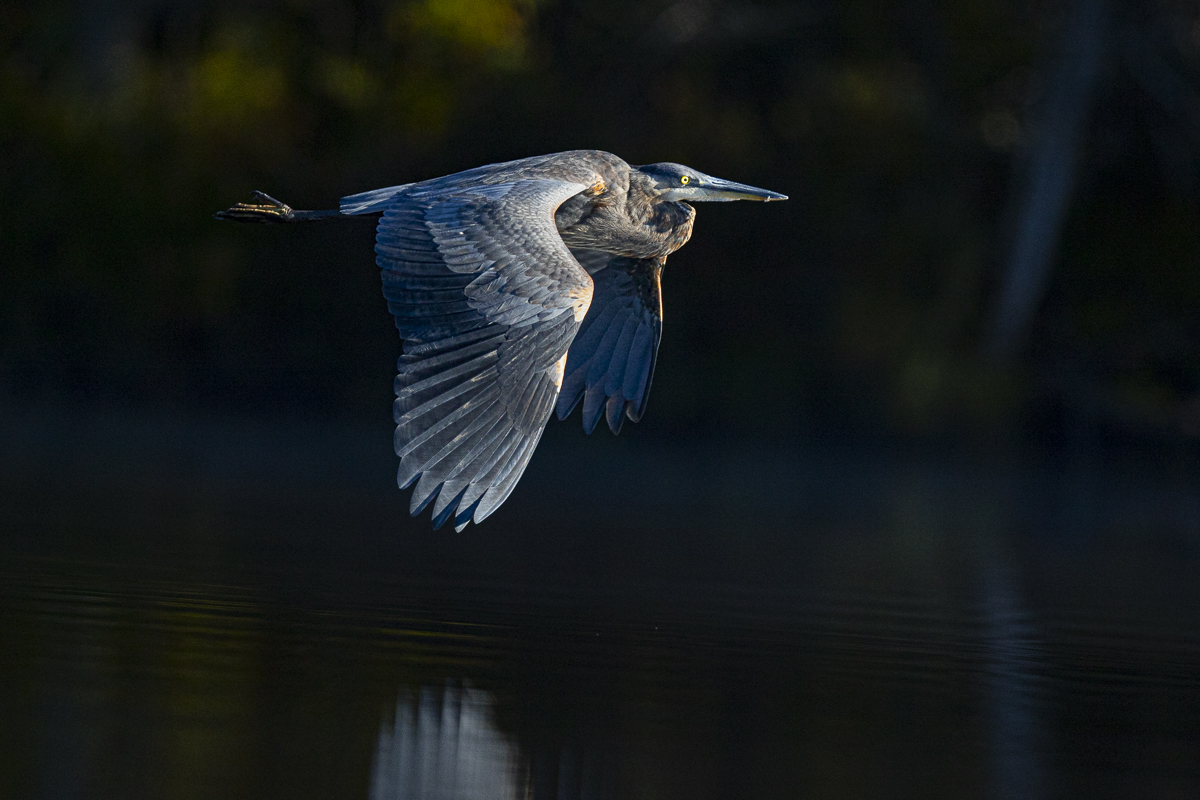
This morning, I visited the loons to the west, the Westons. Their pond is much lower, about 870′ ASL. And, much warmer, at 47 when I arrived. There was one adult and the surviving chick on the pond. The chick is 13 weeks old this weekend.
One of the residents on the pond tells me that the chick has had a busy week with an juvenile eagle repeatedly harassing him. No sign of the eagle this morning, but I wasn’t out long.

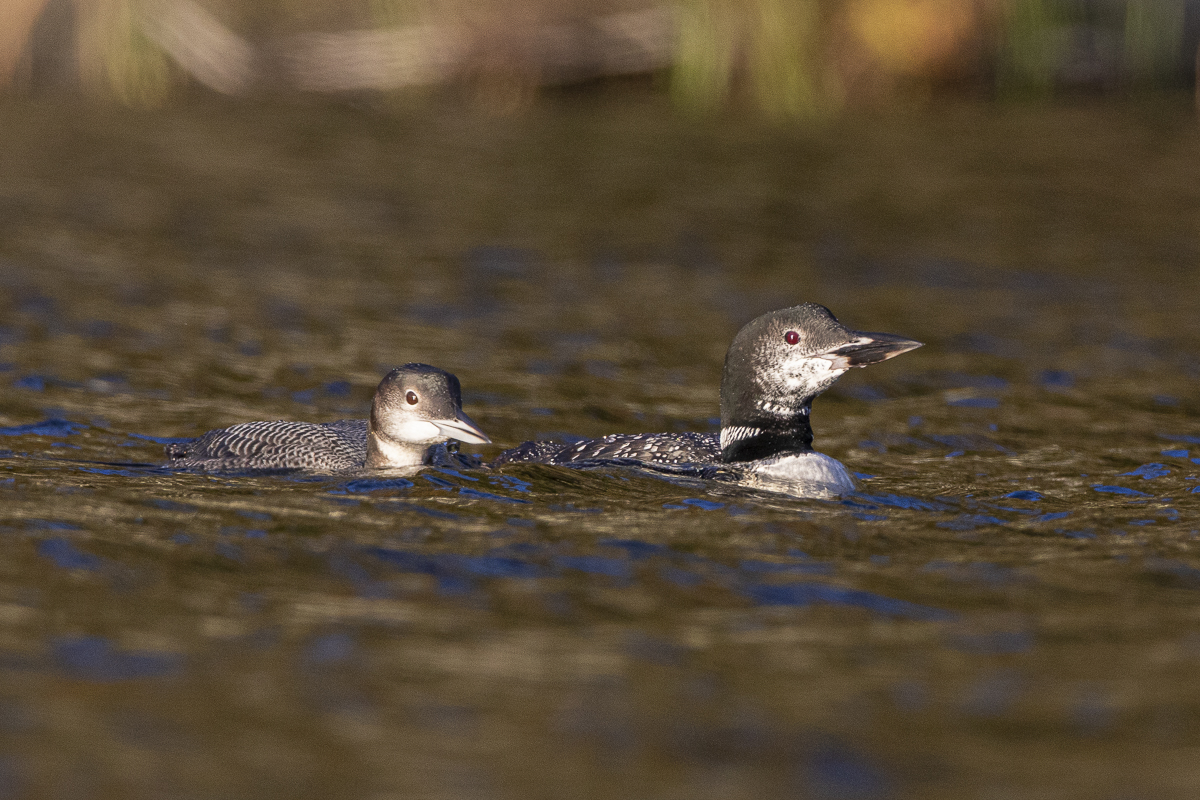

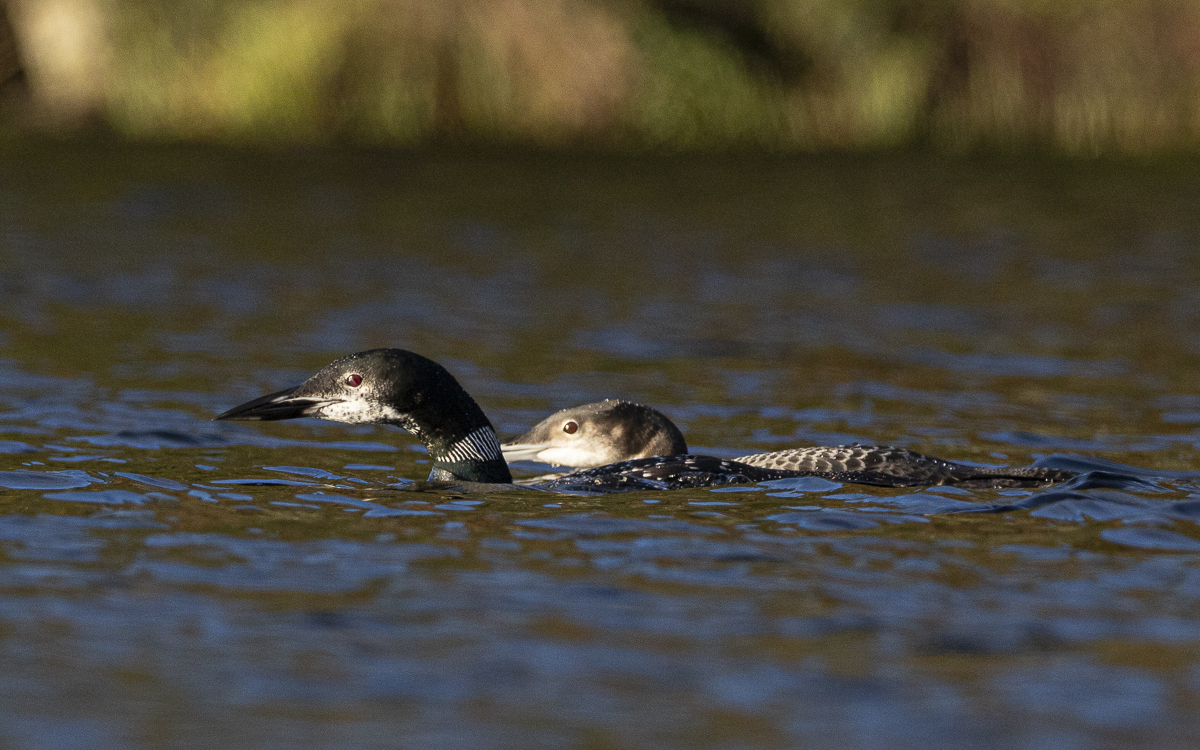
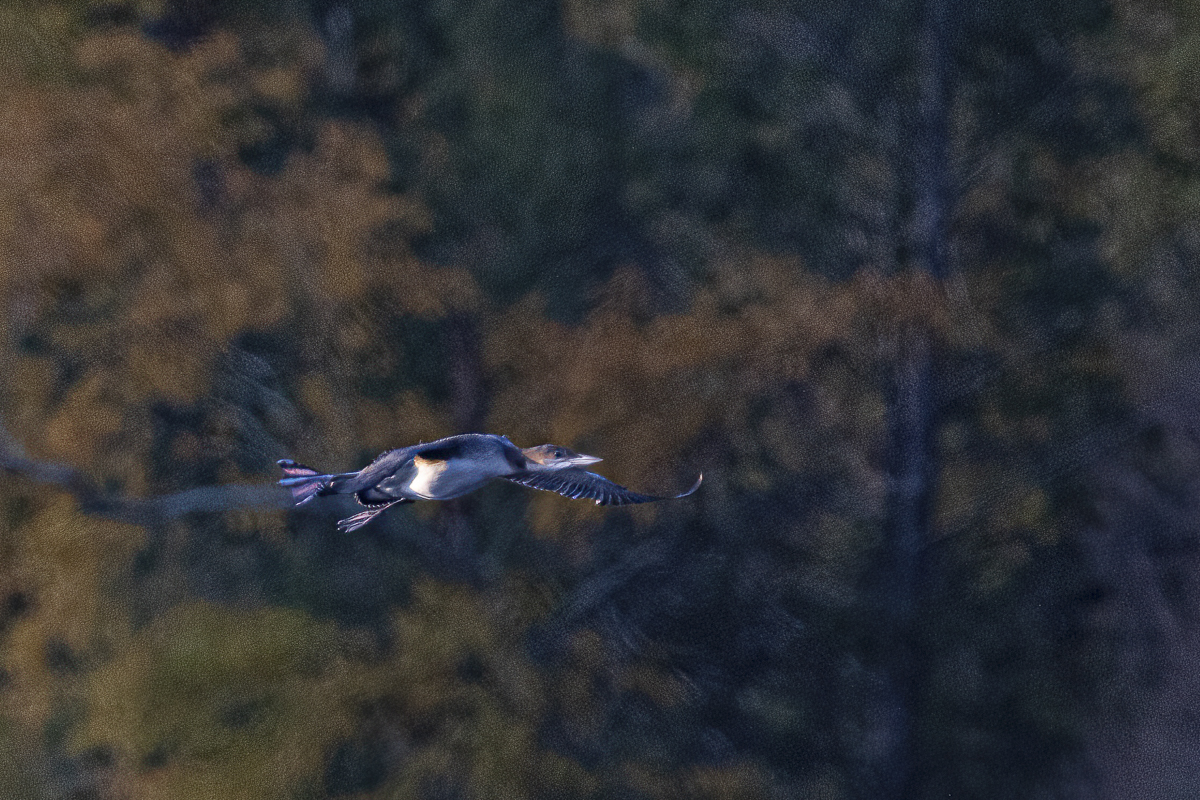
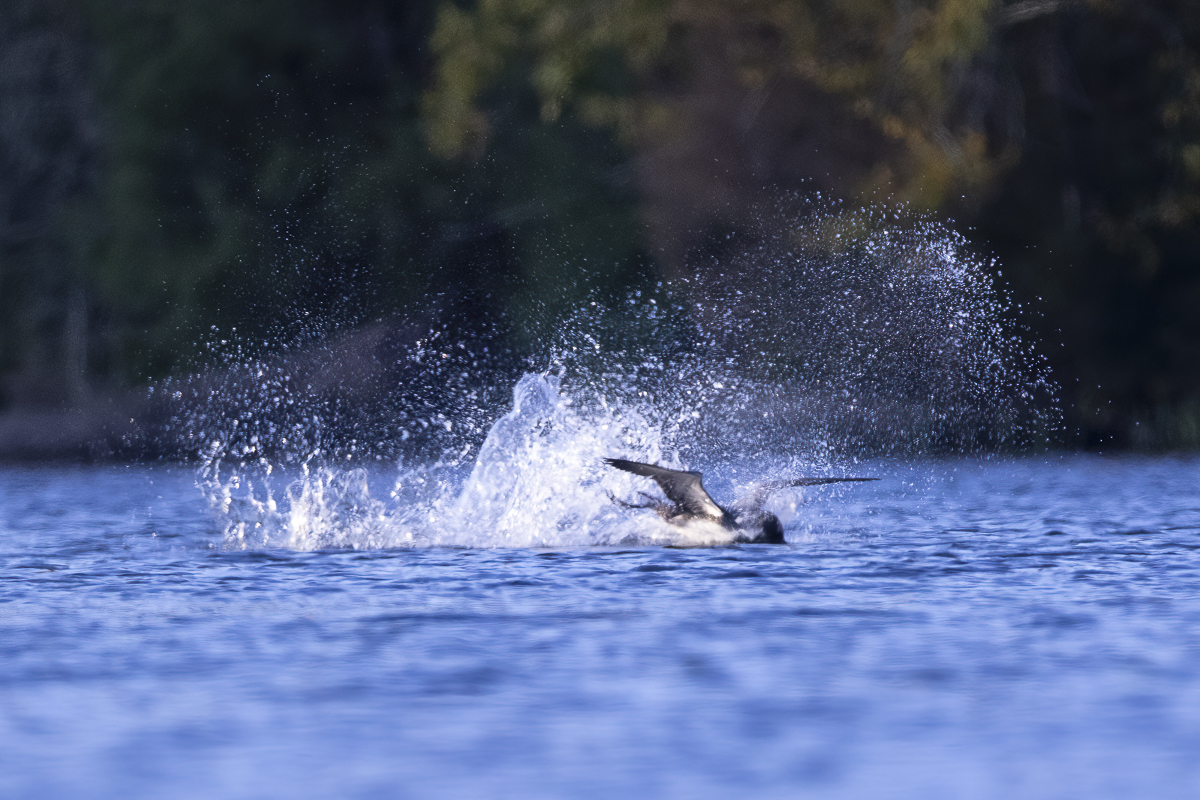
Anyone have a bear coming after the last of the apples?
Loon Chicks at 11 Weeks
This pair of loon chicks is 11 weeks old this weekend. There was thick fog on the hill this morning when I checked the weather. Hoping the loons would be above the fog, I headed out. We went from fog to haze before a beautiful day broke out. The chicks’ big project continues to be to learn to fly.
I’ll be down at the Capital Arts Festival in Concord, NH September 24 & 25 with lots of wildlife photos and note cards. Come by and say hello. The event is free, much of the activity is on Main Street. You can find the details here.
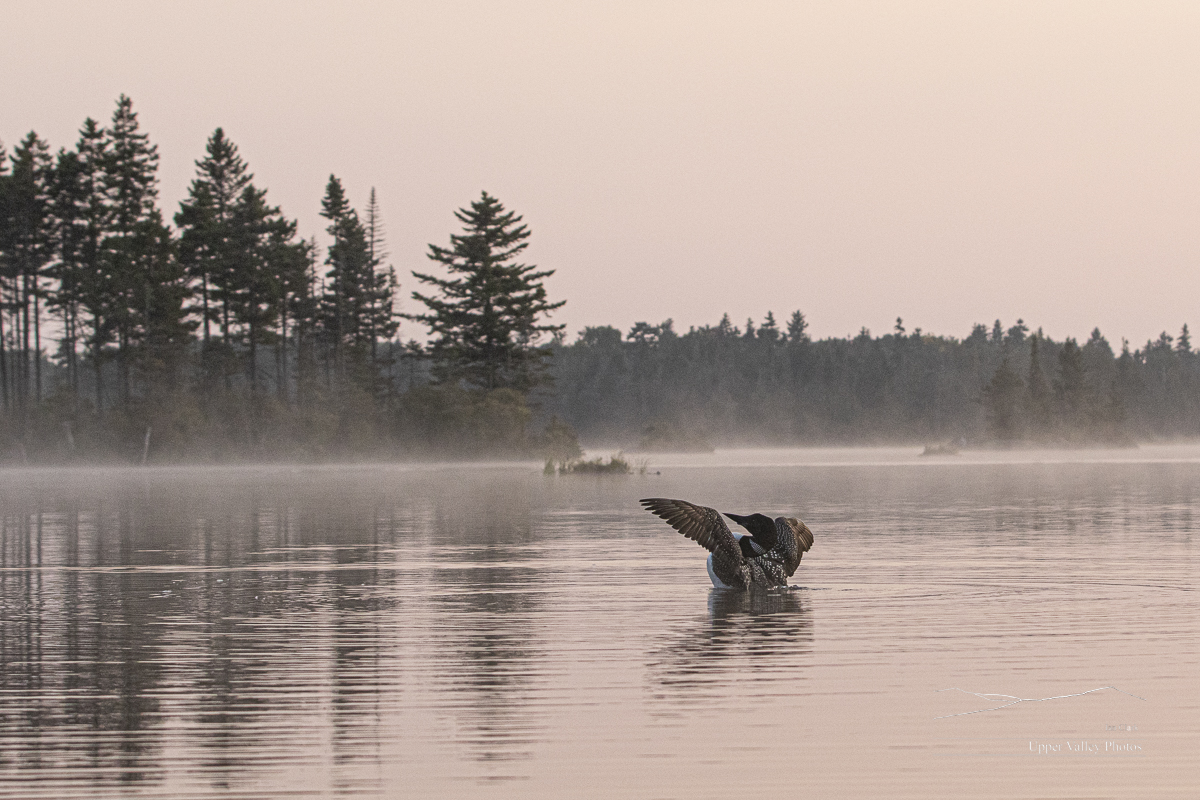

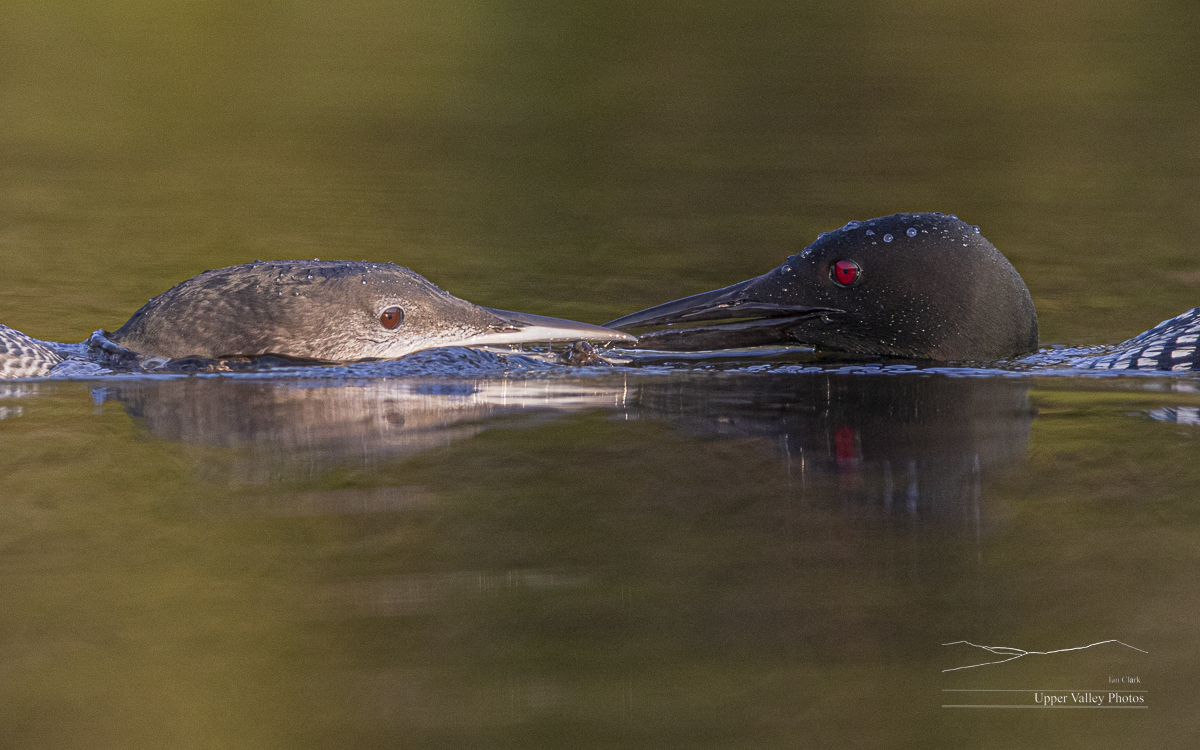
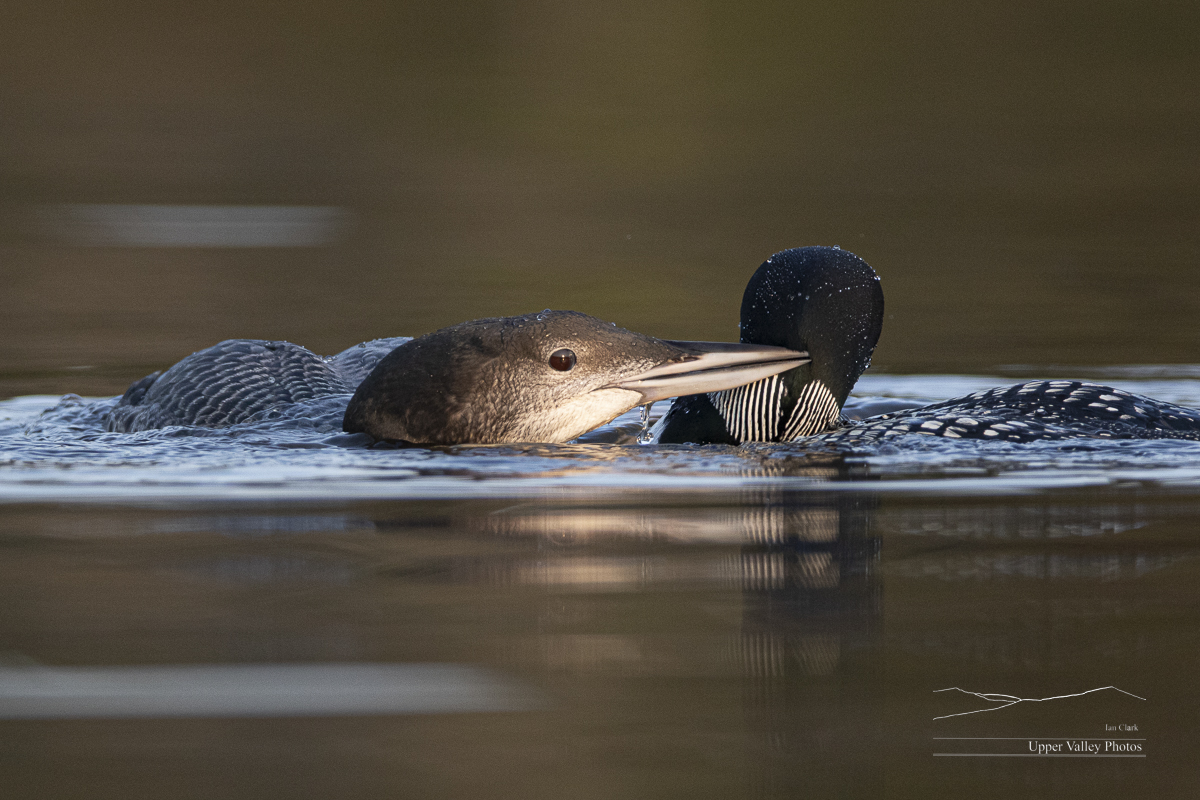
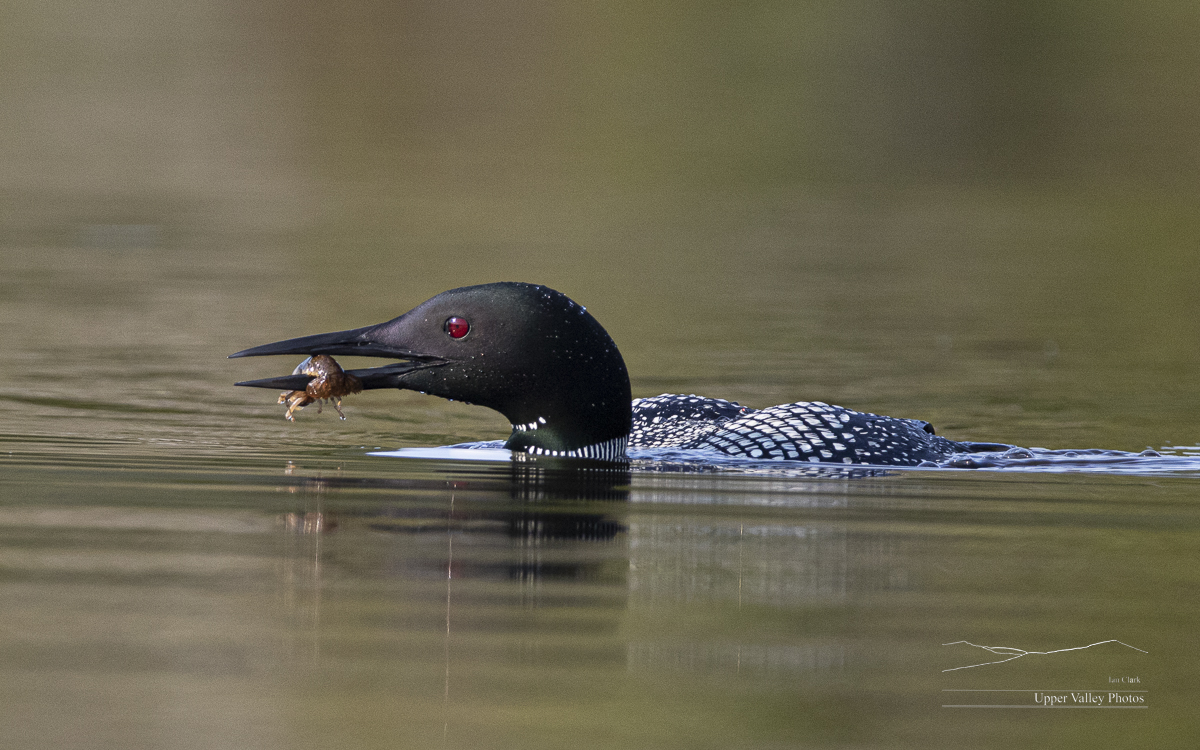
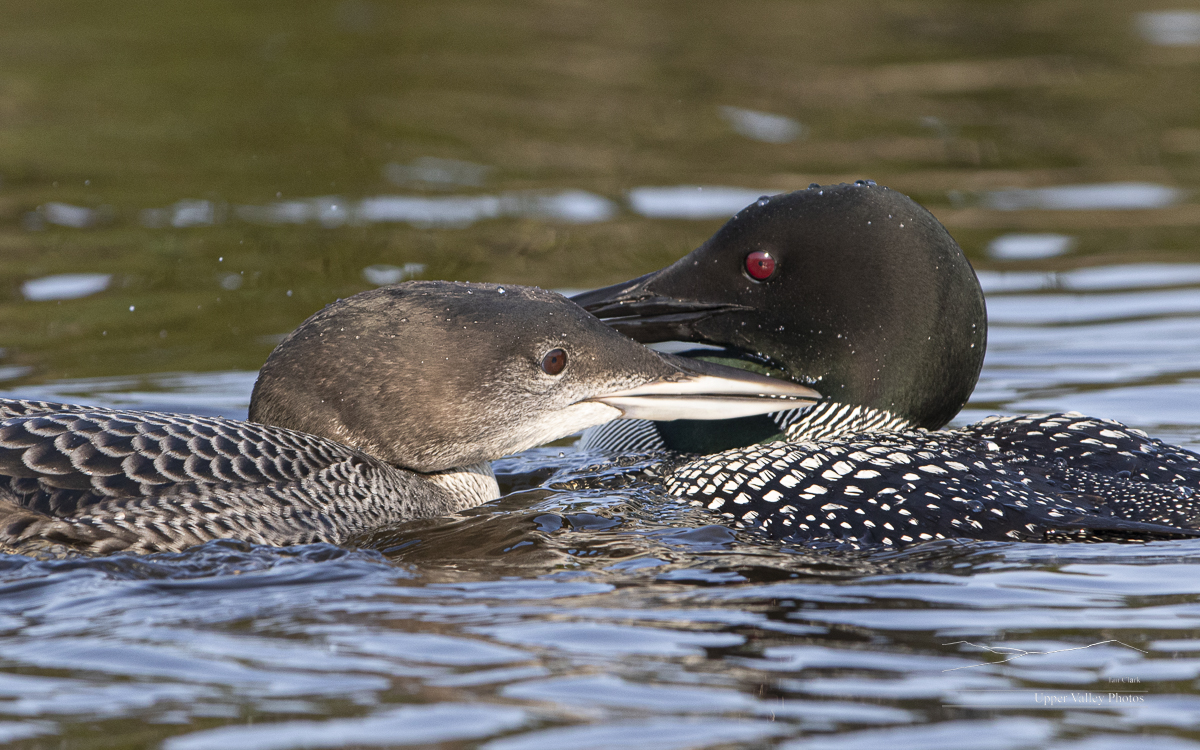

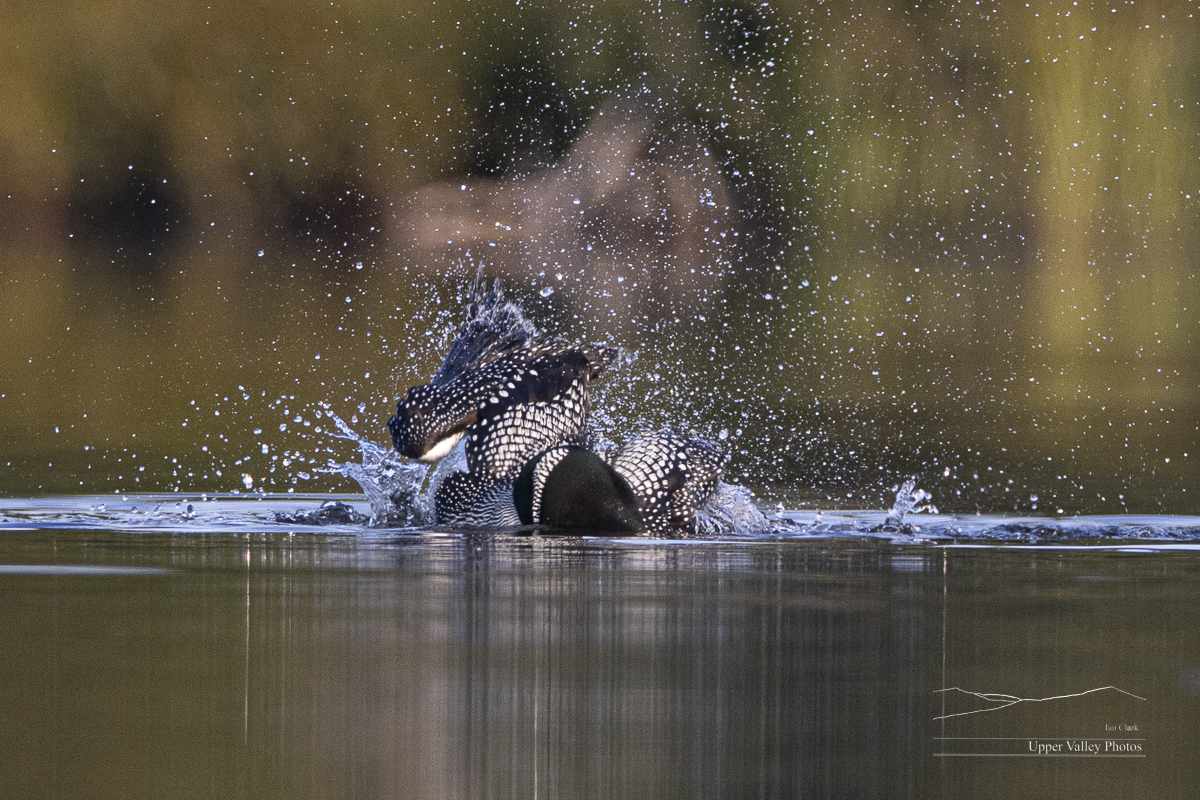


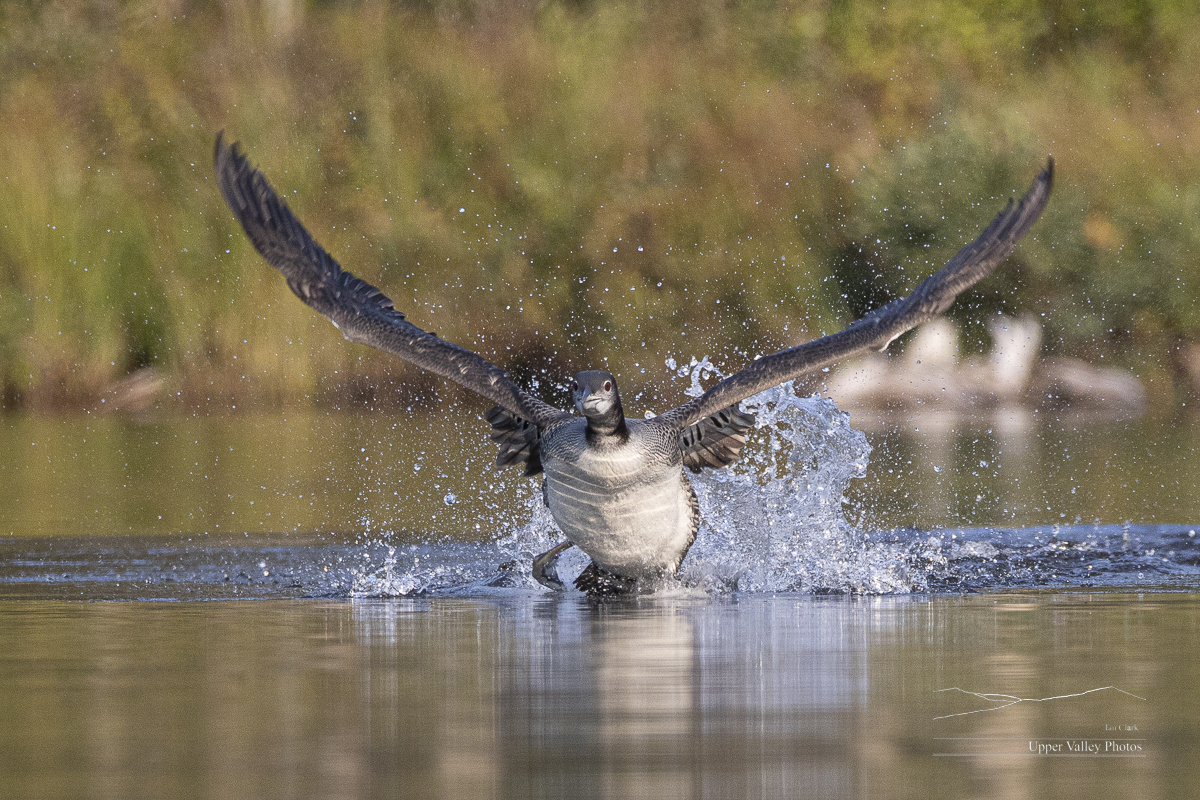
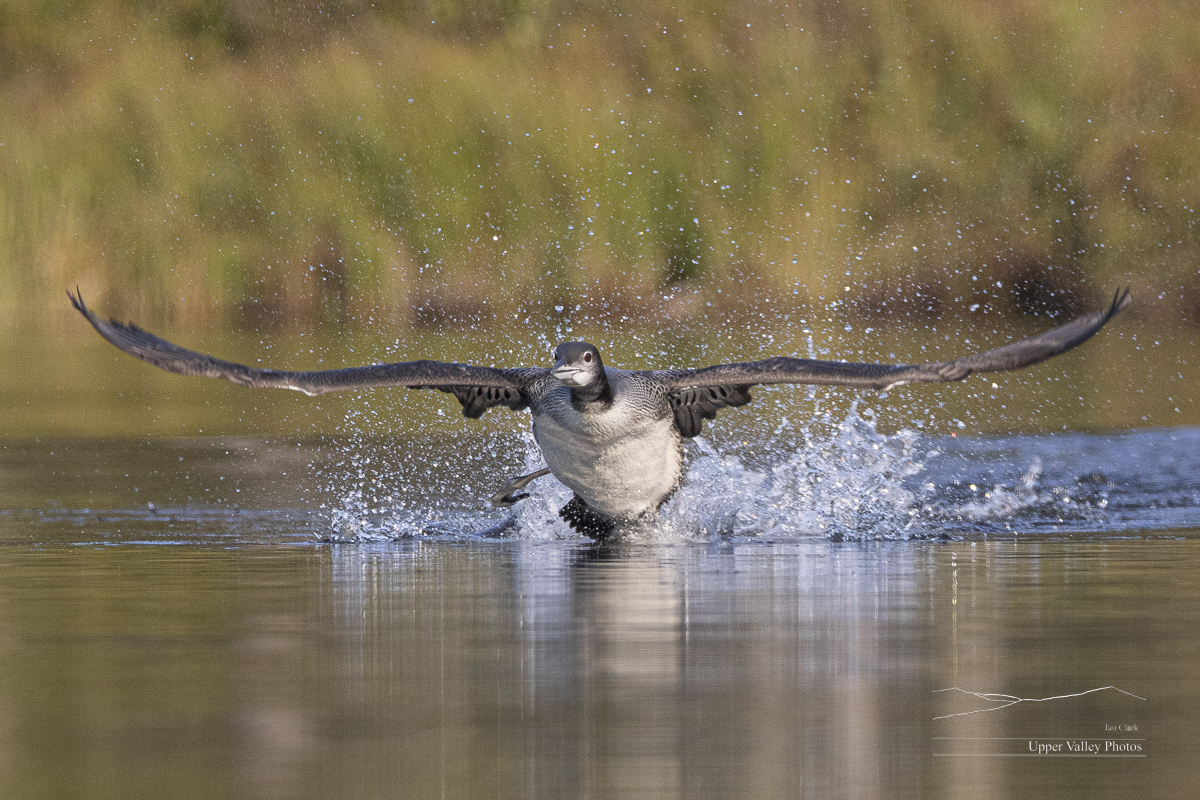
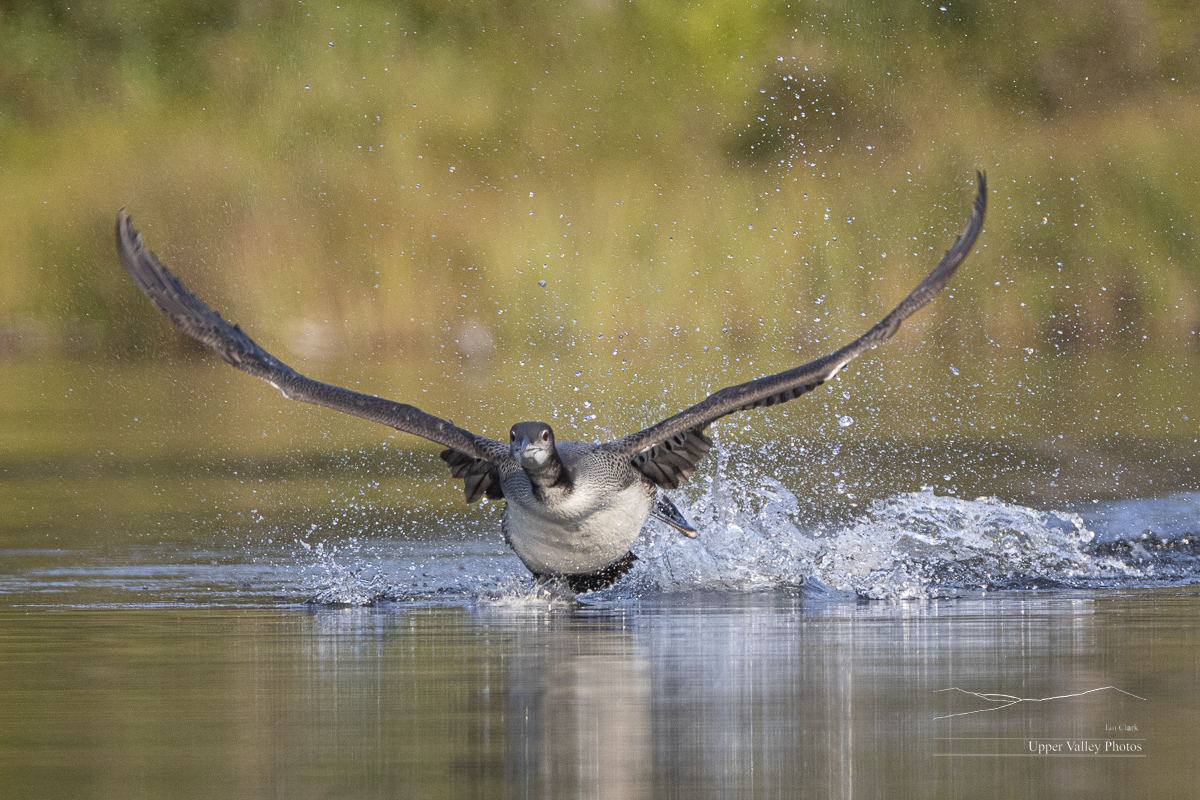

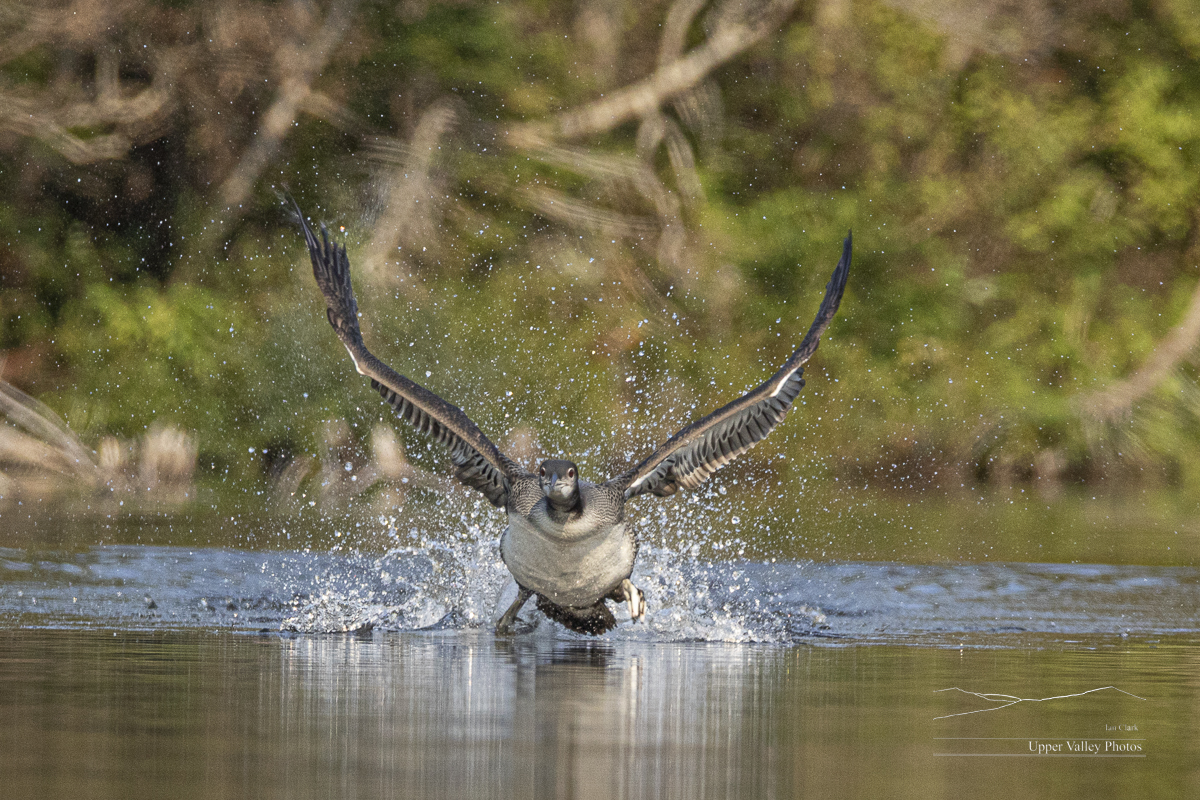
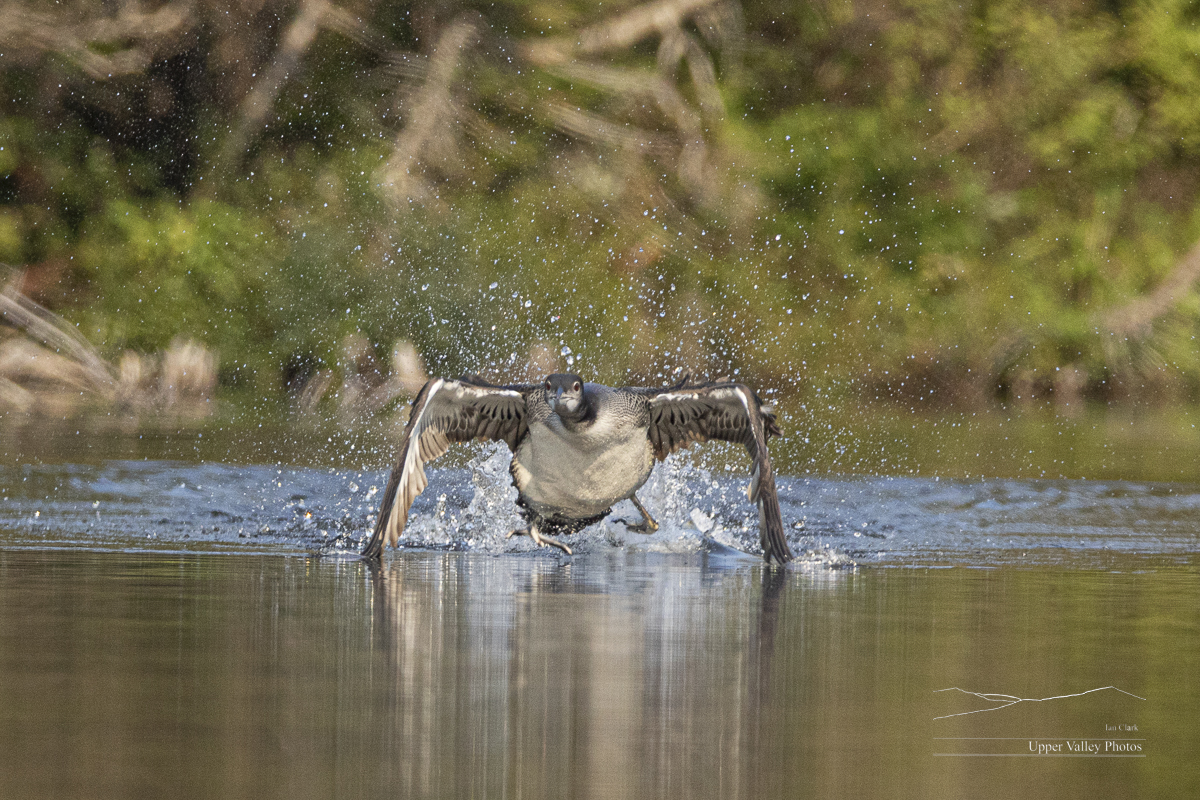

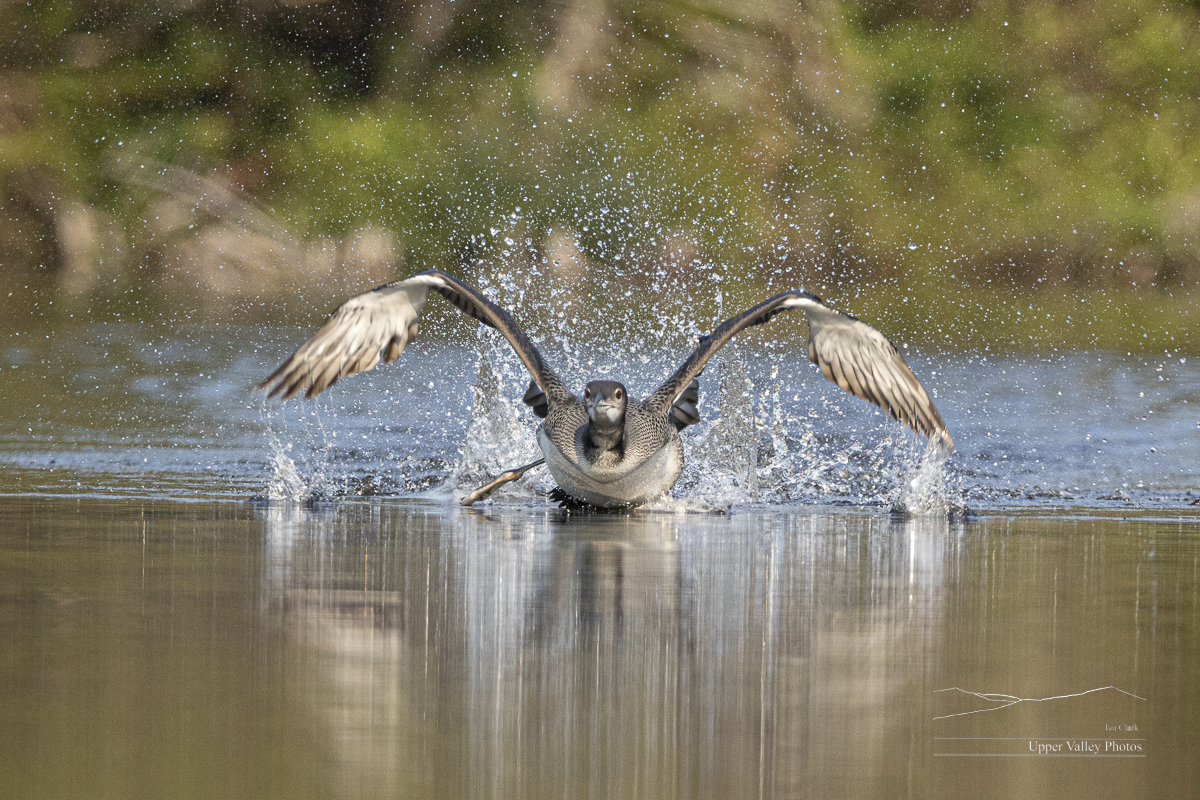

Loon Chicks At Four And Five Weeks
The loon chicks to my east are five weeks old this weekend. All four on both ponds, the ‘Eastons’ and the ‘Middletons,’ seem to be doing well. The pond to my west, the ‘Westons,’ has sad news, the parents have lost a chick.
Our bluebirds’ second brood is ready to fledge. Wednesday afternoon the adults started calling to the chicks to leave the box. Thursday they were more insistent. Friday they sounded impatient. Saturday morning, two of the four chicks left the box. This morning their are still two chicks in the box. Mom and dad have stopped calling, they’re busy feeding the two that fledged. The two in the box are looking out the door, trying to get up the courage to make the leap.
The League of New Hampshire Craftsmen’s Fair is August 6-15, I’ll be there with lots of wildlife prints, cards and more. Other images are available through my web site, www.IanClark.com. It takes me some time between capturing an image and getting prints made. If you see a photo that you’d like in one of my posts, send me an email and I’ll bump that image to the head of the queue.
The Weston family couldn’t be found during last week’s census. They’ve been under pressure from intruding loons all spring. They’re on a small pond, not being found in 90 minutes of searching was worrisome. I love how people watch out for ‘their’ loons, I heard from folks who live or have camps on the pond, worried that they hadn’t seen the loons for a couple days. A couple that live on the pond set out Monday to have another look and found the adults and one chick hidden in a remote part of the pond, a much better outcome than we’d feared. I visited Friday the pond Friday morning.
We’ll never know what happened to the missing chick. There are lots of threats, eagles, otters, coyotes if they get too close to shore and more. The intruding loon is also a likely suspect.
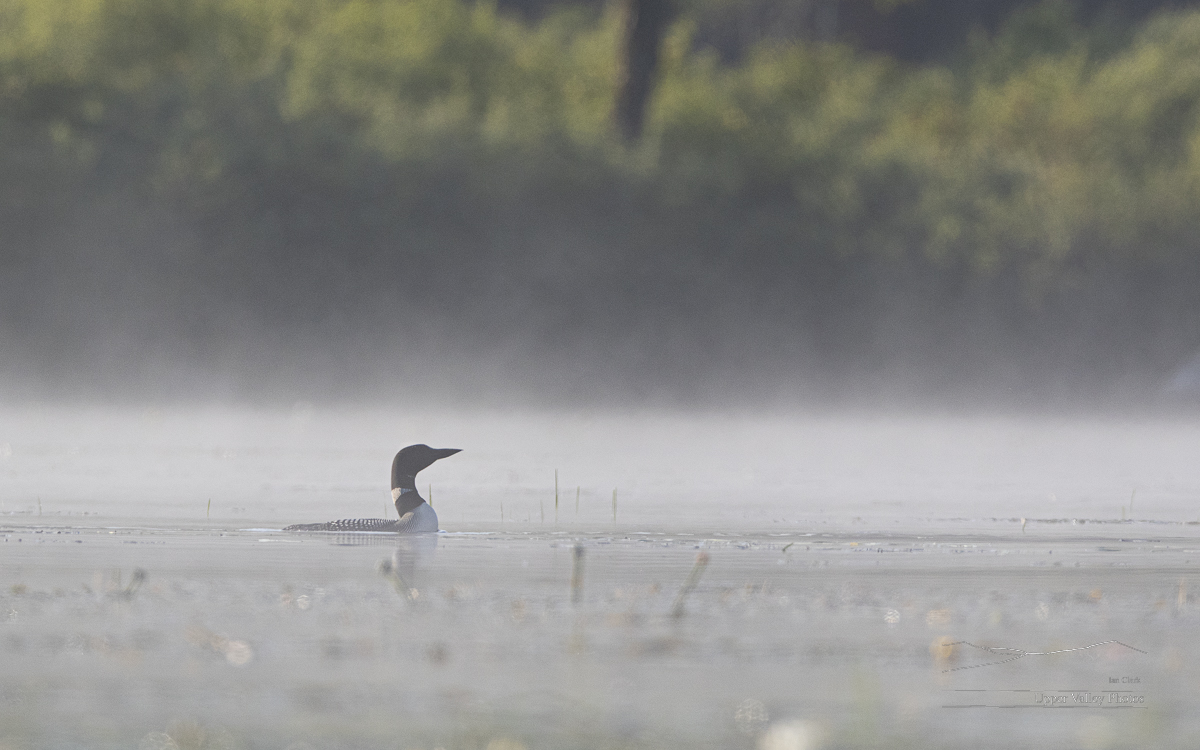

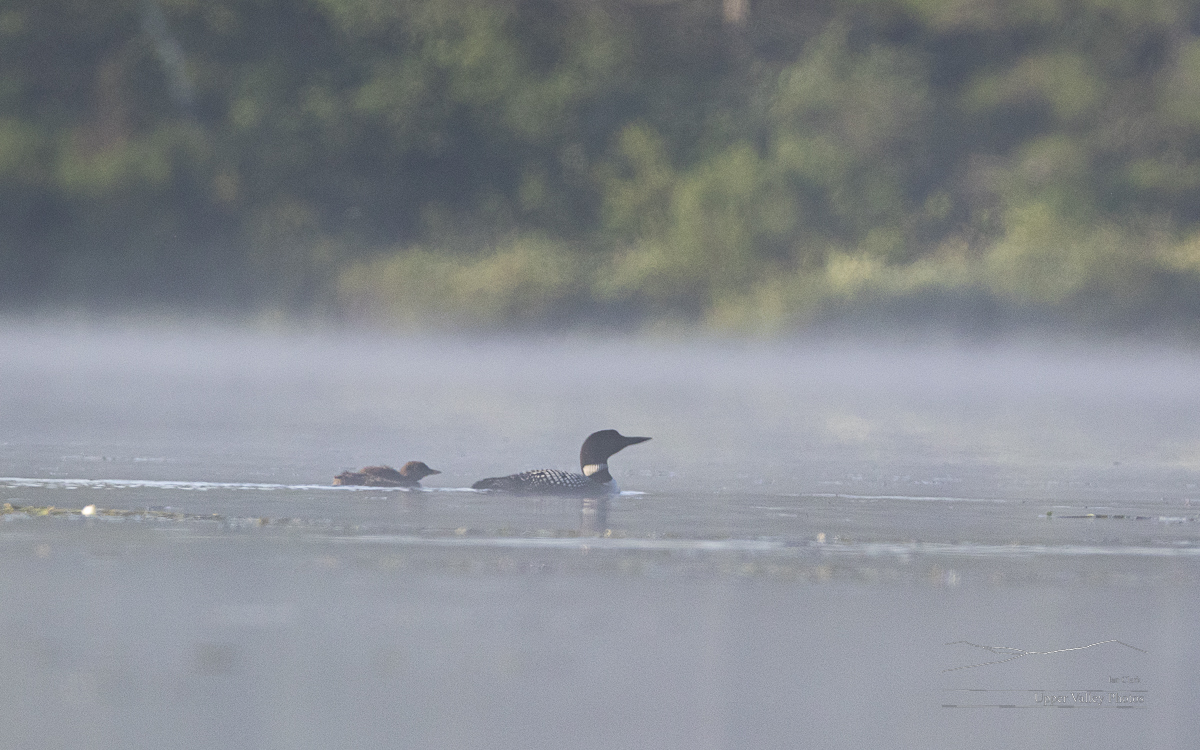
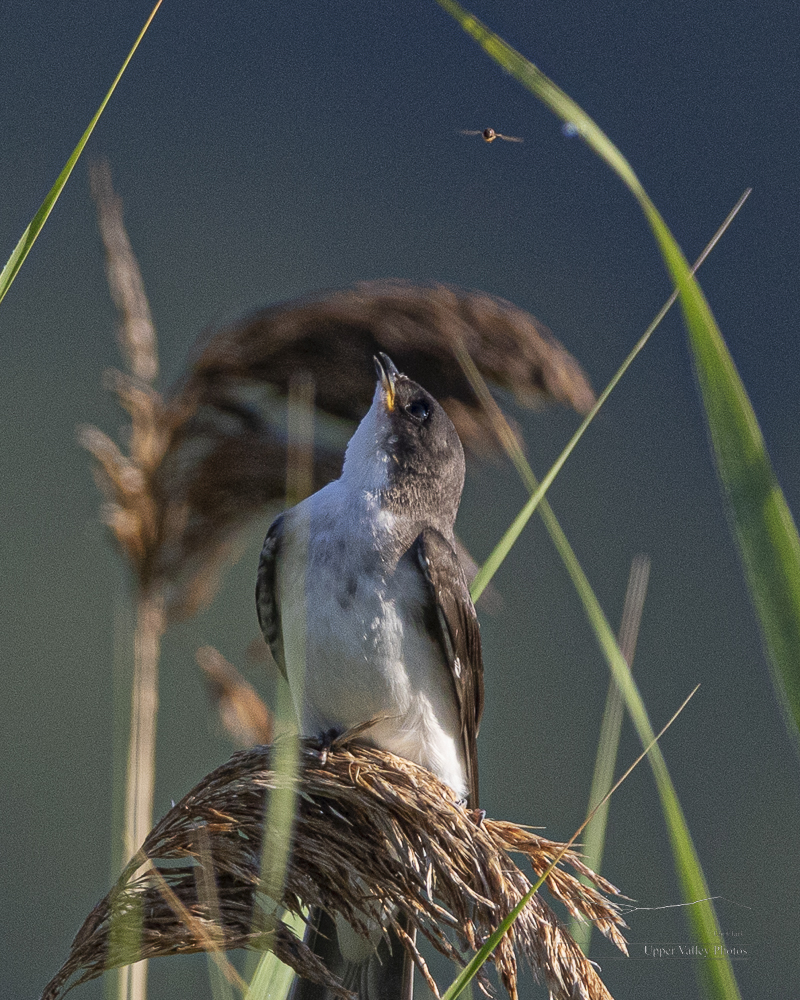
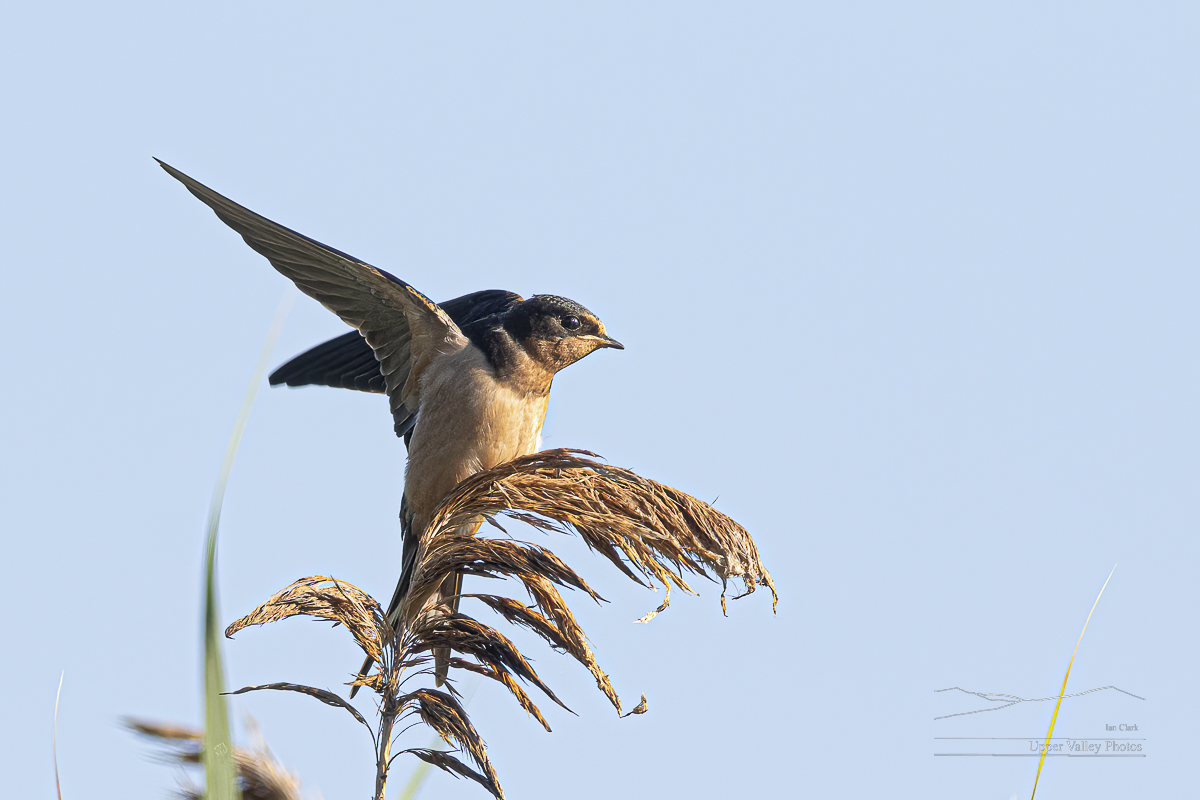
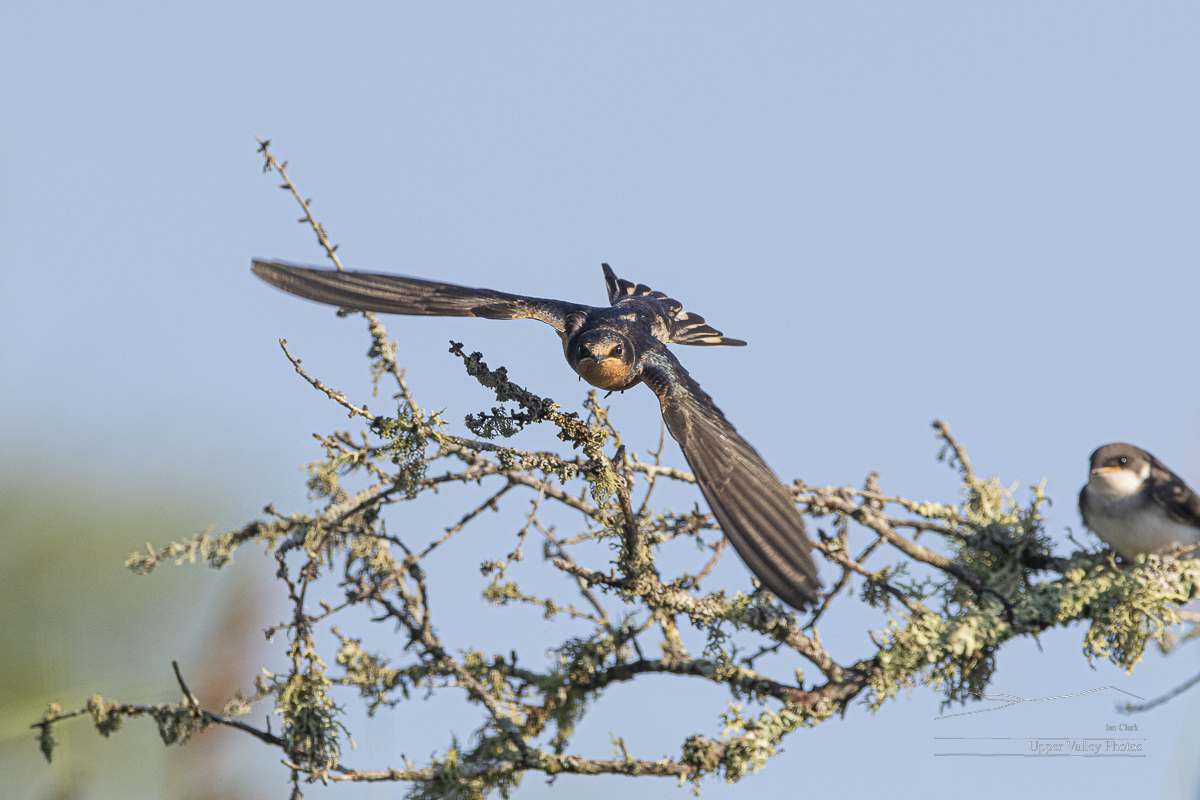
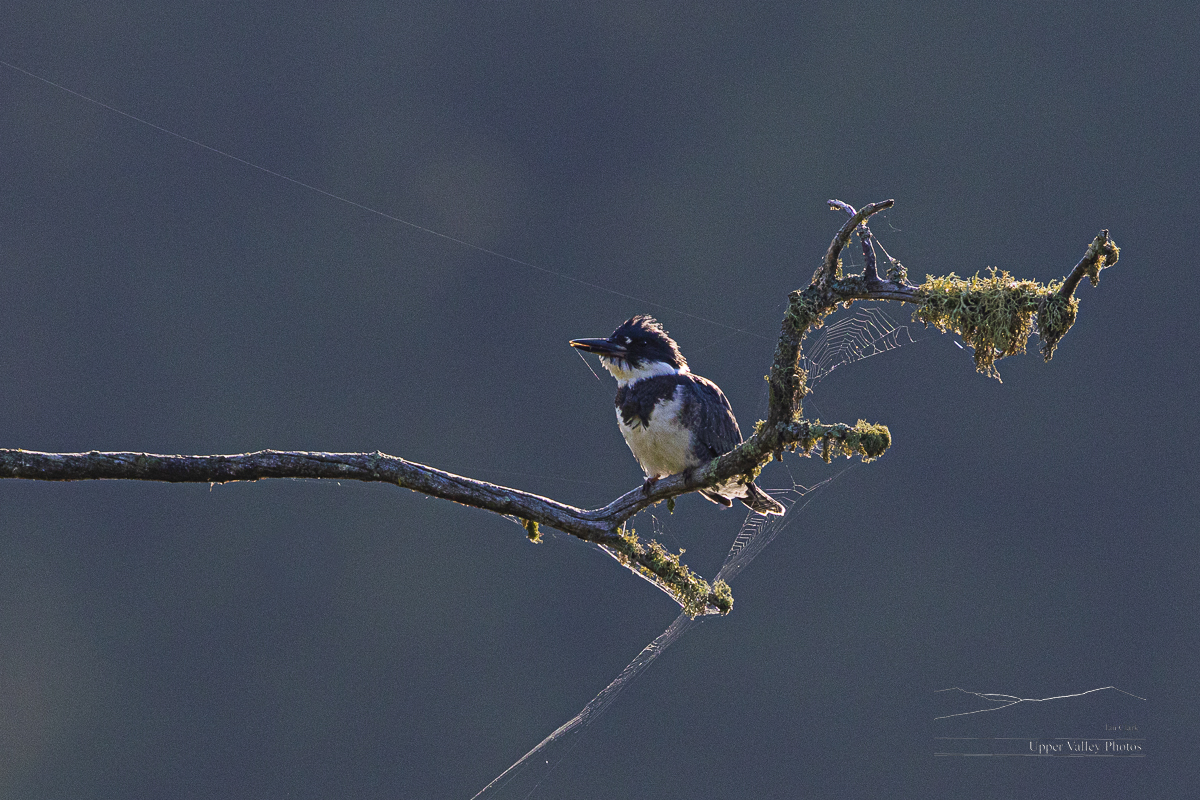
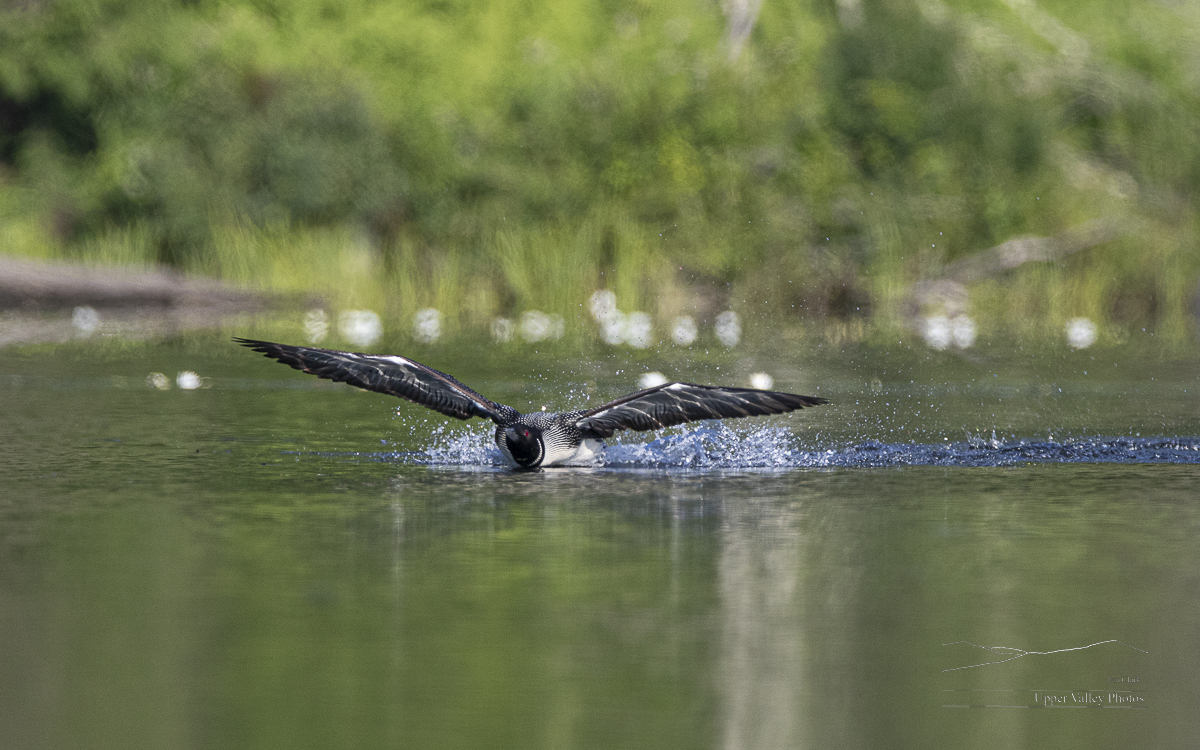
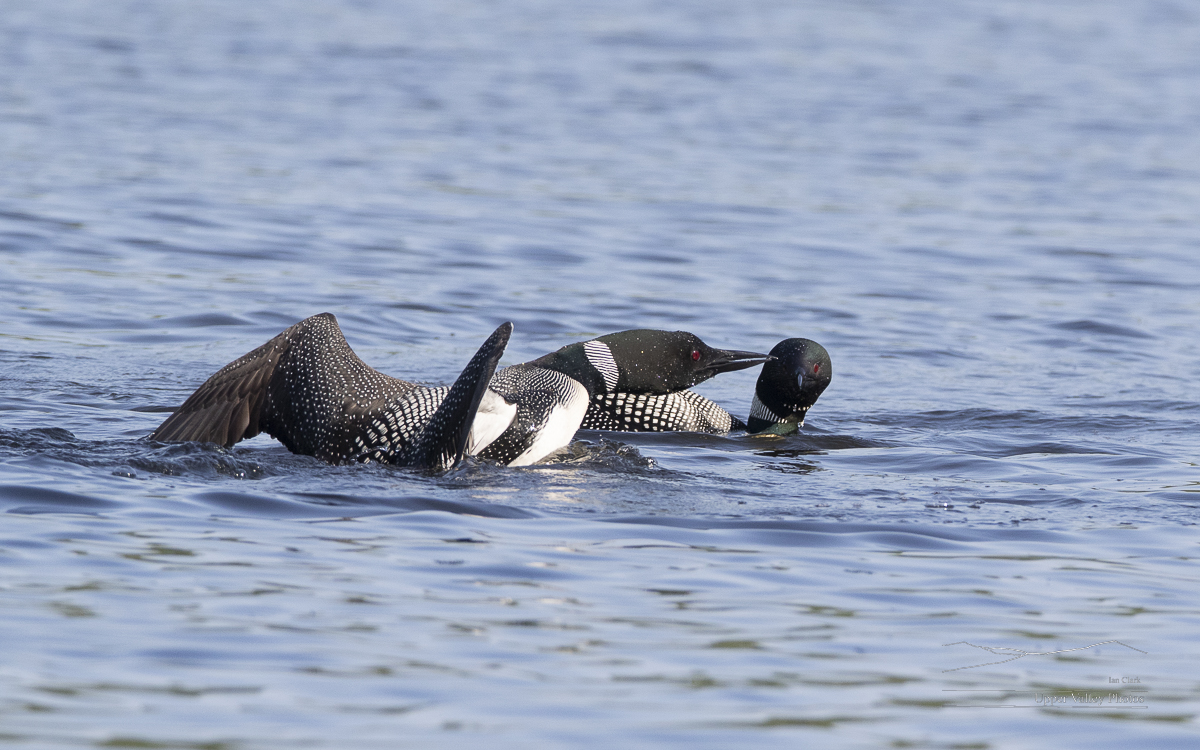

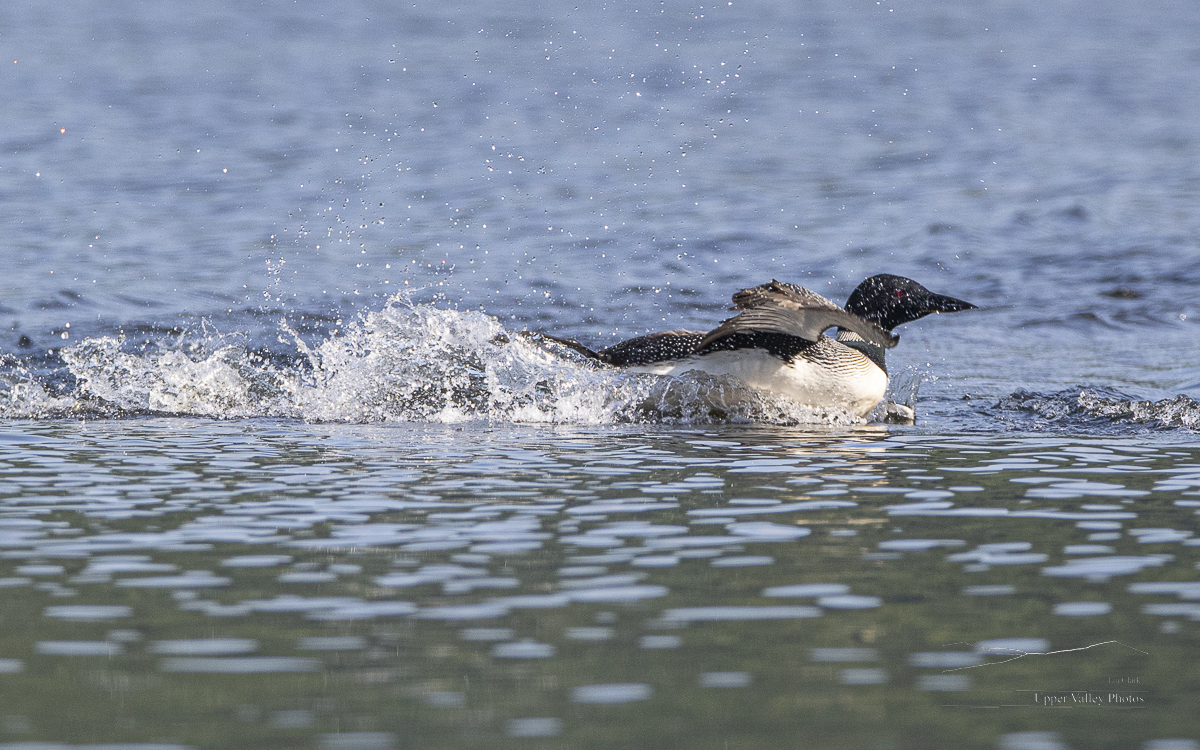
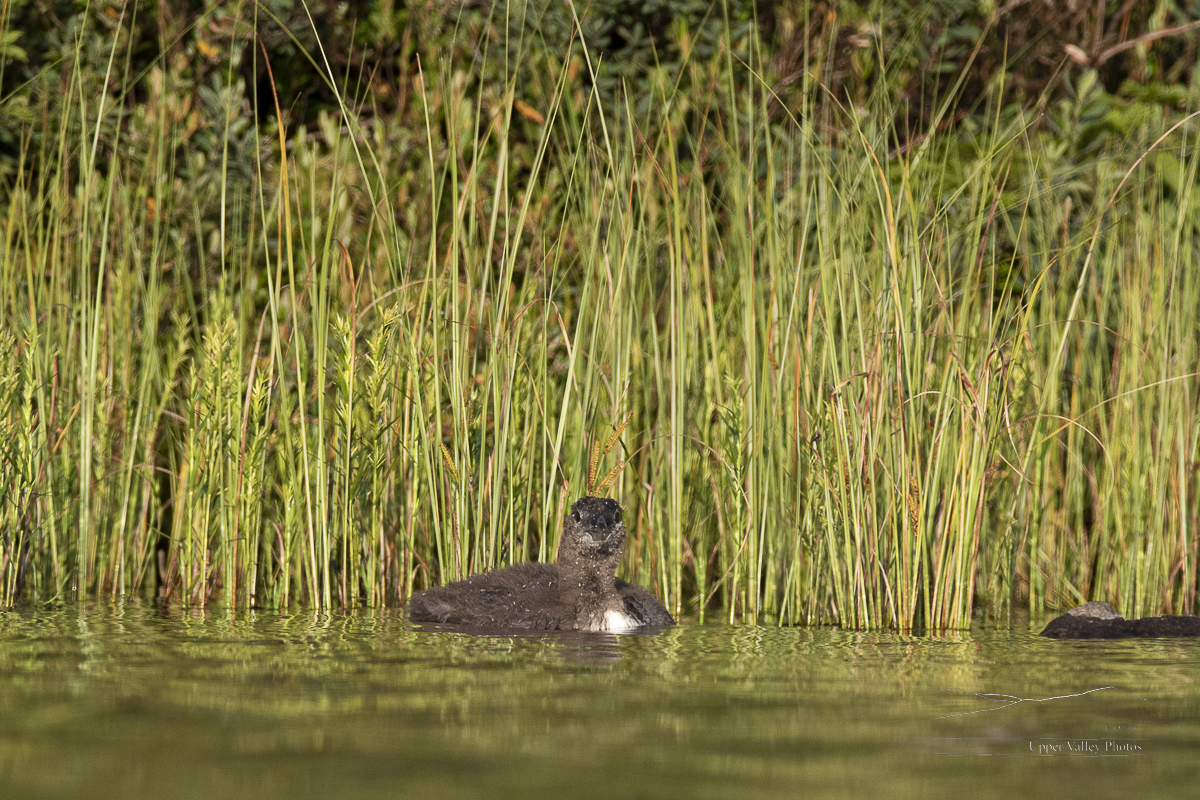
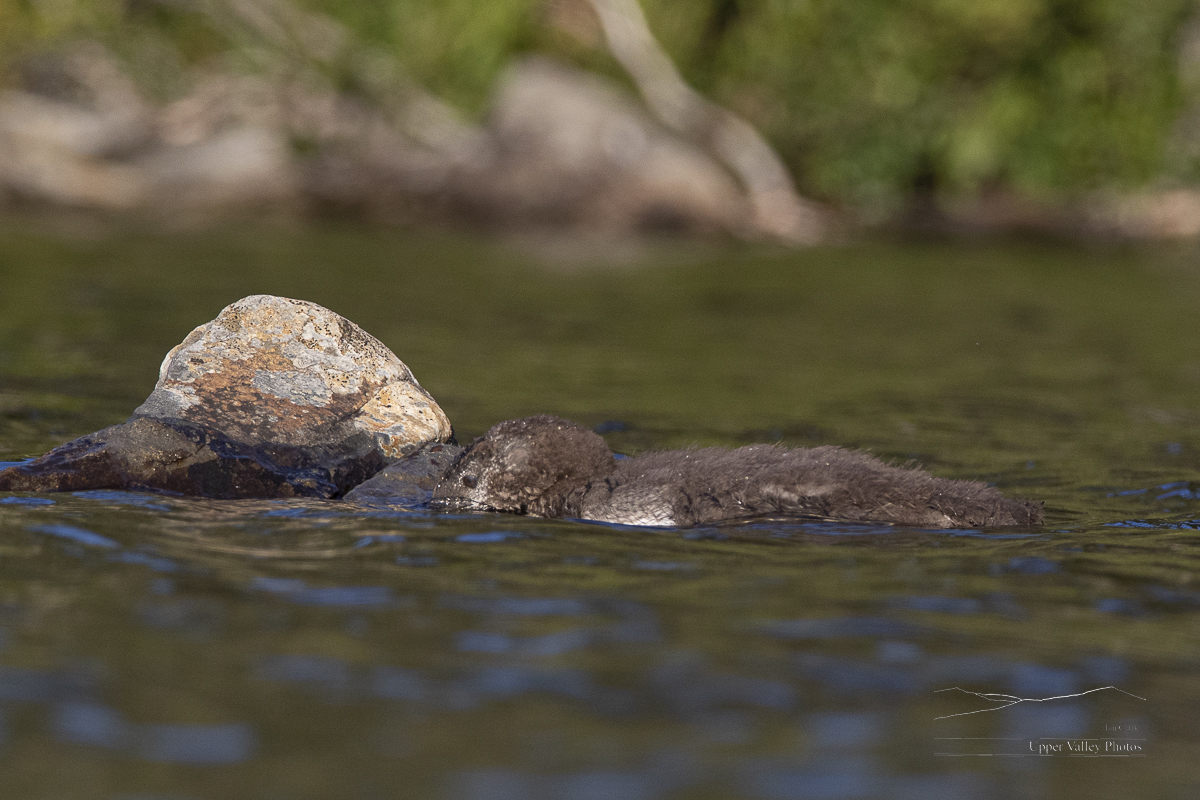


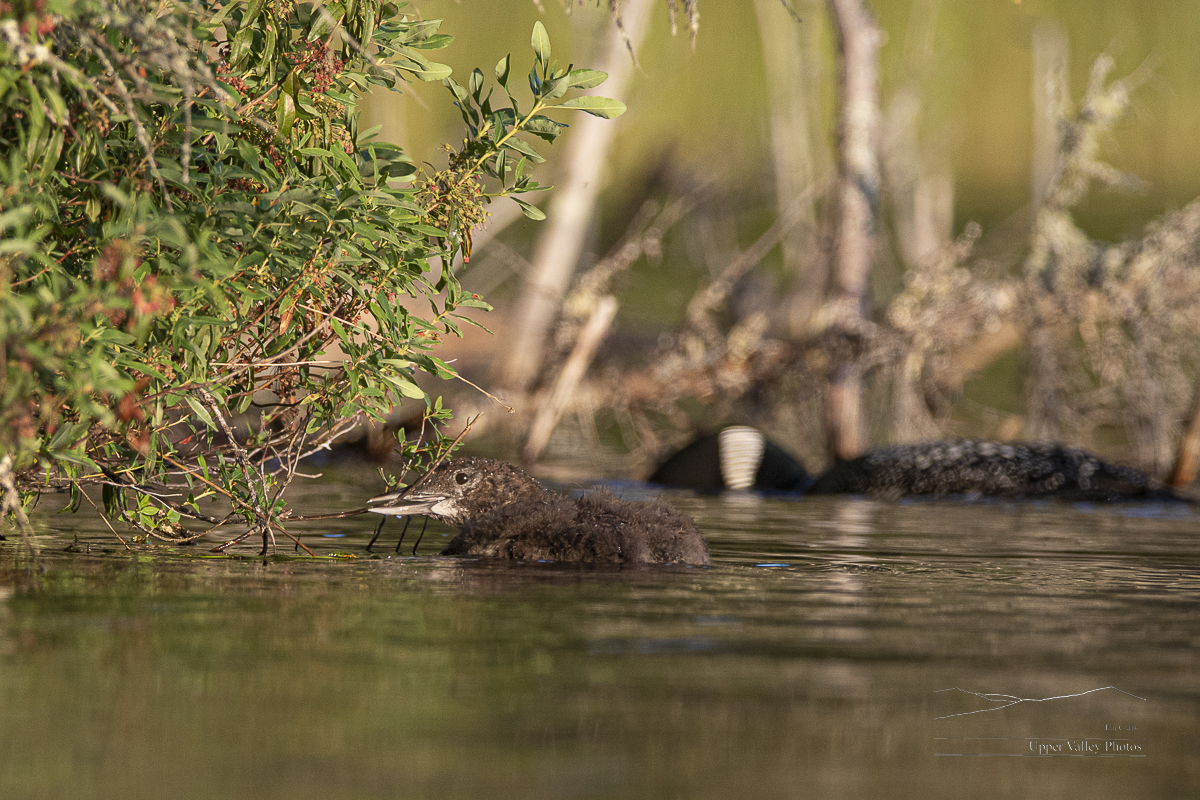

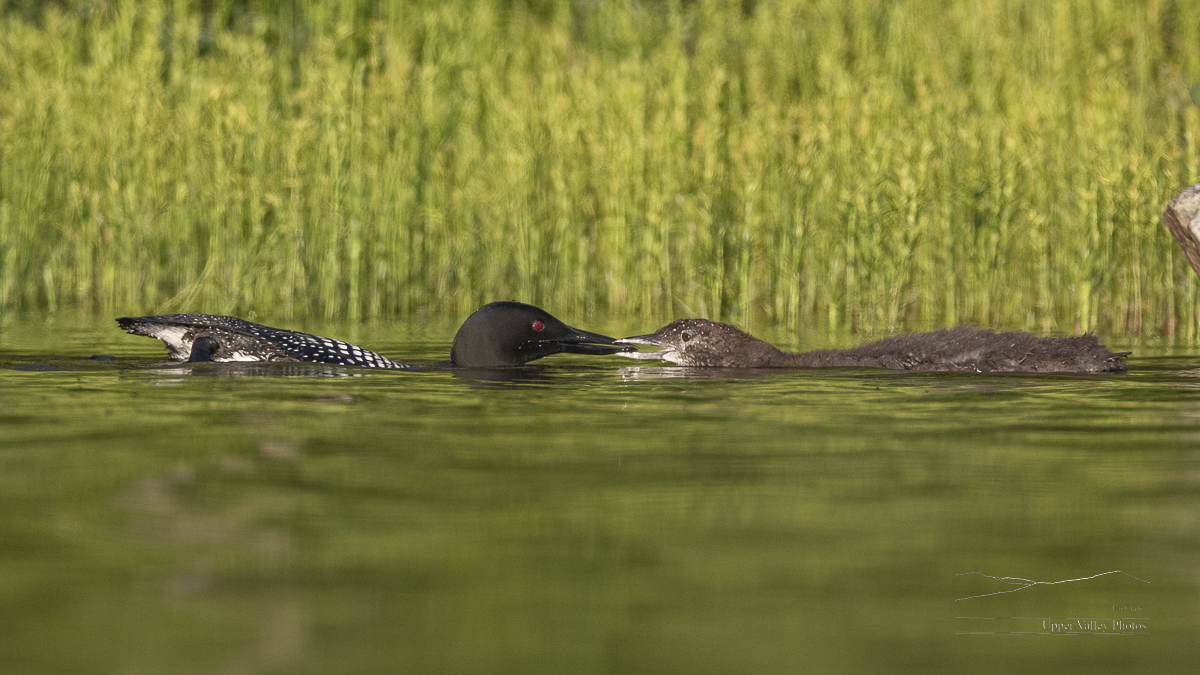
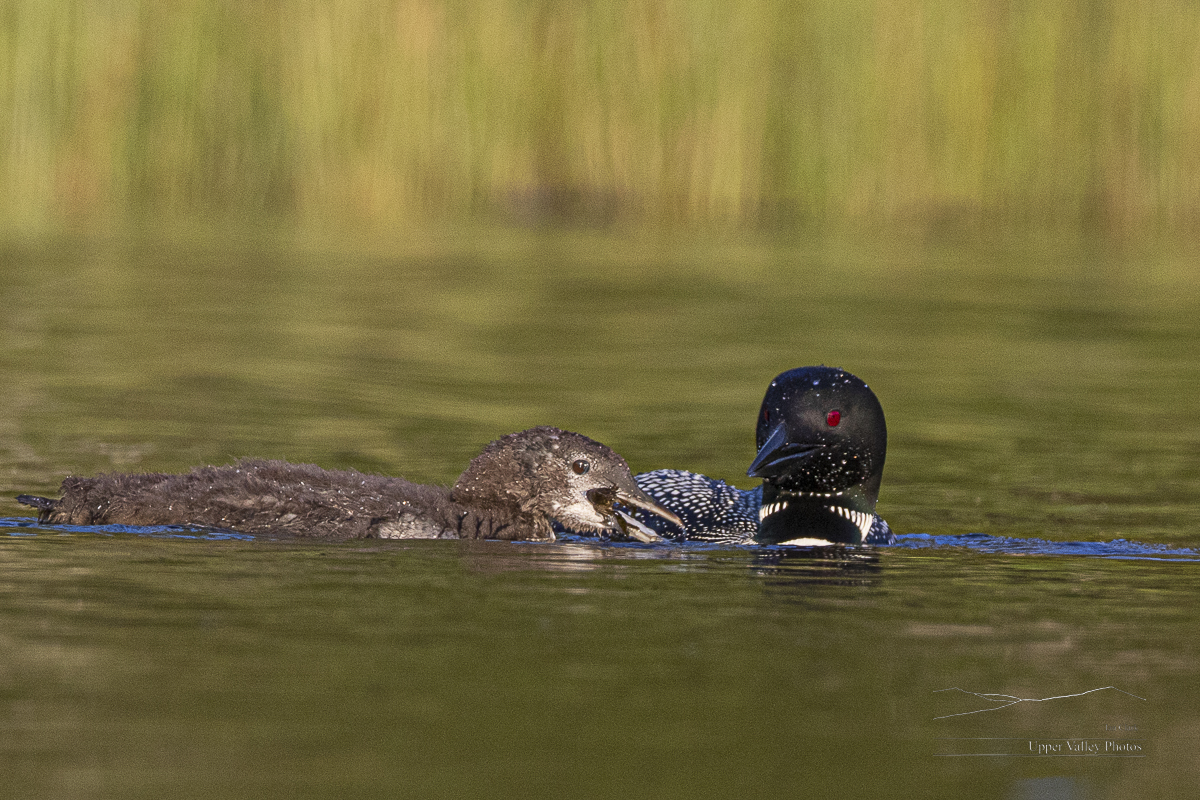
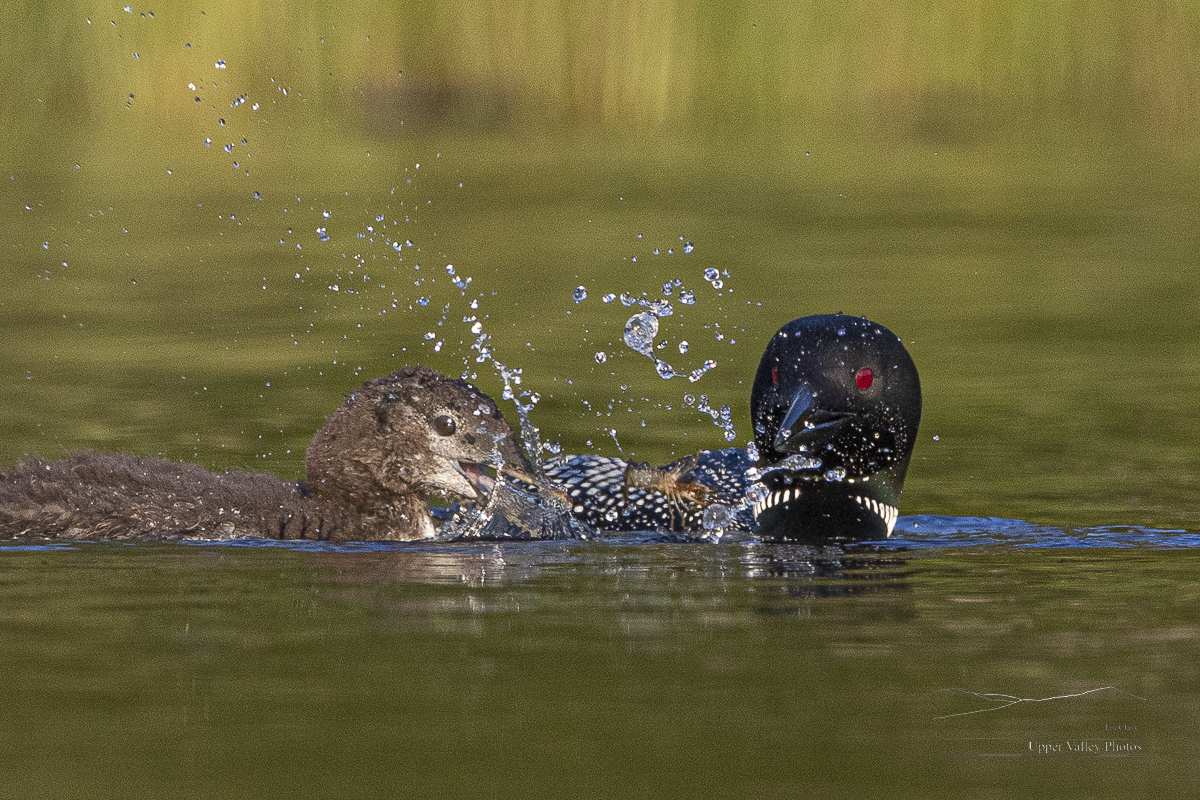

Know someone who might like my blog? Please share it with them or on your social media.
Loon Fight For Territory
Today was another beautiful day to get out to check on the loons. I headed to the pond where the chicks had yet to hatch when I visited Friday. This is the westernmost pond that I’ve been watching, so these birds are the ‘Westons.’
There was a single loon floating by itself near the boat launch, and a long way from the nest. This is the pond that has had intruders challenging the home team for the territory this spring.
A ways down the pond, I found the home team lazily foraging with two chicks.
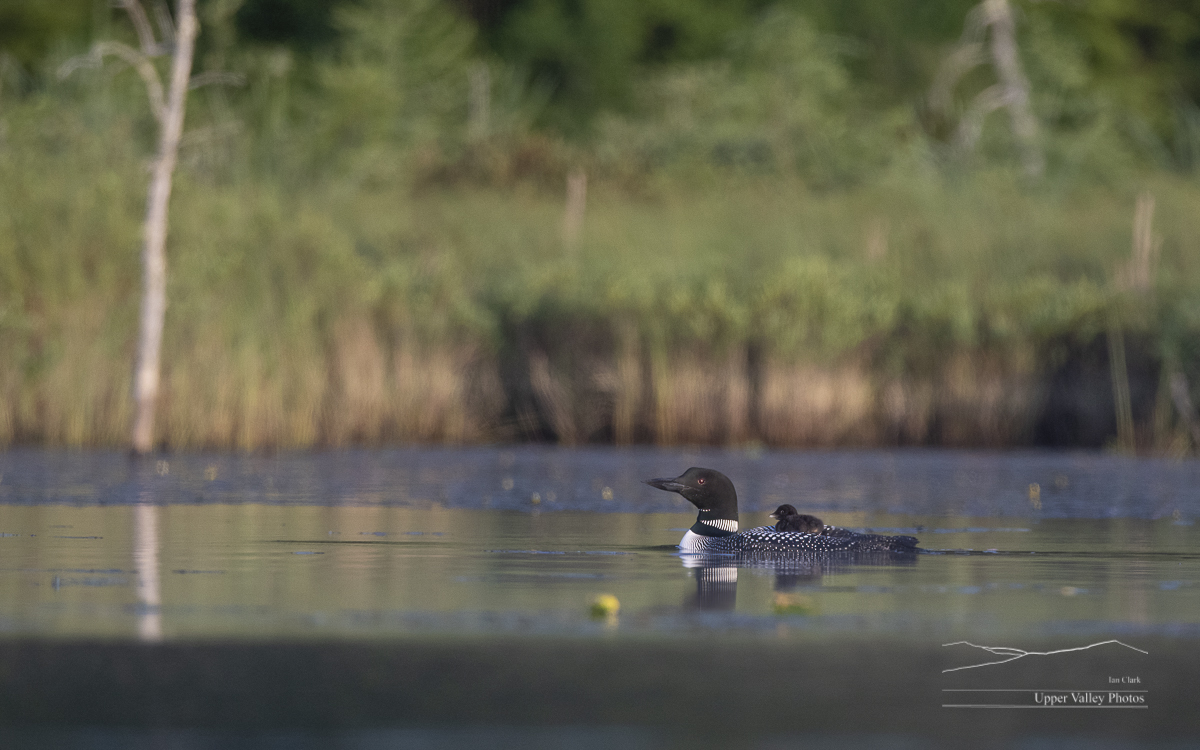
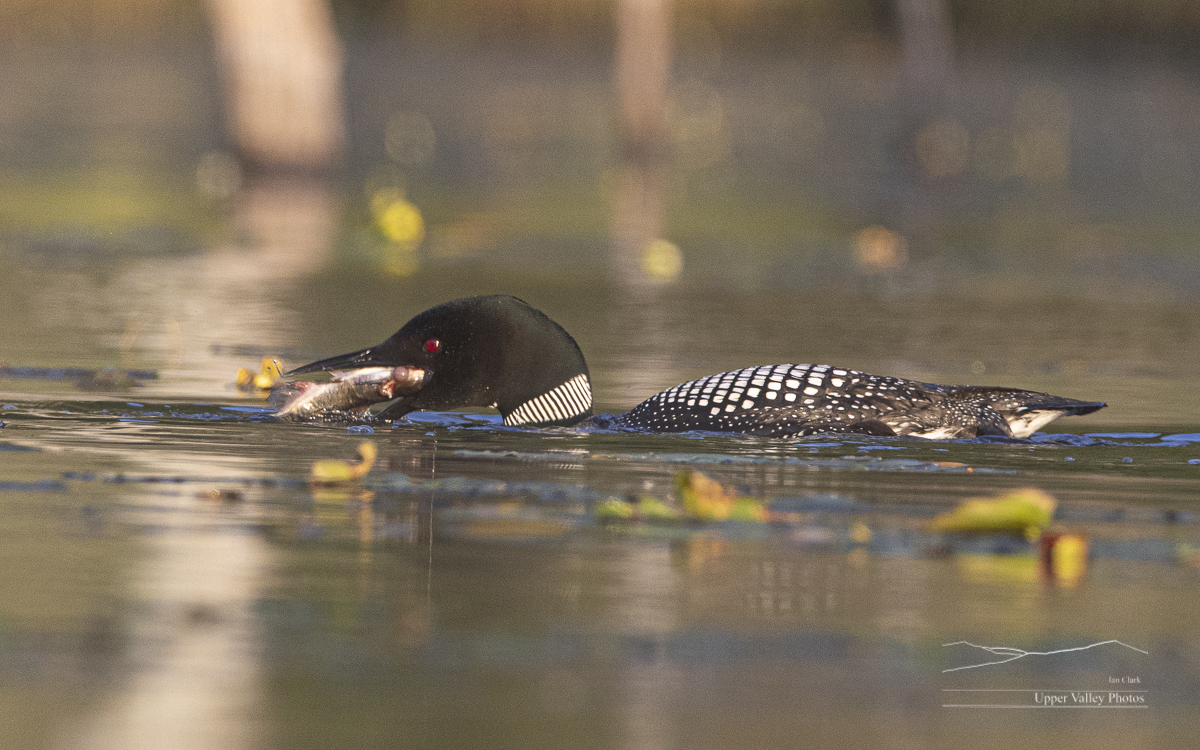
Our family drifted out towards the middle of the pond when things got exciting.
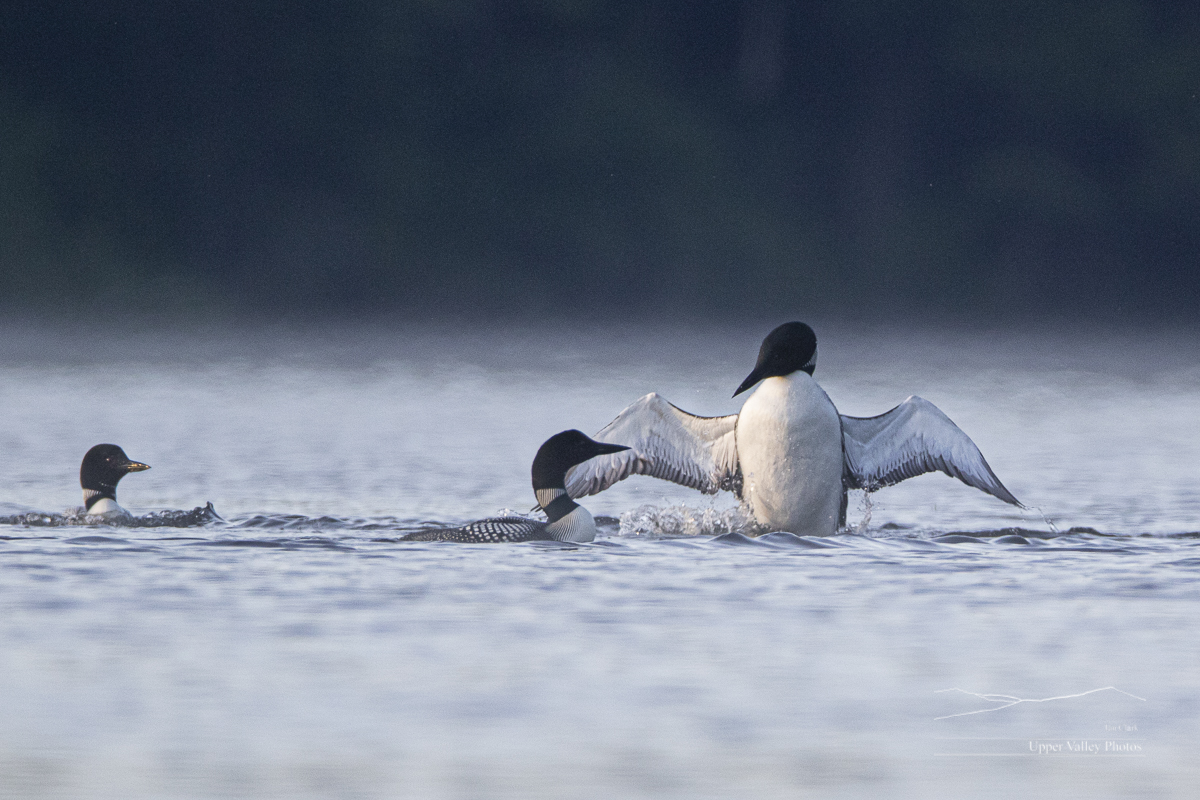
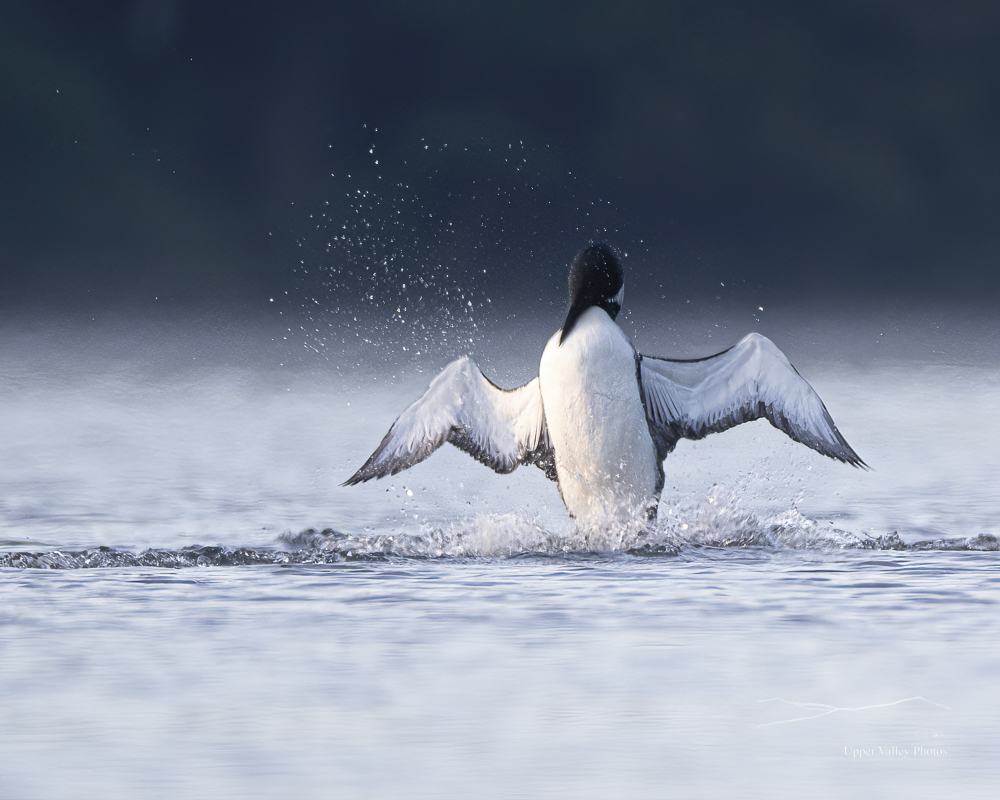
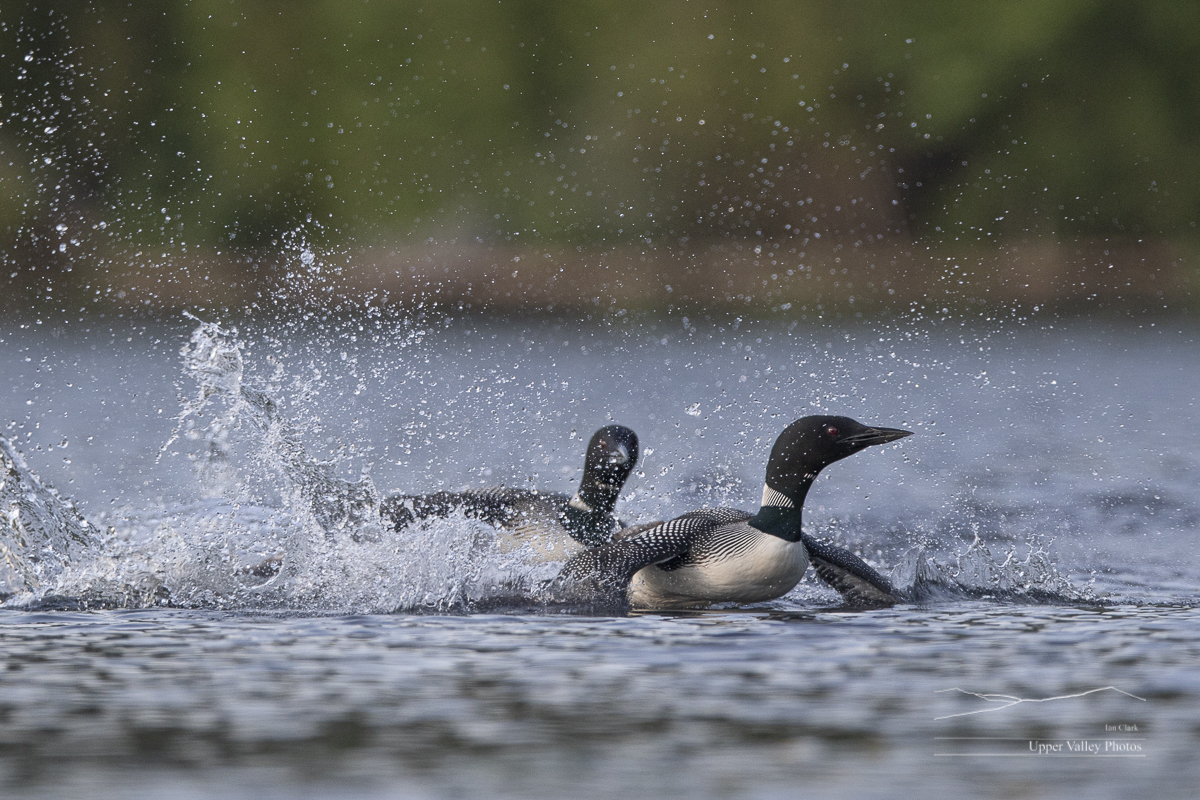
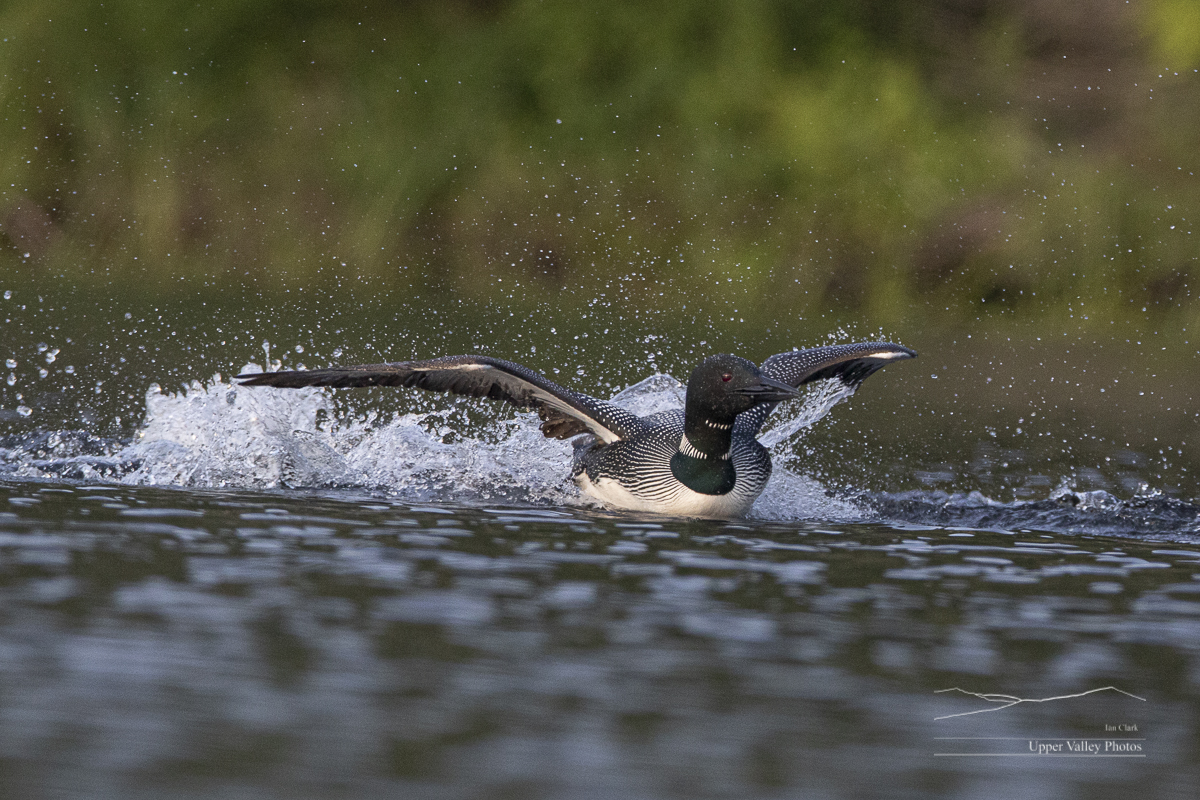
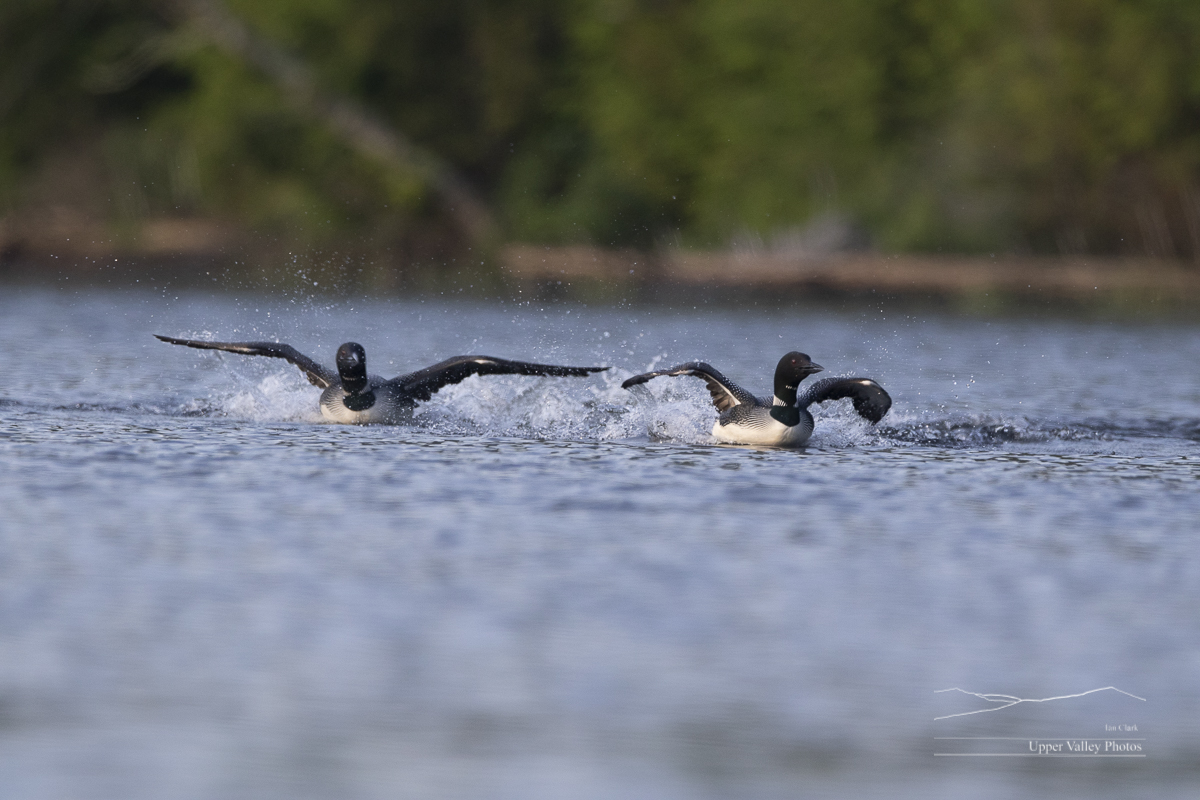
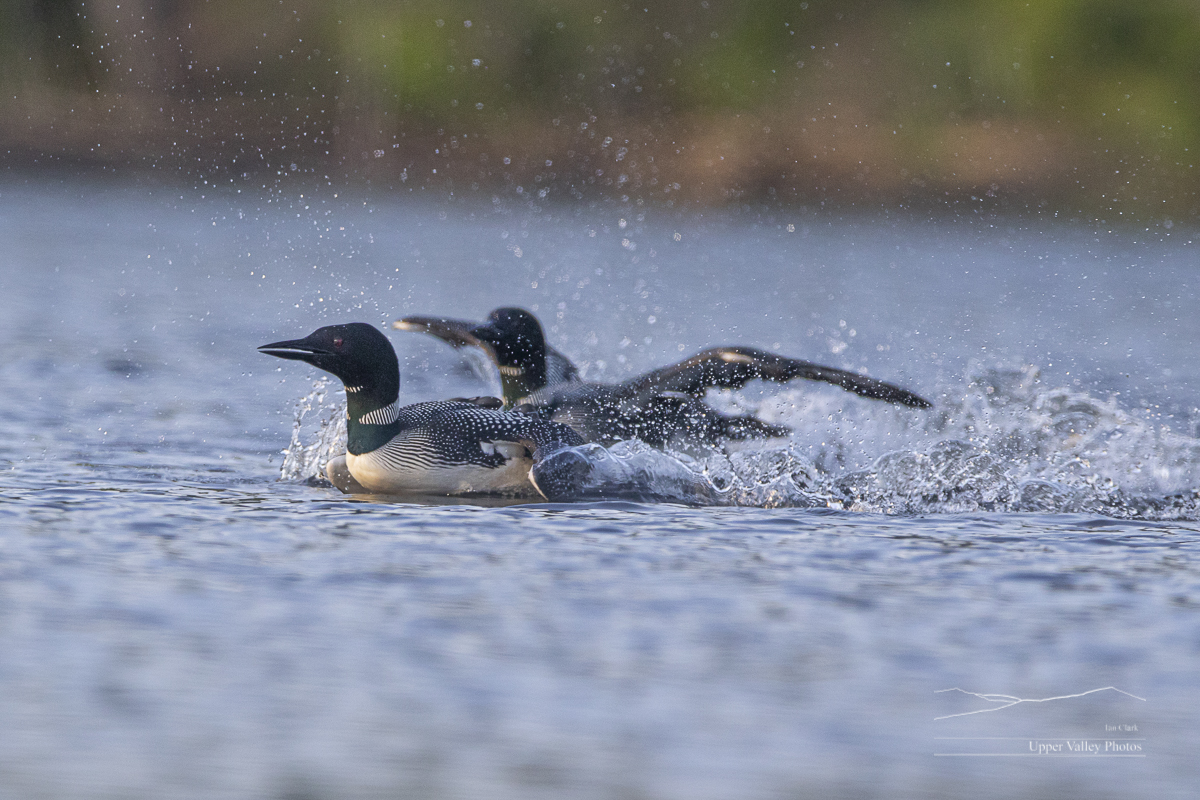

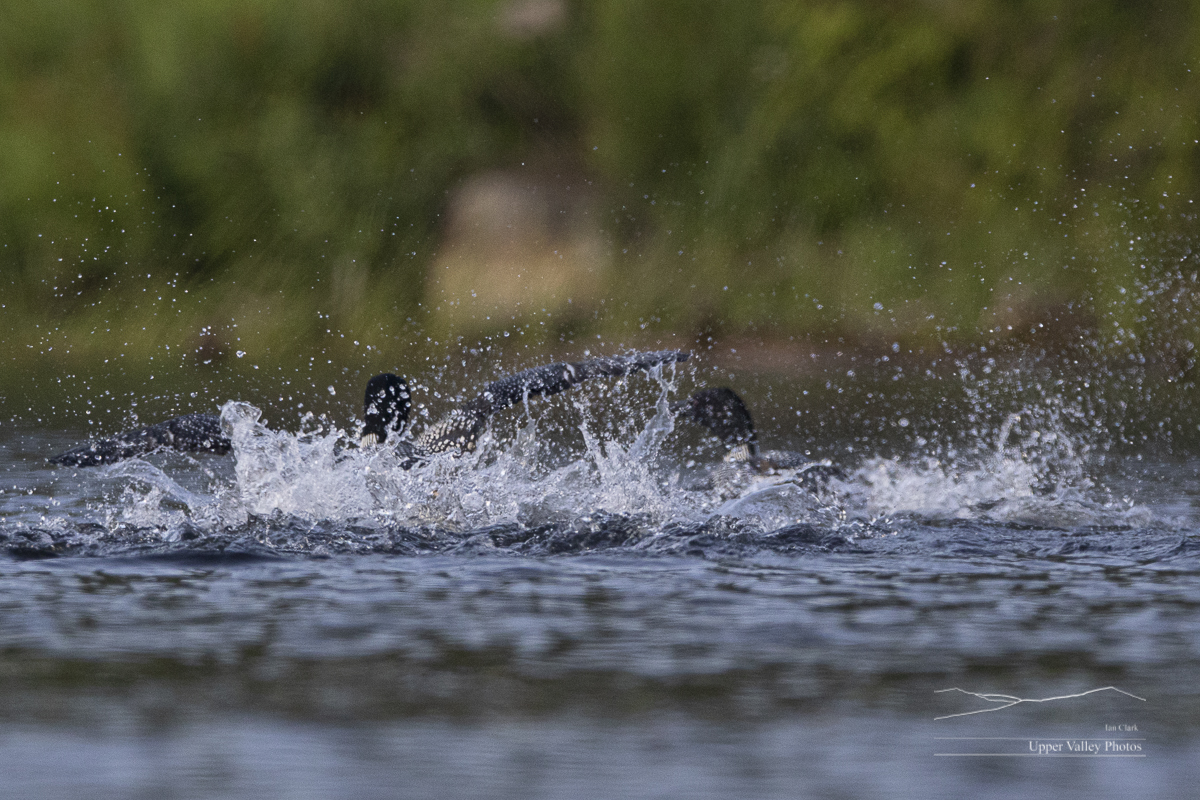
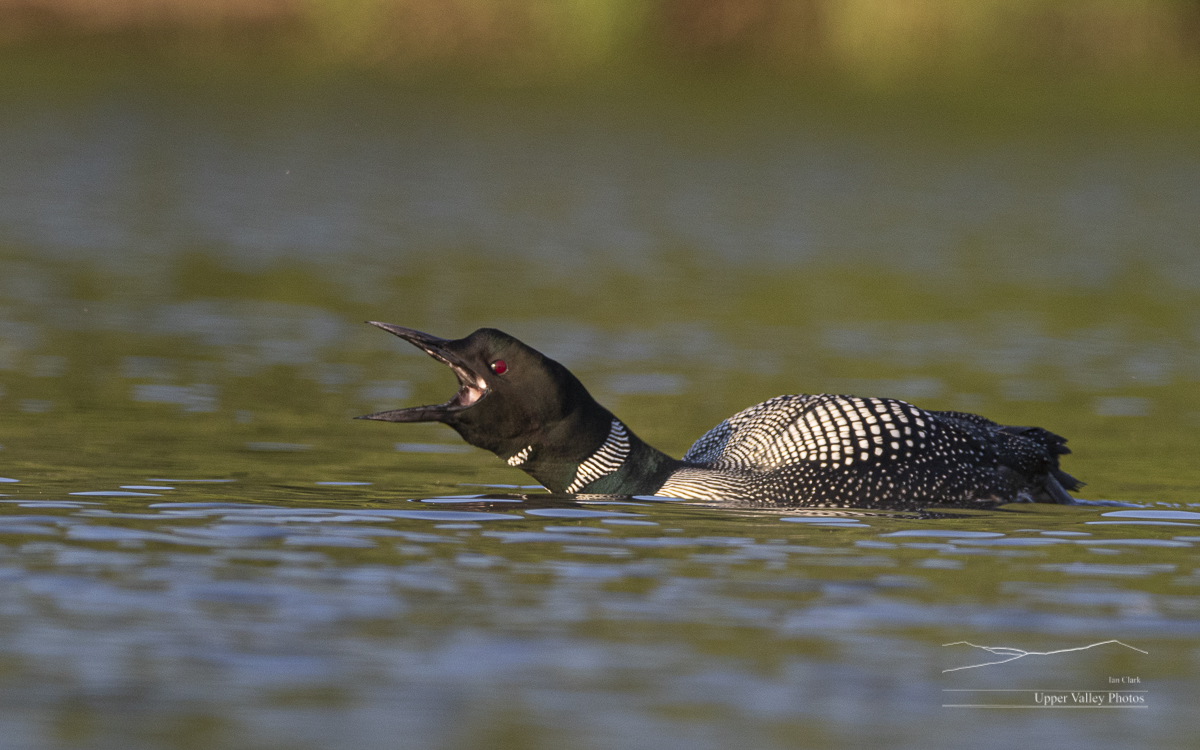
Loon Chicks At One Week
This morning was a perfect morning to be a loon on an Upper Valley Pond. Well, I can’t know that for sure, but it was a great day to be a loon photographer… The family I visited – I’m going to call them the Eastons – had the chicks hatch Friday and Saturday a week ago.
I’m trying to follow three families again this summer. Last year, I kept trying to sort out which family we were looking at by the number of chicks. That’s not going to work this year, the first two families each hatched two chicks. (The third is due… yesterday.) So, This family, that had the two chicks last year is now the ‘Eastons.’ The second family in the last post is now the ‘Middletons.’ And the family still sitting is now the ‘Westons.’ (I’ve learned the hard way to be circumspect about where I’m working. I’m now getting something like 10,000 visitors a month and not all of them have the loons’ best interest at heart.
Let’s take a quick peek to see how the Westons are doing.
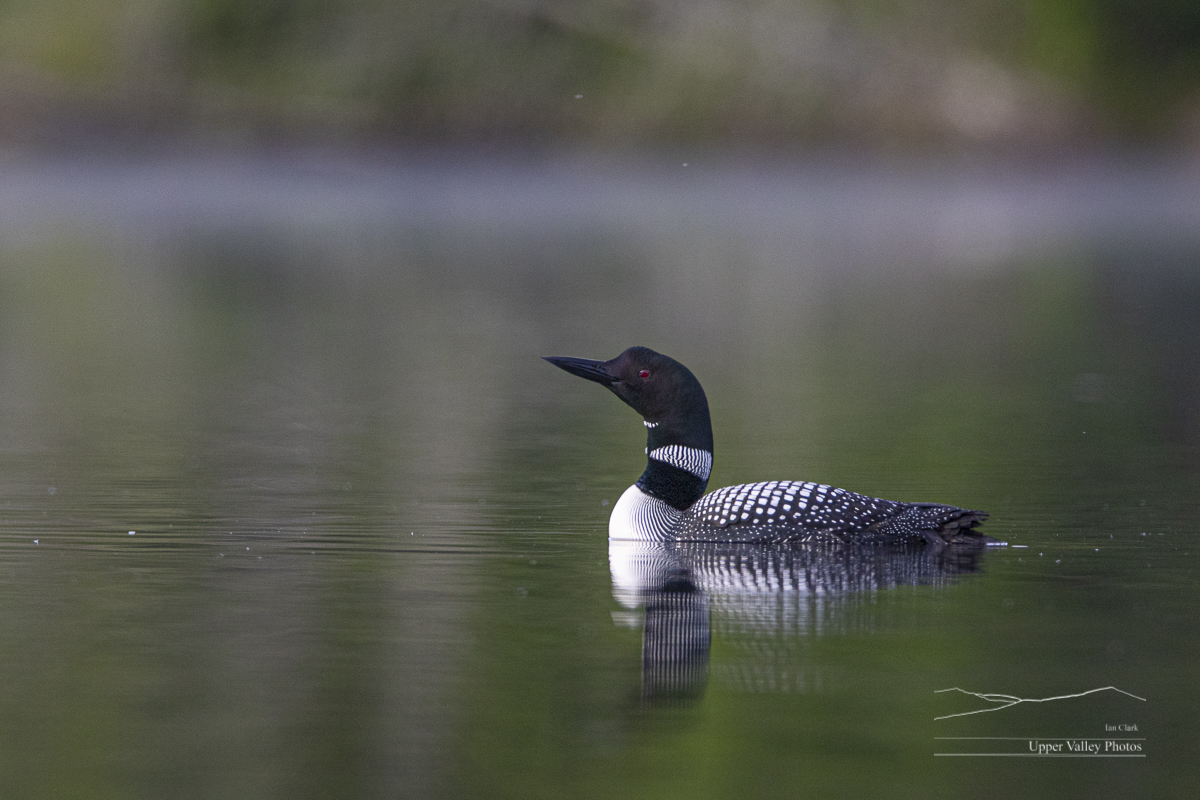
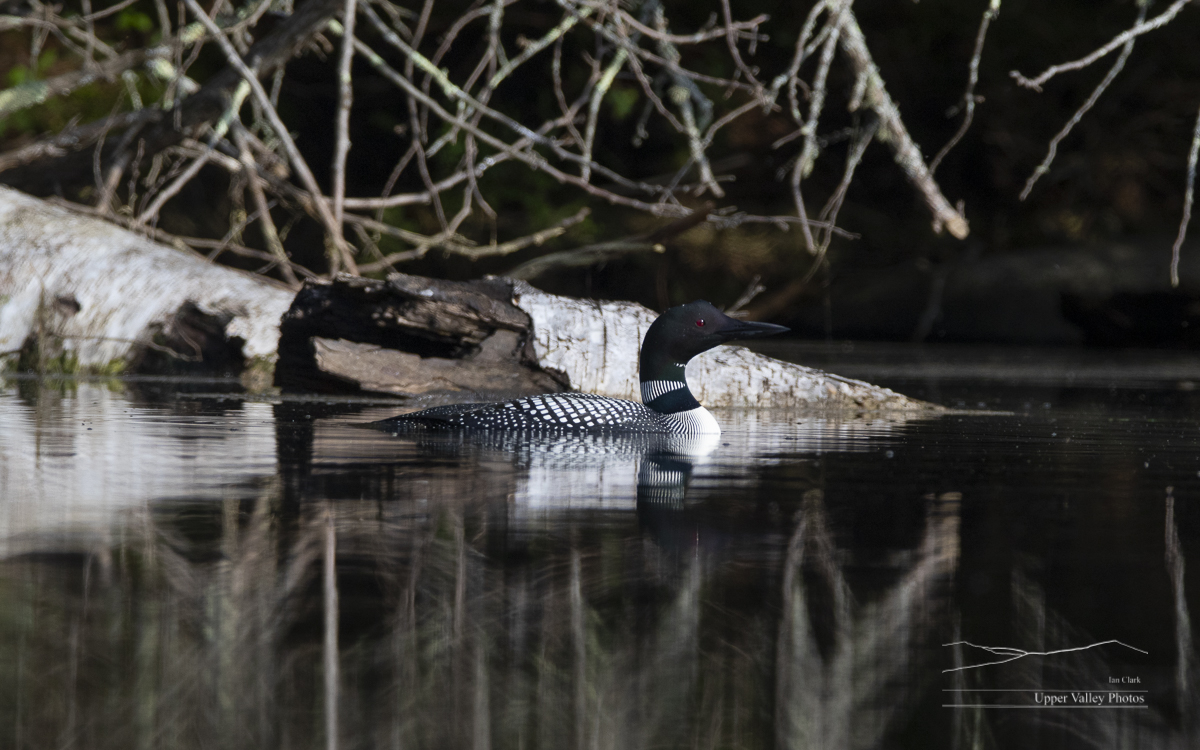

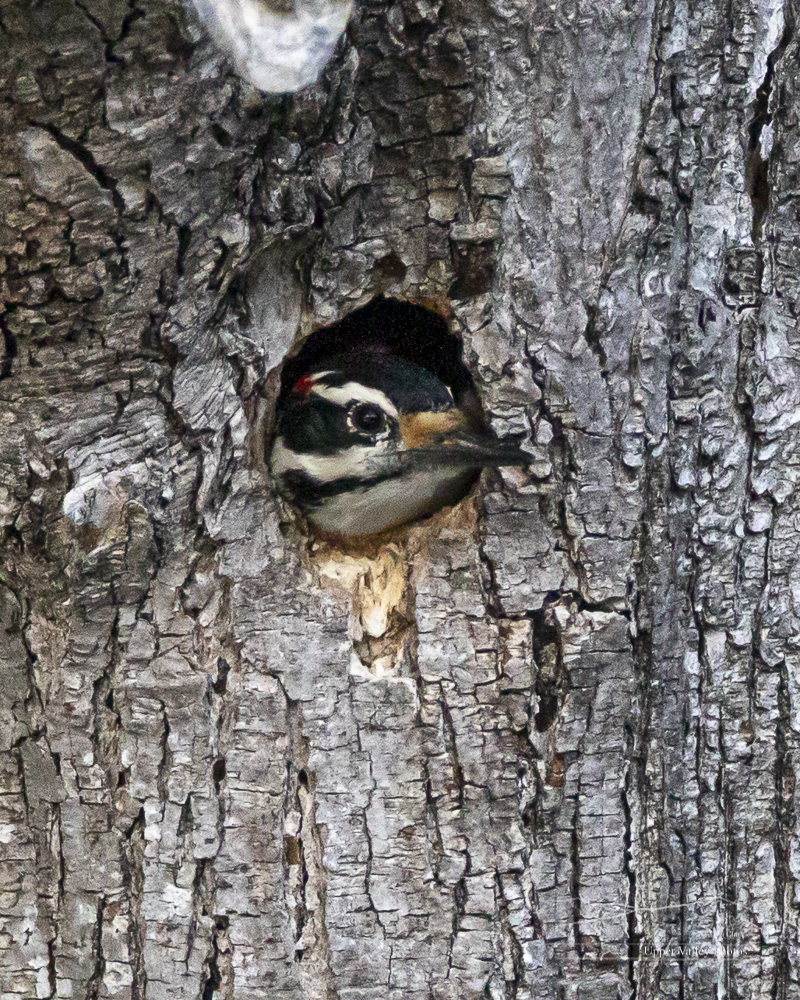
Moving east to this morning’s outing, one of the great blue herons on this pond usually gives me two nice photo ops a year. I think I collected one of them today.
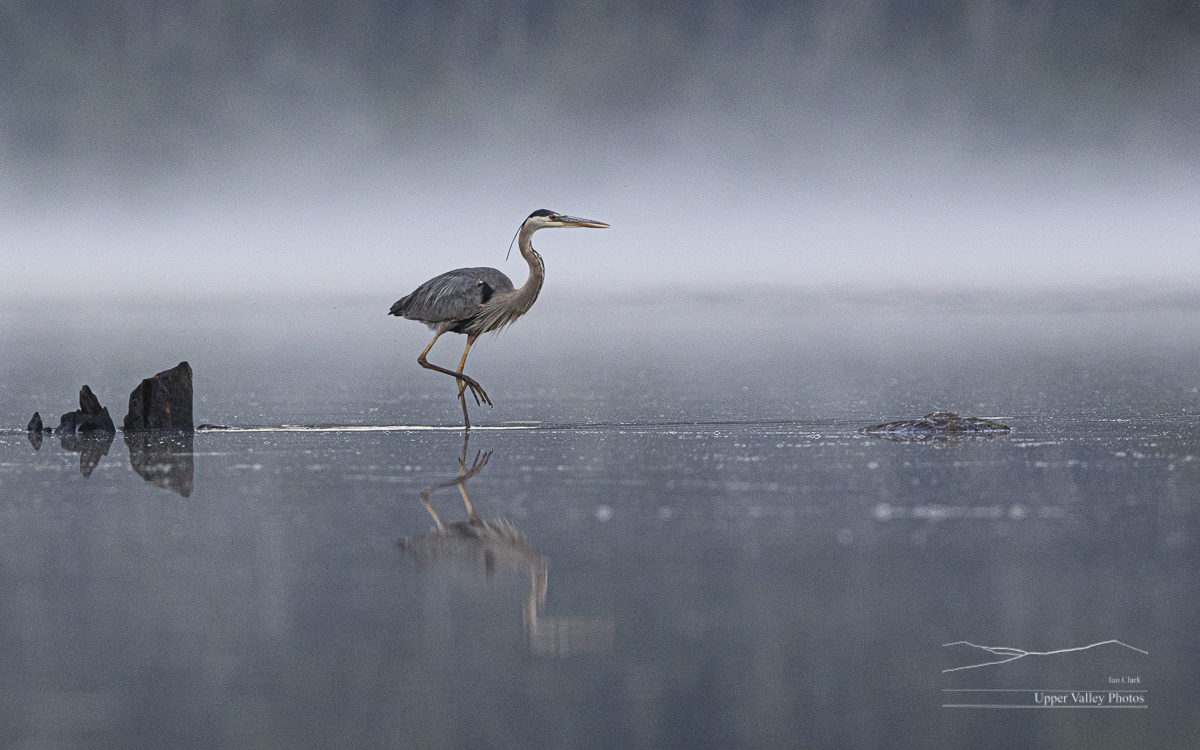
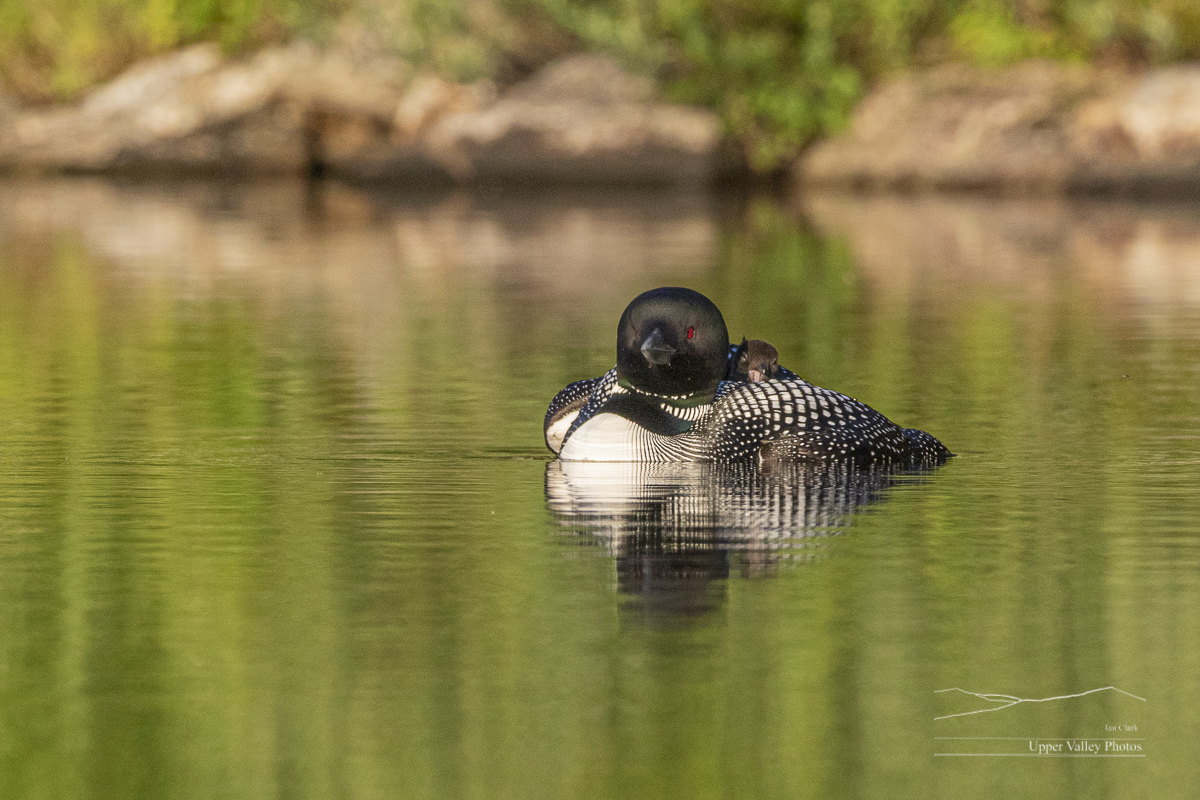
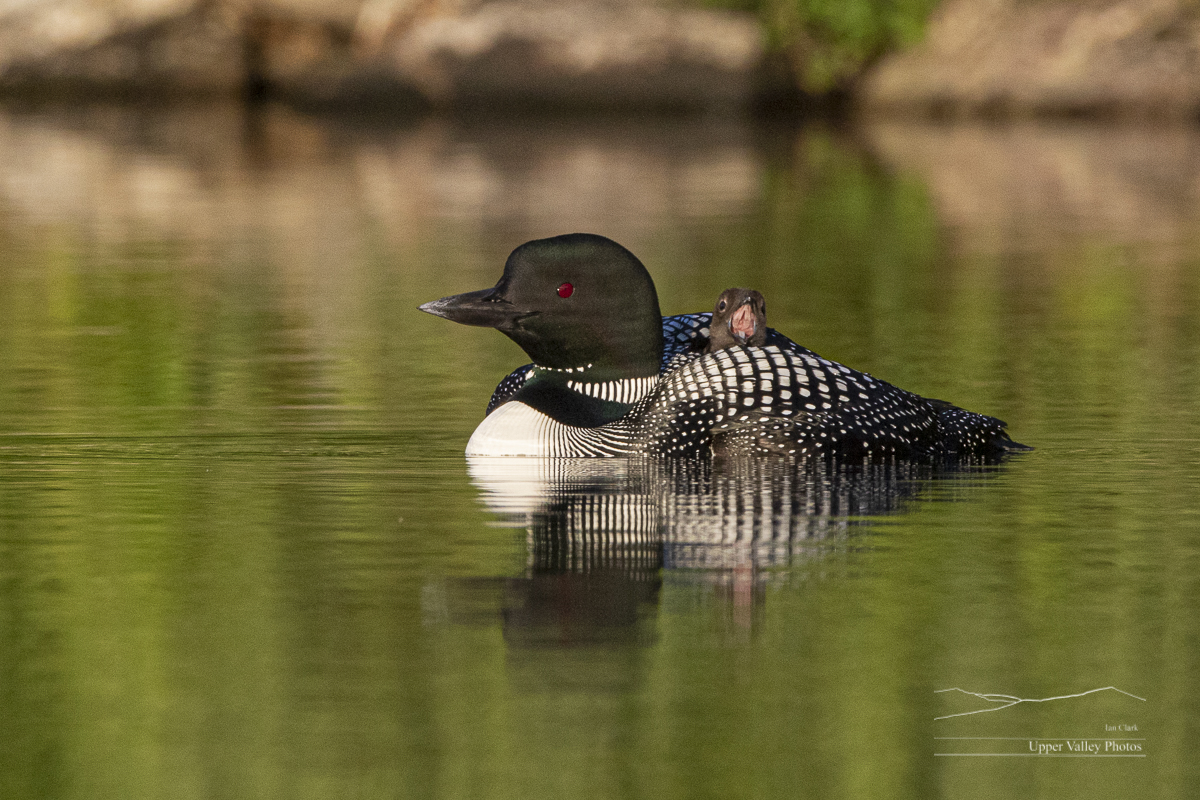
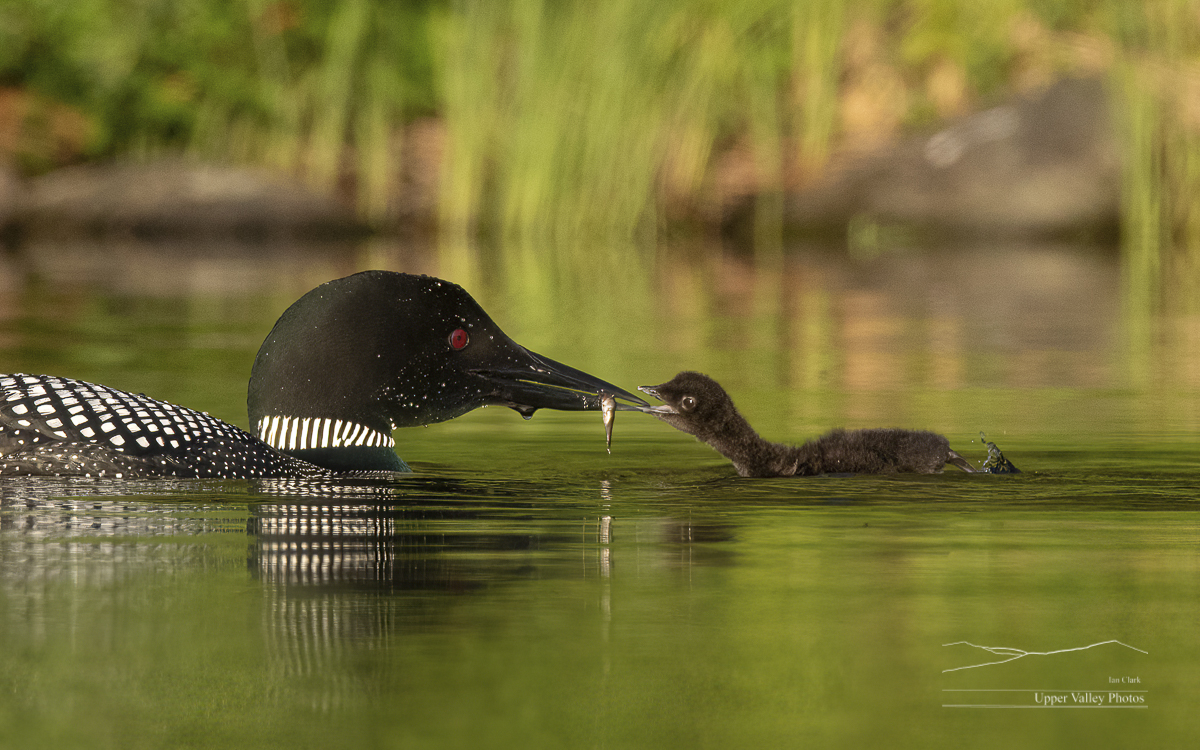
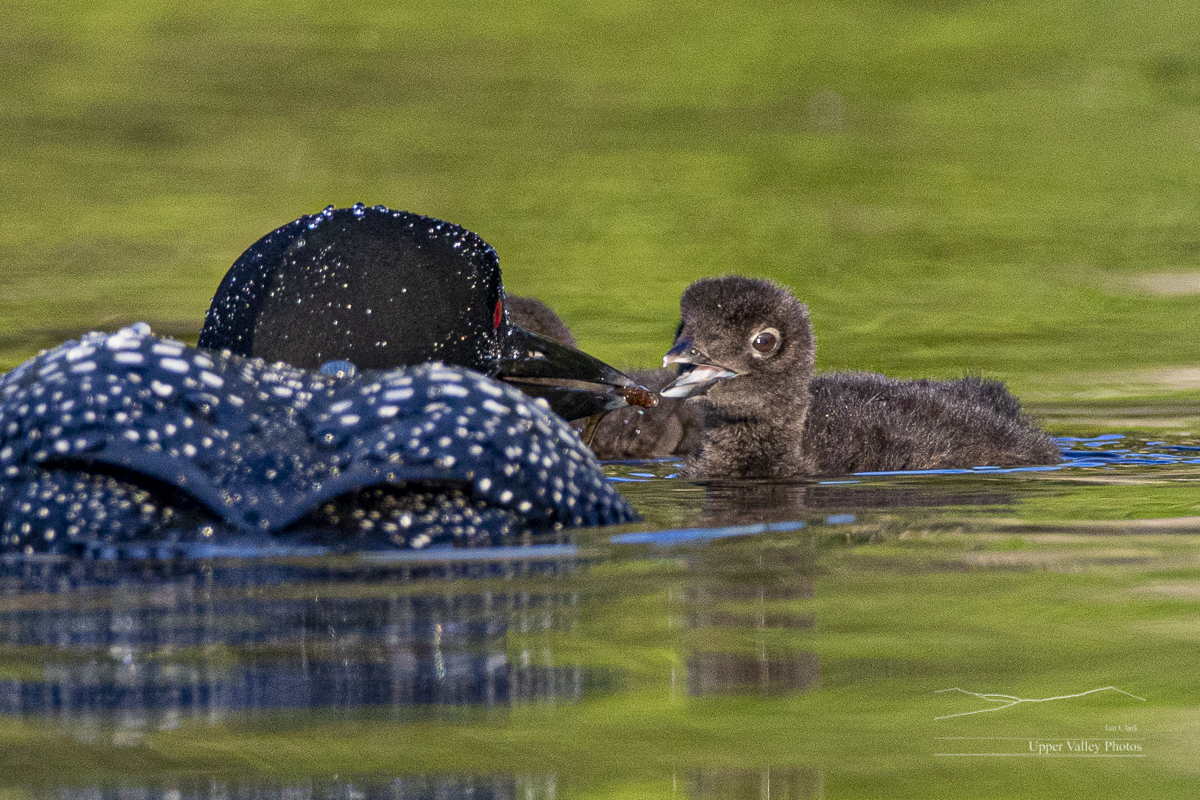
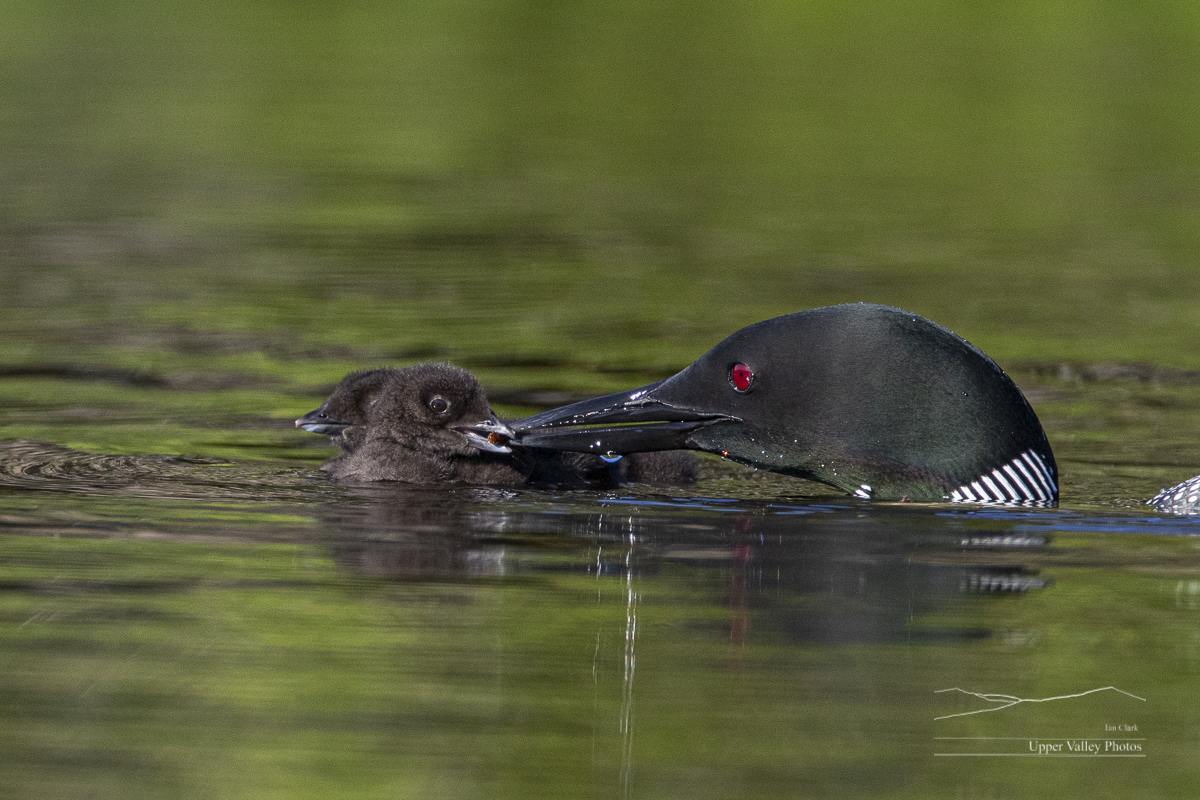
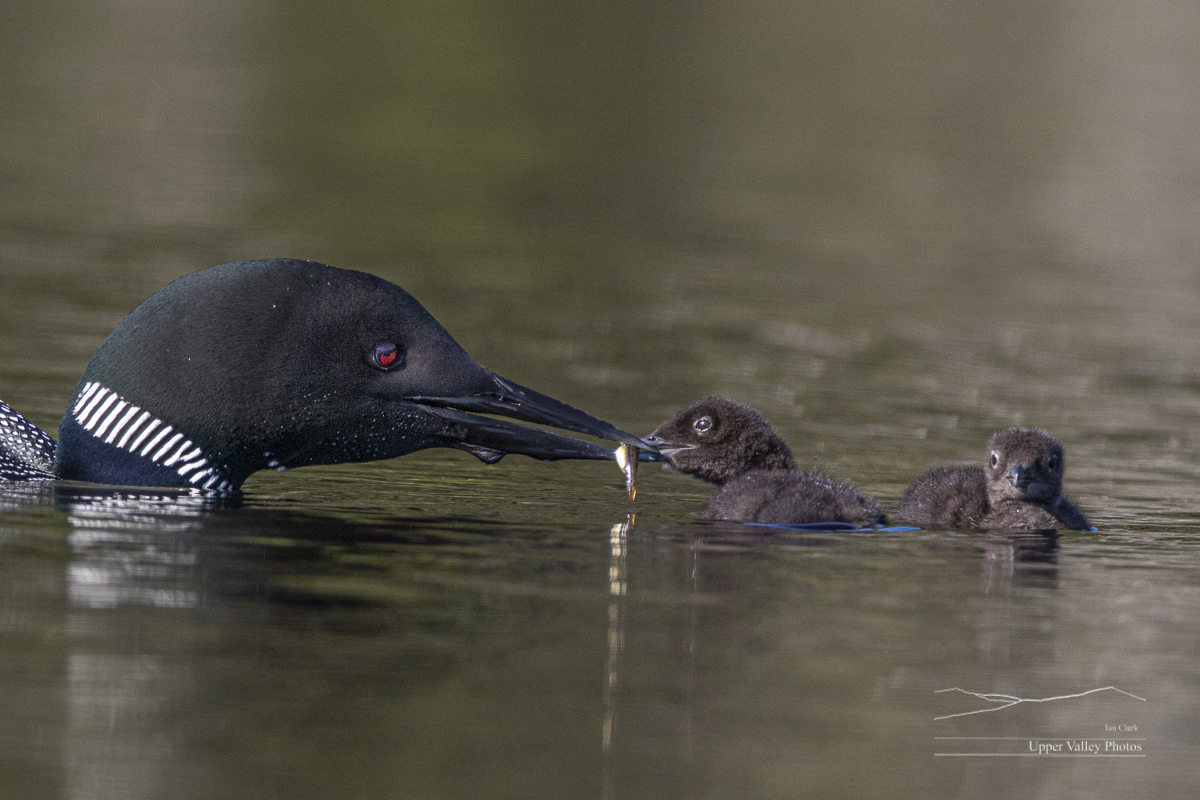

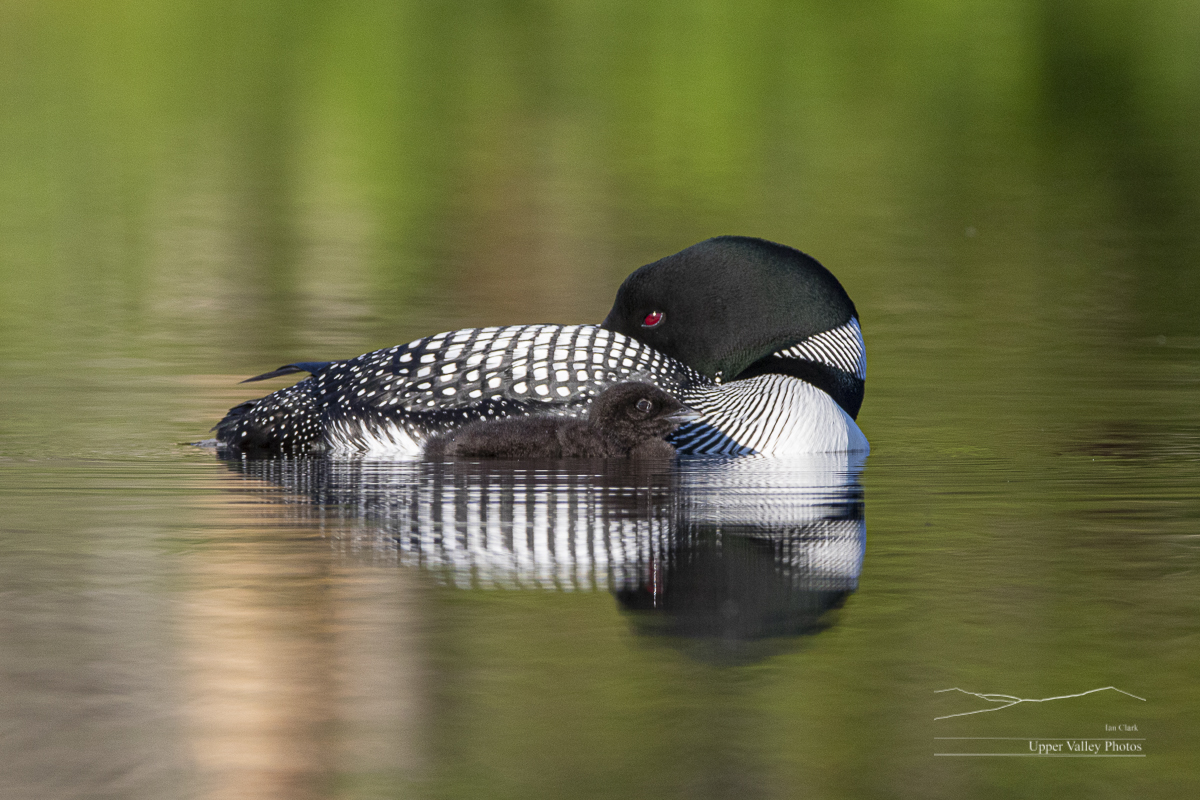
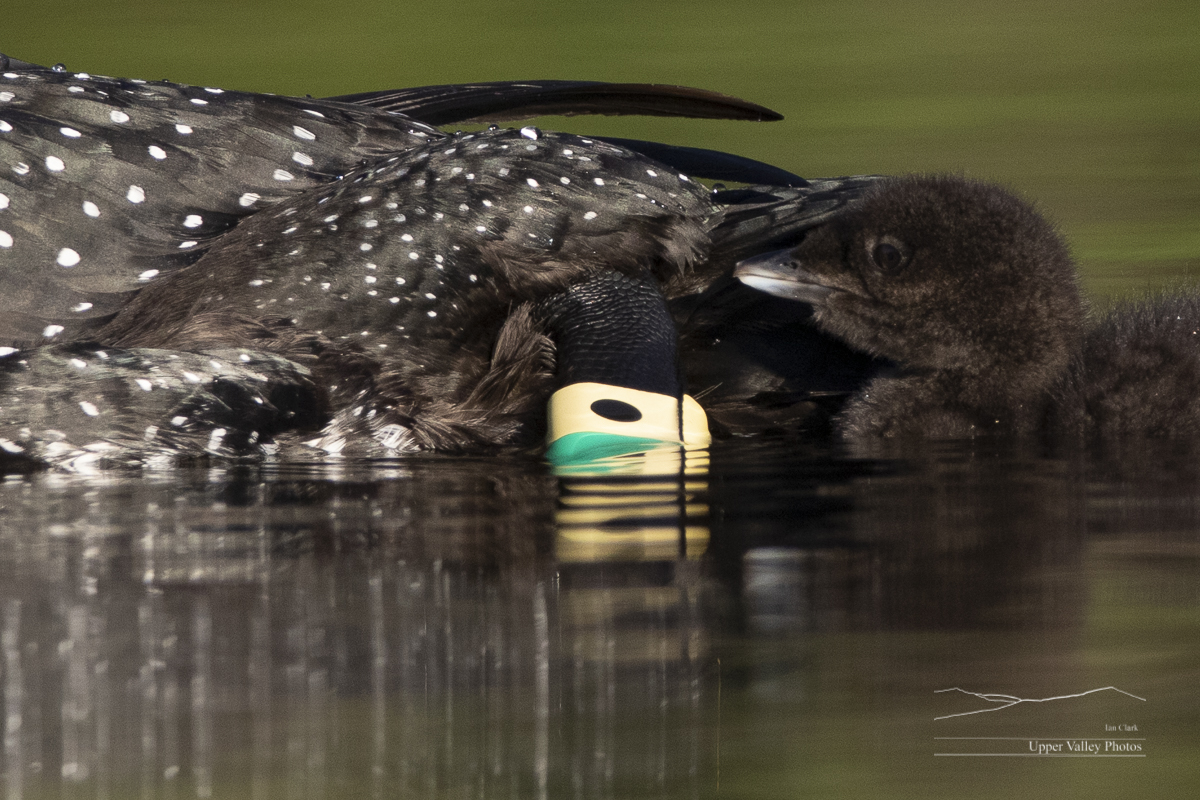
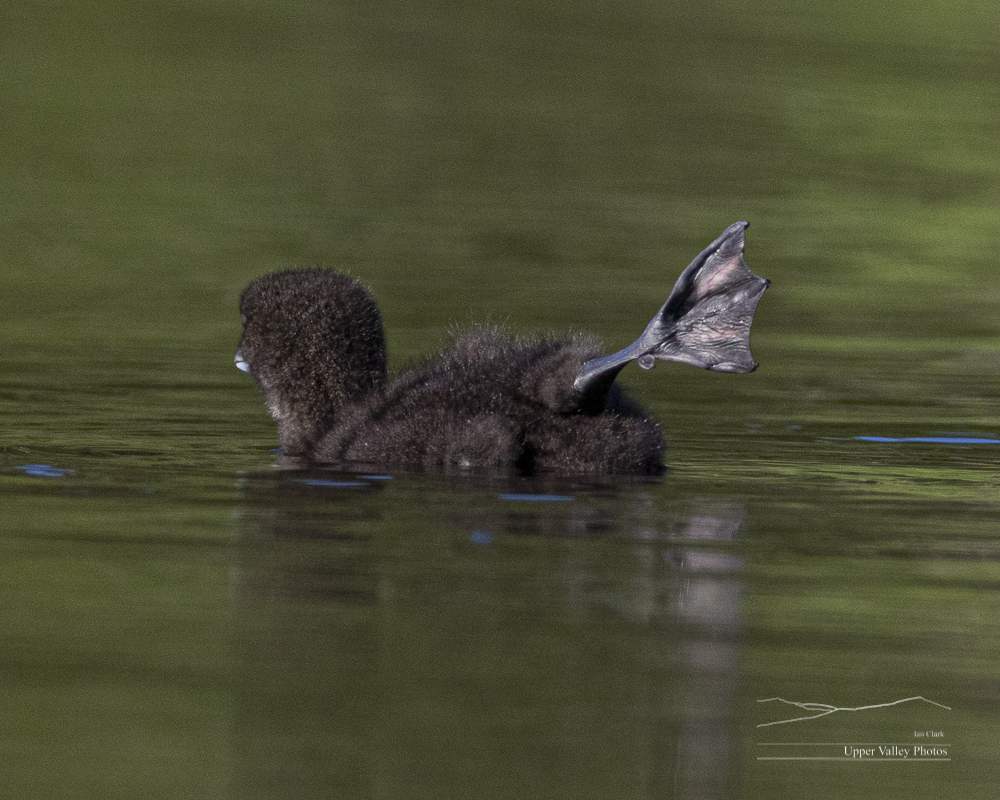
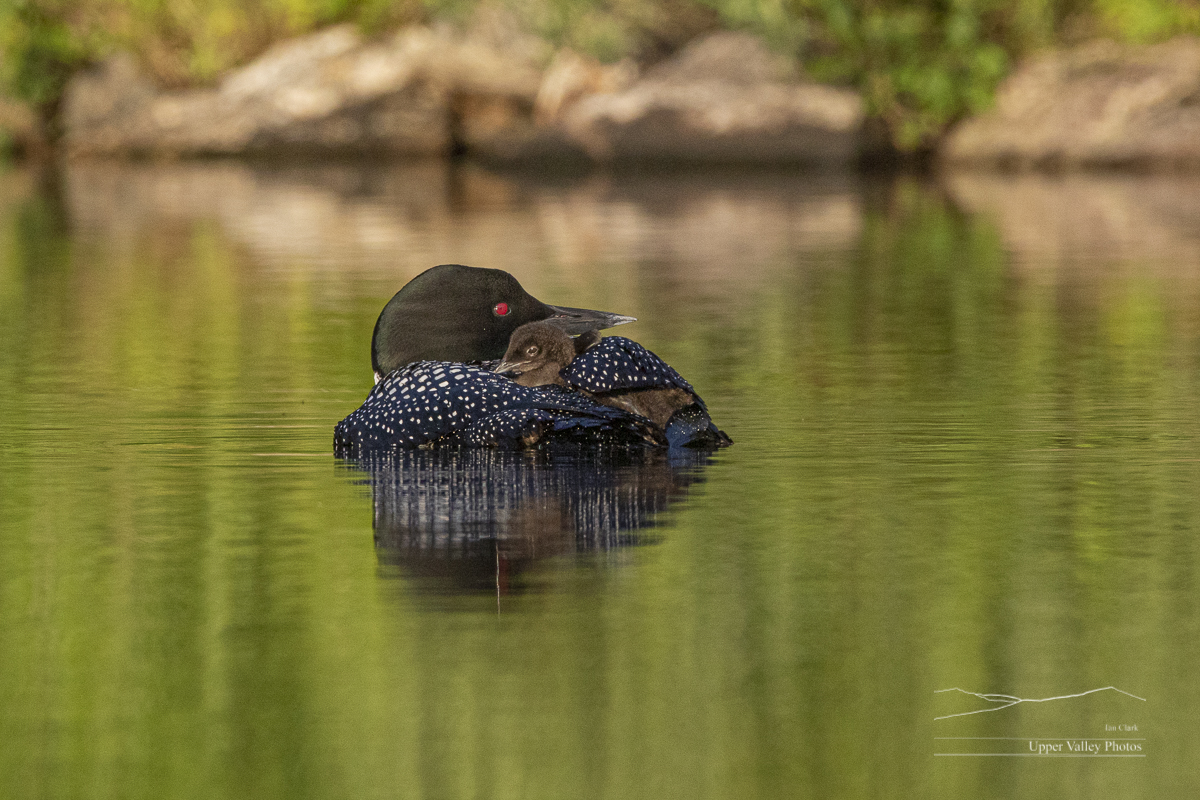


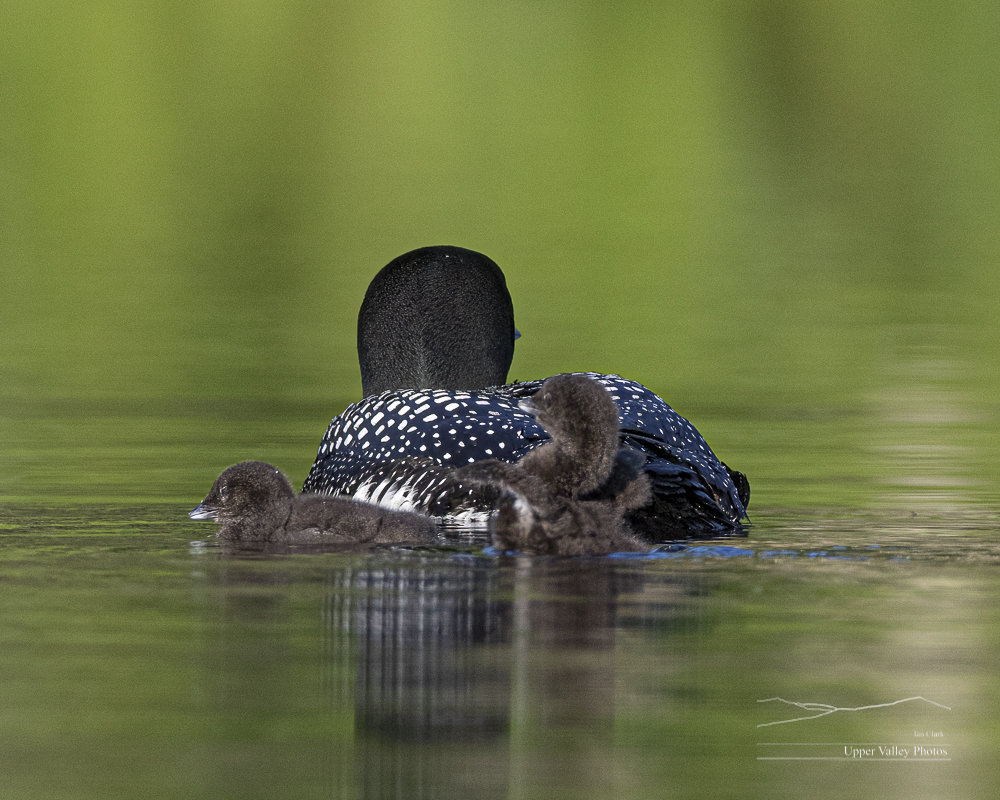
And a few more stretching shots, just because they’re fun…
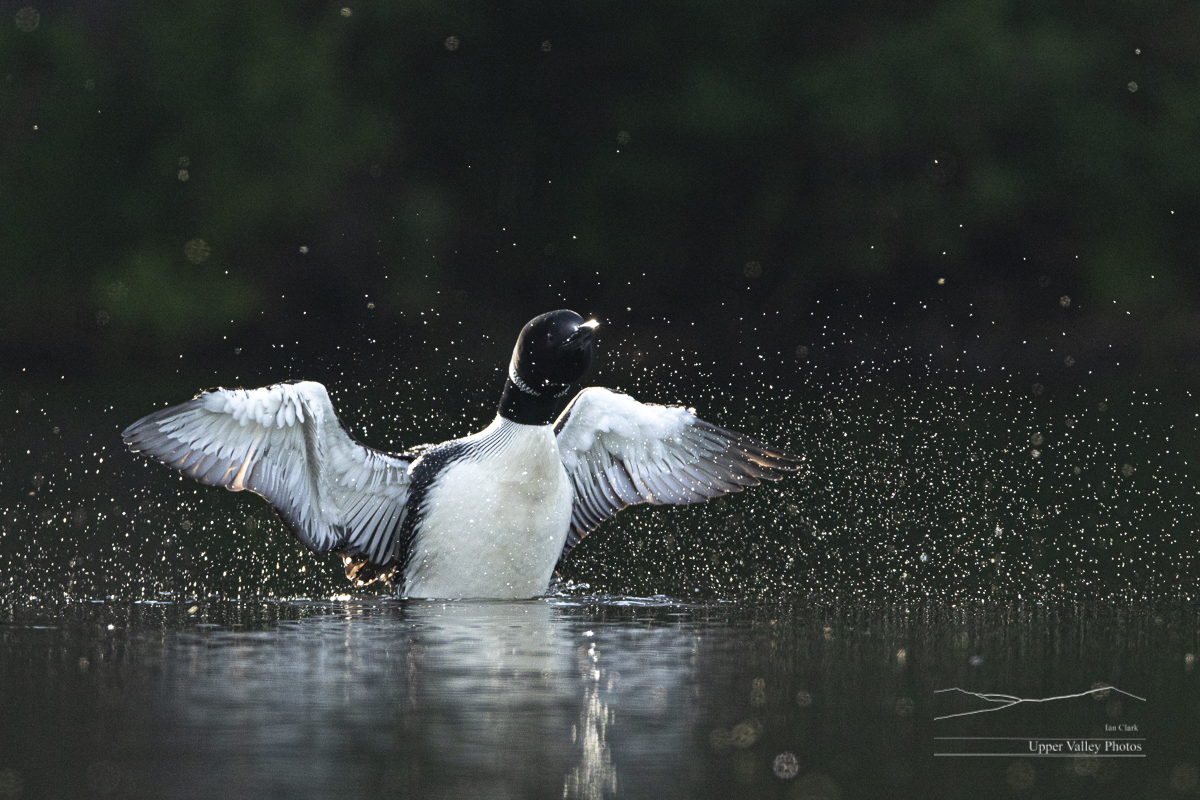

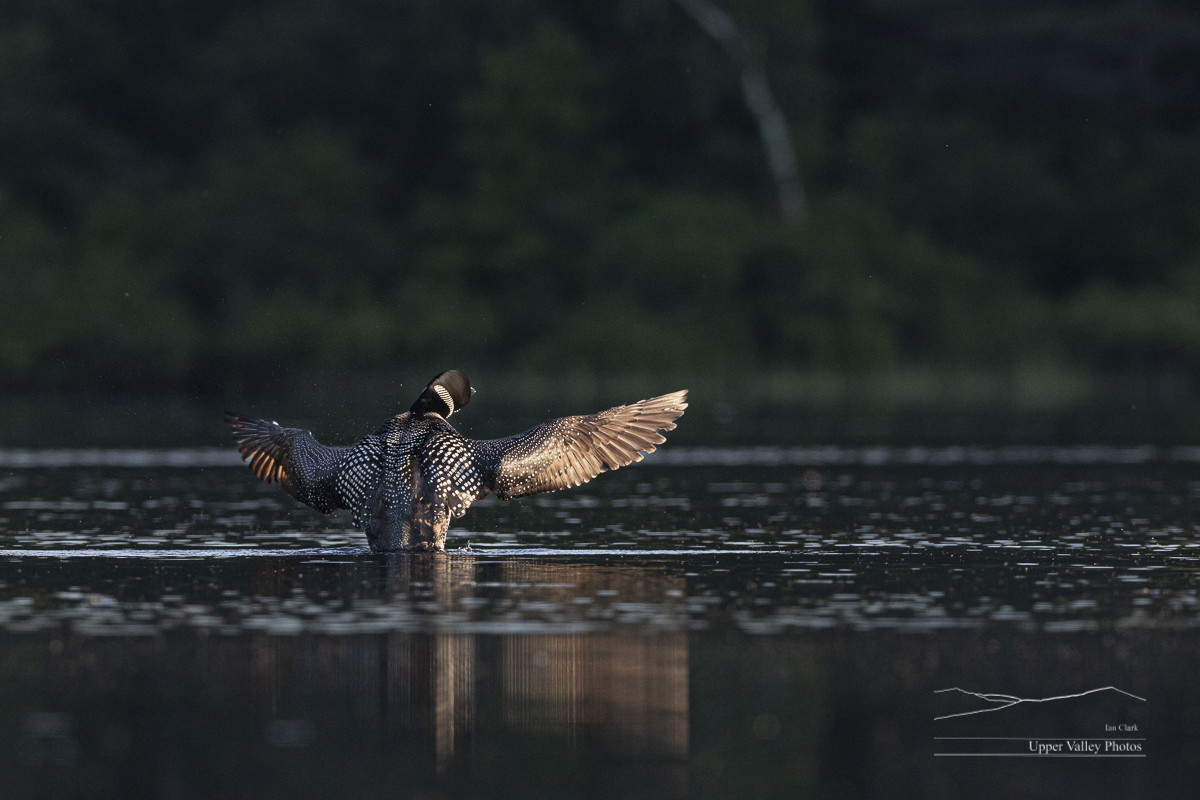
Local Wildlife
Many of the birds around the marsh are nesting, there are lots of parents hauling groceries back their nests, others still sitting on their eggs. The Canada geese have mostly moved on, making the local ponds much quieter places. Let’s see who was out and about this past week.
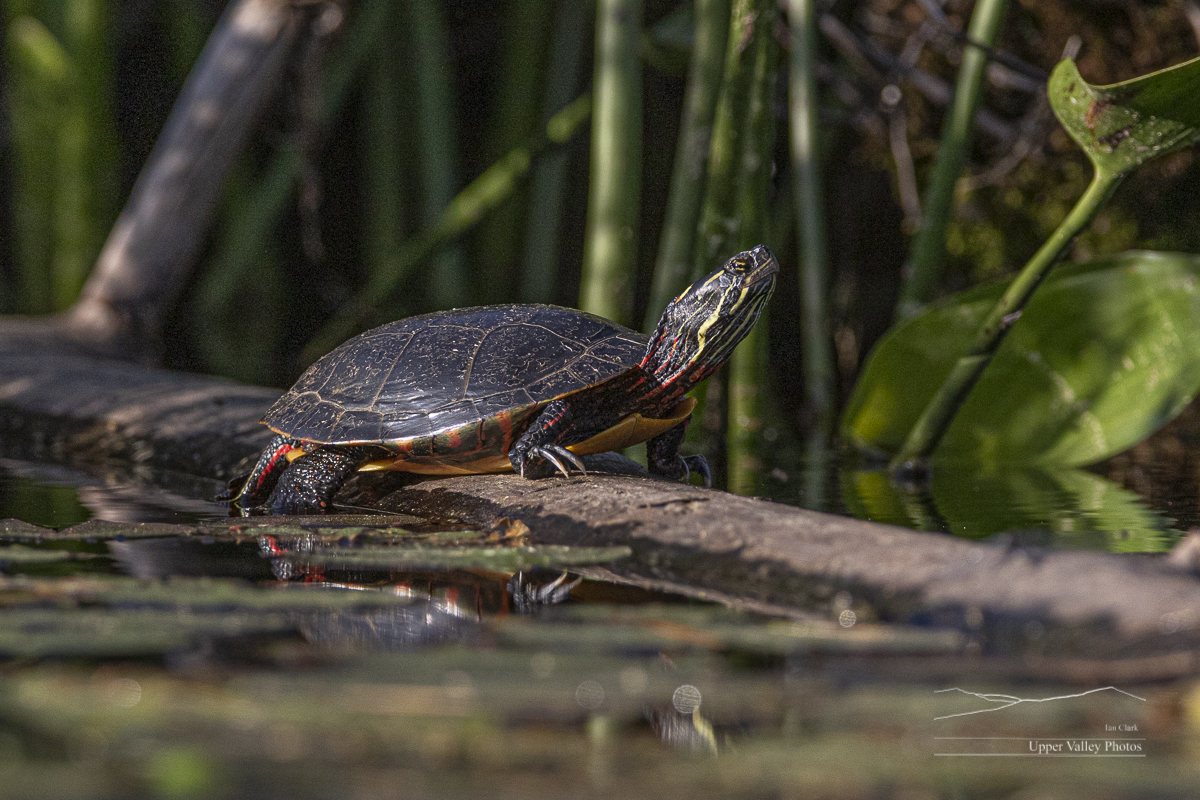
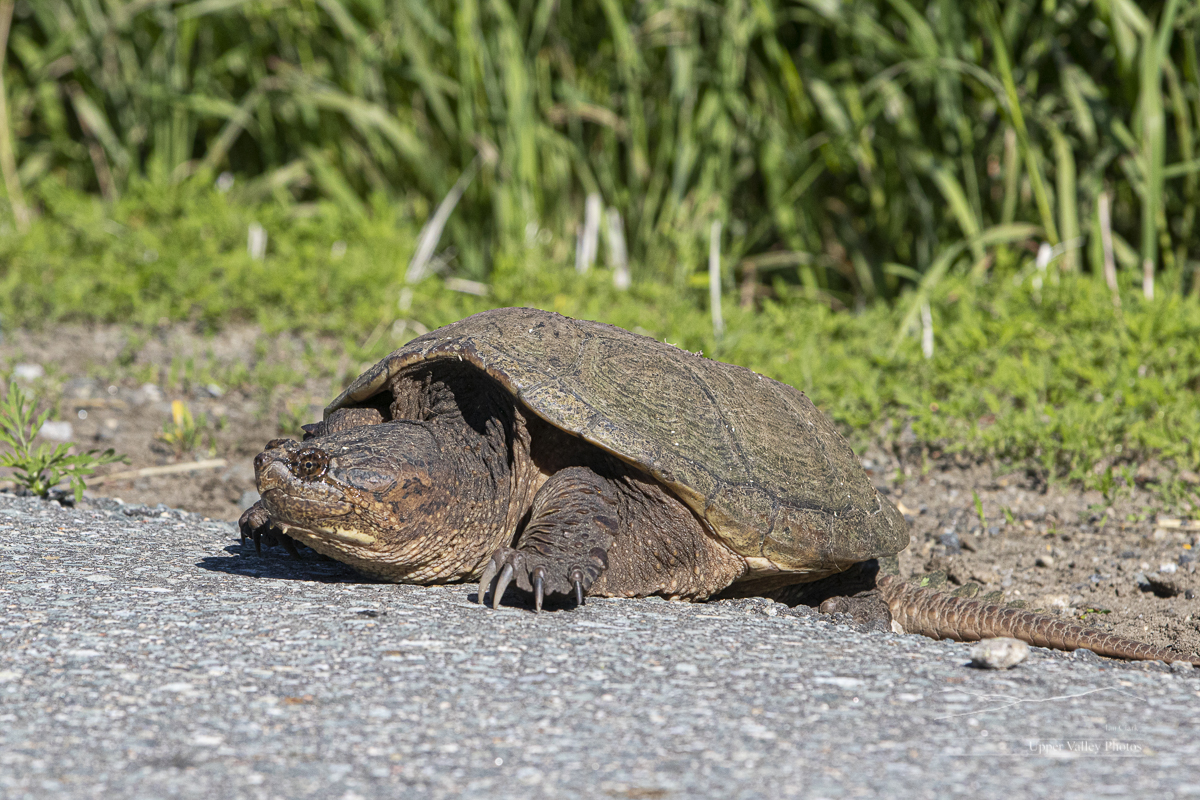
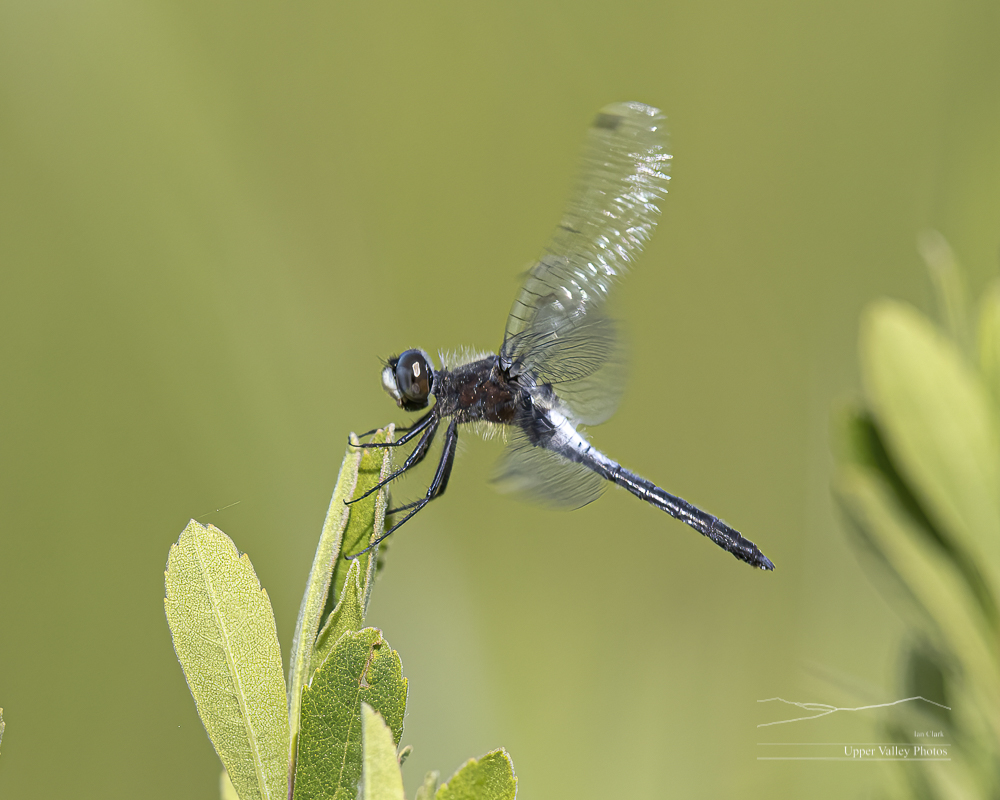
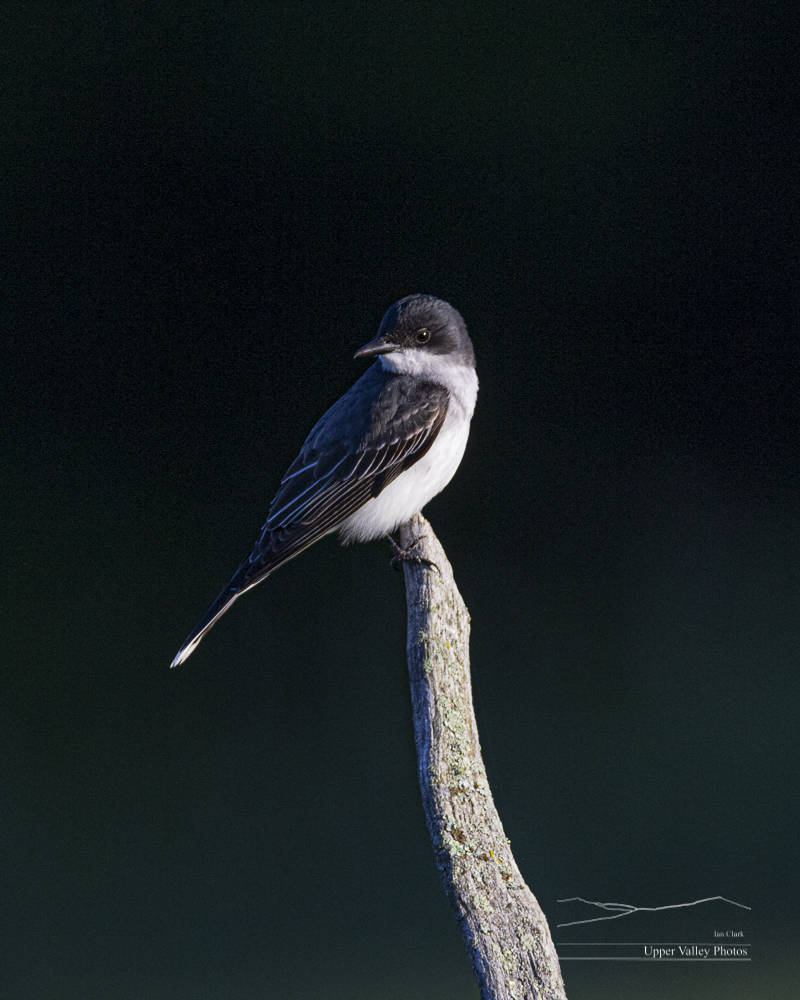
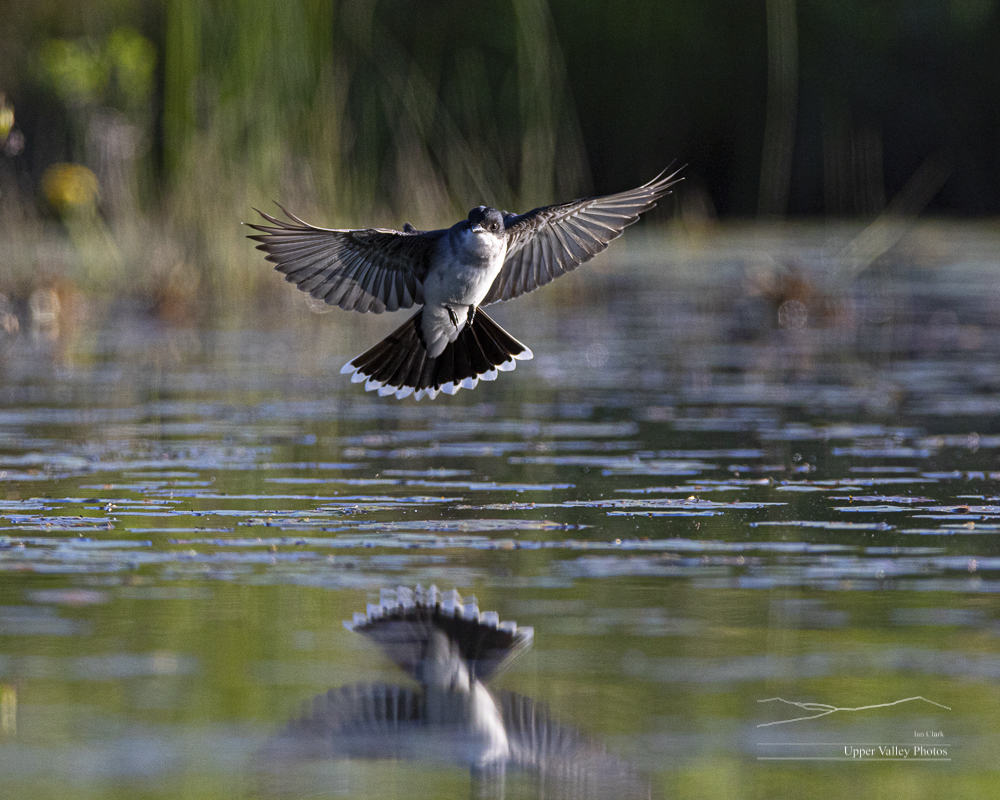

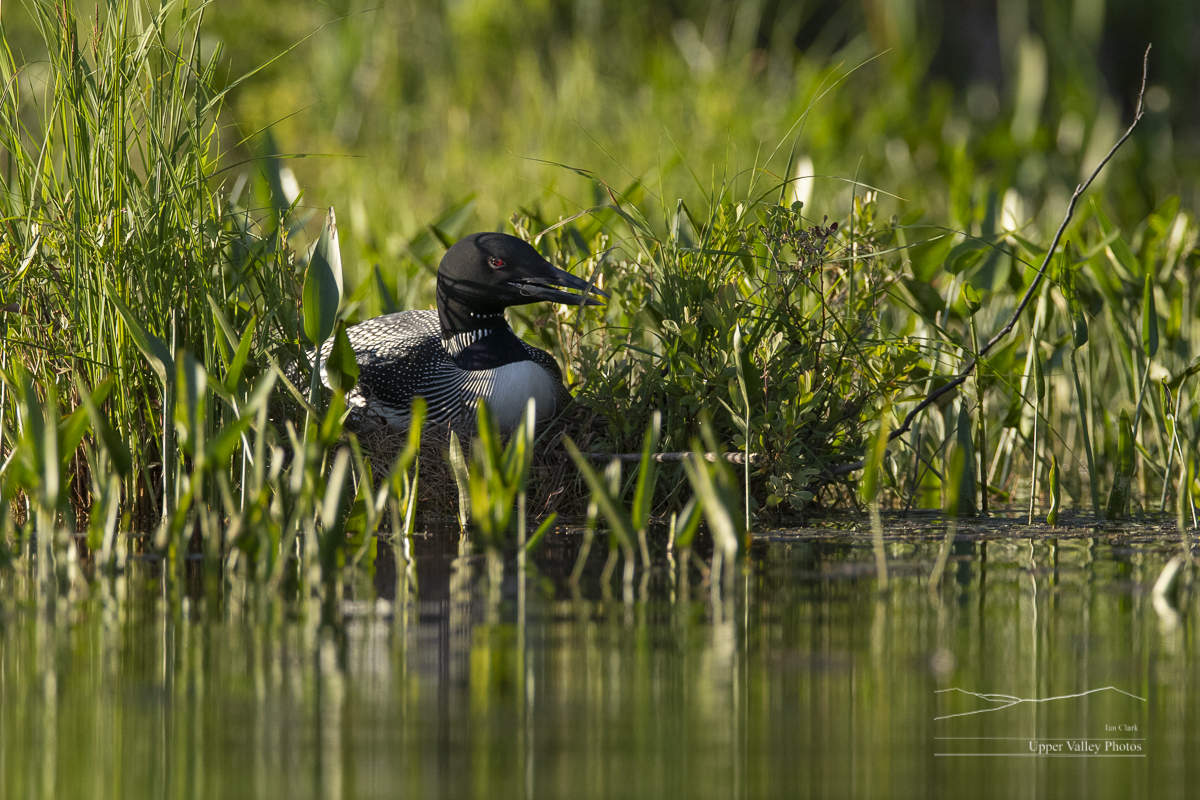
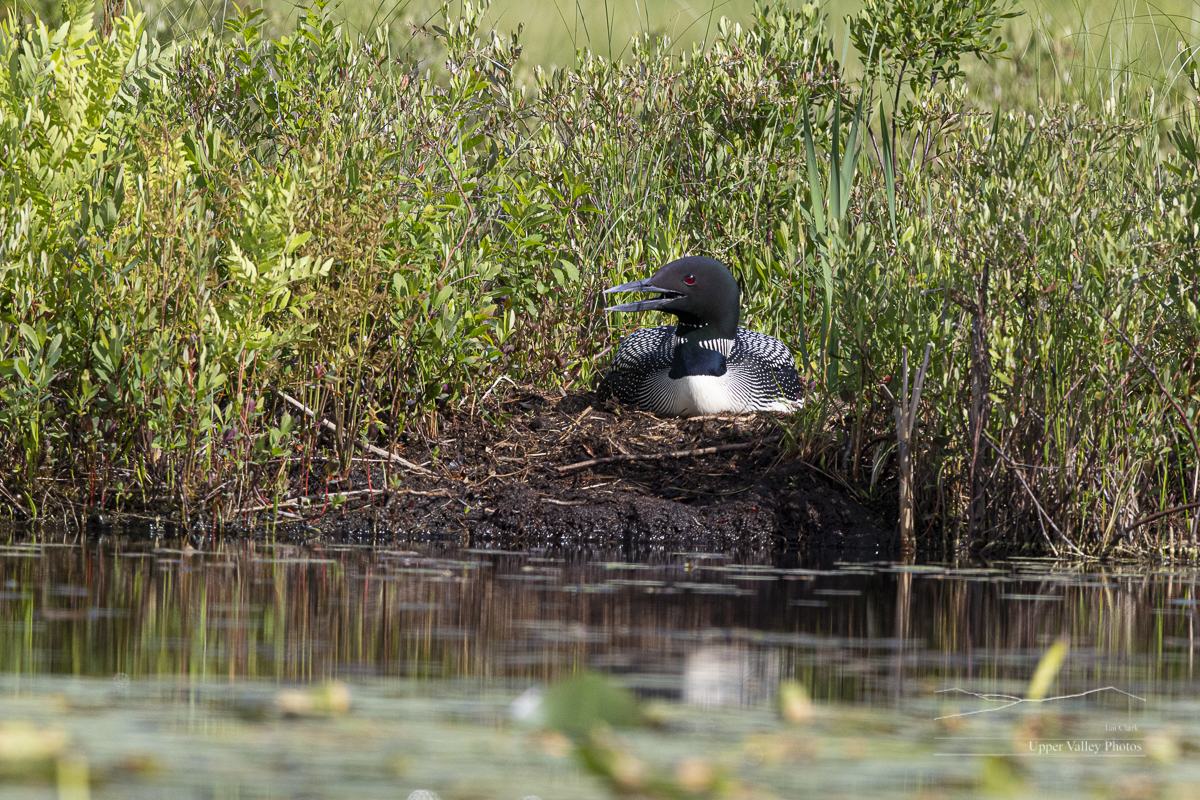
And, of course, no visit to the pond is complete without a couple photos of the loon stretching.
